







«Vogliamo giustizia sia per il corpo sia per l’anima».

Così scriveva Aldous Huxley in una raccolta di saggi pubblicata quasi un secolo fa. E mi sembra che questo suo richiamo valga tutt’ora, come dimostra l’ossessione dell’apparire e della bella immagine di sé a cui, in generale, non si lesinano energie, tempo e denaro.
Ma cos’è la bellezza, se non l’ombra artificiale dei sintomi della salute? Tutt’al più un’imitazione abbastanza buona da venire a volte scambiata per l’originale.
Si potrebbe immaginare che, in un domani, donne e uomini saranno tutti belli senza aiuti chimici e chirurgici, ma è cosa poco probabile perché come ribadisce Huxley, la bellezza non è solo una questione esterna, ma anche interna.
E spiega: «La bellezza di un vaso di porcellana è data dalla forma, dal colore, dalla grana. Il vaso può essere vuoto ed ospitare ragni, può essere pieno di miele o di fetida poltiglia: questo non altera minimamente la sua bellezza o bruttezza. Ma la donna è viva, e la sua bellezza non è dunque superficiale. La superficie del vaso umano è influenzata dalla natura del contenuto spirituale».
Sempre che, aggiungo io, l’AI non riesca in breve a sovvertire questo ordine naturale delle cose.
Comunque, dopo aver elencato vari tipi di bruttezza psicologica - stupidità, incoscienza, avidità…- il pensatore inglese mette in evidenza che “peccati” come questi, peccati capitali che negano la bellezza, appaiono spesso «sul viso di chi cerca di divertirsi in continuazione, lasciando trapelare una noia e un broncio che guastano tutto il fascino».
In pratica, dal punto di vista di un “esperto di porcellane”, ci sono persone bellissime; eppure, in verità, il loro viso, l’andatura e i gesti esprimono a tal punto svogliata indifferenza che risulta penoso guardarle.
In conclusione, Huxley non manca di offrirci una nota di speranza moderata: «Finché continueranno ad esserci queste dissonanze, finché esisteranno buoni motivi per provare noia e svogliatezza, finché gli esseri umani si lasceranno possedere e ossessionare da vizi monomaniacali, il culto della bellezza non avrà mai vero successo. [… ] Gli uomini e le donne saranno belli solo quando l’organizzazione sociale darà a tutti loro la possibilità di vivere in maniera completa e armoniosa…».
Il saggio di Huxley, dal titolo “The Beauty Industry”, è stato pubblicato a Londra nel 1931. Non ho pensato neanche lontanamente di emendare il testo in direzione di quel “politicamente corretto” tanto in auge di questi tempi, perché sono convinto che l’arte, degna di questo nome e in tutte le sue forme, sia più accettabile e convincente della realtà.
Mi scuso fin da adesso con coloro che non saranno d’accordo.
English text on https://packmedia.net/opinions/lavorini-you-want-beauty-march-2024
 Stefano Lavorini
Stefano Lavorini
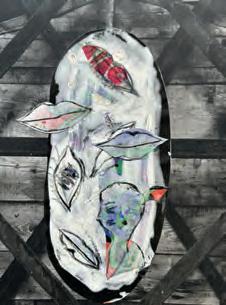
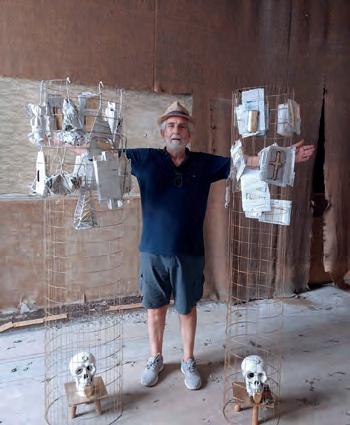
Originario di Comiso, nel ragusano, Salvatore Anelli (classe 1951) vive e opera in Calabria a Rende (CS). Le sue opere sono presenti nei musei e in collezioni pubbliche e private, in Italia e all’estero. La sua attività artistica è documentata in diverse pubblicazioni di carattere generale e monografico. Tra queste ricordiamo: Arte in Calabria 1960-2000, MAON Ediz. AR&S, Rende, 2005; Specchio alterato (testi di P. Aita) ed. Vertigoarte, Cosenza, 2007; Di catrame di anima (testi di P. Aita, L. M. Patella, P. Ruffilli, A. Basile) ed. Vertigoarte, Cosenza, 2009; Diversa/mente 365+1, di segno - di corpo - di anima (testi e poesie di C. Damiani, D. Pieroni, A. Schwarz, E. De Mauro, R. Gramiccia e P. Aita), ed. Rubbettino, Catanzaro, 2013; Trilogia: Le parole valgono, le città valgono e i teschi valgono, ed. Rubbettino, Catanzaro, 2018/19; Memoriae Rugae, ed. Favia, Modugno, 2022; Confine, ed. Printtaly, Bari, 2023.
La parola all’autore
Sculture vuote o forme in evoluzione… La lettura di un buon libro ti spinge ad uscire dal consueto e, per citare le parole di Italo Calvino, come un vecchio treno che ti avvolge di una nuvola di vapore, l’arte crea sensazioni di attesa e di frastuono, gioca con la profonda alchimia nei nostri sensi, suscitando smarrimento e giovamento.
Così come Le città invisibili di Calvino ci riportano a
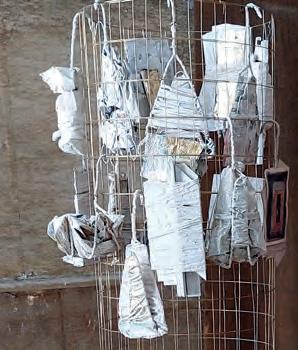
Originally from Comiso, in the Municipality of Ragusa, Salvatore Anelli (born 1951) lives and works in Calabria in Rende (CS). His works are featured in public and private museums and collections in Italy and abroad. His artistic activity is documented in various publications of a general and monographic nature. Among these, we can mention: Arte in Calabria 1960-2000, MAON Ediz. AR&S, Rende, 2005; Specchio alterato (texts by P. Aita) ed. Vertigoarte, Cosenza, 2007; Di catrame di anima (texts by P. Aita, L. M. Patella, P. Ruffilli, A. Basile) ed. Vertigoarte, Cosenza, 2009; Diversa/mente 365+1, di segno - di corpo - di anima (texts and poems by C. Damiani, D. Pieroni, A. Schwarz, E. De Mauro, R.
Gramiccia and P. Aita), ed. Rubbettino, Catanzaro, 2013; Trilogia: Le parole valgono, le città valgono e i teschi valgono, ed. Rubbettino, Catanzaro, 2018/19; Memoriae Rugae, ed. Favia, Modugno, 2022; Confine, ed. Printtaly, Bari, 2023.
In the artist’s own words Empty sculptures or evolving shapes… Reading a good book inspires you to break from the ordinary and, to cite Italo Calvino, like an old train that envelops you in a cloud of steam, art creates sensations of anticipation and uproar; it plays with the profound alchemy of our senses, arousing confusion and benefit.
una sorta di visione parallela del mondo, legata a una realtà da sogno inesistente ma presente nella nostra memoria, gli ultimi lavori realizzati per la mostra ai Quattro Canti, a Palermo, sono un viaggio in una mitologia atemporale che ci appartiene e che si mescola con l’utopia e la sofferenza popolare, ci proiettano in un “luogo magico” segnato da immagini, scritte e accumuli inquietanti emergenti dal nostro quotidiano.
L’unica dimensione temporale che ci appartiene davvero e che possiamo conoscere con certezza è il nostro passato […]. Le sculture, in cui i vuoti sovrastano i pieni, sono un sussurro del nostro essere nella storia, mentre gli elementi di cartone intrisi di materiale povero si riempiono di segni, tanti frammenti che, incastonati l’uno vicino all’altro, formano un mosaico di tessere impossibili da riarticolare nella nostra stessa mente ma capaci, nello spazio che li regge, di generare sentimenti ed emozioni che solo l’arte ci sa dare. I disegni in forma ironica e giocosa sono stati pensati, durante il mio soggiorno estivo a Kaucana, nel ragusano; ho utilizzato materiali poveri, cartoni di imballaggio, carte adesive trattati prevalentemente con carboncino nero e terre colorate e a mano a mano che le forme si definivano, nel loro essere, sulla materia mi sorgevano ulteriori riflessioni sul nostro modo di vivere e di essere nella contemporaneità […]. (Salvatore Anelli)


Calvino’s Invisible Cities take us back to a sort of parallel vision of the world, linked to a dream reality that does not exist but is present in our memory. Likewise, the latest works created for the exhibition at the Quattro Canti, in Palermo, are a journey into a timeless mythology that belongs to us and which mixes utopia and popular suffering; they project us into a “magical place” characterized by images, writings and disturbing accumulations emerging from our daily lives. The only temporal dimension which really belongs to us and which we can know with certainty is our past […]. The sculptures, in which the voids dominate the solid parts, are a whisper of our being in history, while the cardboard elements,
characterised by poor materials, are filled with signs, numerous fragments which, set next to each other, form a mosaic of tiles that are impossible to reorder in our minds but are able, in the space that holds them, to generate feelings and emotions that only art can give us. The ironic and playful designs were conceived during my summer trip to Kaukana, in the Ragusa area; I’ve used poor materials, packaging cardboard, adhesive papers treated mainly with black charcoal and coloured earth, and as the forms gradually defined themselves, in their being, on the material, further reflections came into my mind about our way of living and being in the contemporary world […].
(Salvatore Anelli) Salvatore Anelli
Maschera con labbra
Collage e pittura su carta
Salvatore Anelli
Maschera con labbra
Collage e pittura su carta


+ INTEGRATED TECHNOLOGIES
+ IN TUNE WITH MARKET NEEDS
+ ALL-IN-ONE SOLUTIONS
+ PIONEERING SUSTAINABILITY
+ TOMORROW’S BENCHMARK

Let’s Care is not just a commitment, it’s a guiding principle. IMA excels in cutting-edge technologies for processing and packaging a diverse range of personal care products, from cosmetics and perfumes to personal hygiene. In this journey, sustainability is prioritized with dedication. As a sole partner, our commitment goes beyond delivery, evolving into dedicated consultants and allies. Let’s Care is a call to action for customers to nurture their businesses by partnering with IMA.
Visit us at
COSMOPACK 2024
Bologna, Italy • Hall 19 PK - Stand No. A/10 - B/9PK
ima.it/personalcare


AGGIORNAMENTI / UPDATES
Stefano Lavorini
1 Acceleration Volete bellezza? Eccola
Salvatore Anelli
2 Behind the cover Maschera con labbra
8 Agenda Fachpack 2024
10 Powered by Best Packaging Dalla ricerca allo scaffale From Research to the Shelf

[ OPINIONI... ]
Maria Costanza Candi
21 Innovare la tradizione: AI, blockchain e sostenibilità nel lusso.
Parla Anna Maria Tartaglia
Innovating tradition: AI, blockchain and sustainability in the luxury world.
An interview with Anna Maria Tartaglia

[ A PROPOSITO DI... ]
MOCA
Marinella Vitulli
38 Aggiornamento, revisioni e nuove prospettive della legislazione sui
MOCA
Update, revisions and new perspectives of FCM legislation
[ MARKETING & DESIGN ]
Luciana Guidotti
11 Beauty: valori di innovazione I trend sullo sfondo di Cosmoprof e filo conduttore dell’evoluzione del mondo beauty. Le soluzioni tecnologiche di: Puntopack e MAV, Baralan, Eurovetrocap, Nastritex, Polo Cosmesi, New Cosmesy.
14 Beauty: innovation values Trends at the Cosmoprof event that will also act as a common thread in the evolution of the beauty world. Technological solutions.
20 News (Crocco, Icma)
Maria Costanza Candi, Luciana Guidotti
25 Materiali e tendenze nel packaging selettivo Interviste a Luxoro, Metsä Group, Crealis, Winter & Company, Fontana Grafica, Dimontonate Floccati, Dahlinger, Sappi Europe, Berlin Packaging, Favini, Guala Closures, Pozzoli Materials and trends in selective packaging.
MATERIALS & MACHINERY
Cosmopharma
57 Lid goffrati di alta gamma (Embatherm) High-end embossed lids
Stampa diretta su pack primario (OMSO)
Direct printing on primary packaging
Perfezione alle medie velocità (Gruppo IMA) Perfection at medium speeds
58 Una storia e un domani da raccontare (Marchesini) A history and a tomorrow to tell
59 Focus su riempitrice e monoblocco di tappatura (Omas Tecnosistemi)
Focus on filling machine and capping monobloc
[ FACTS & FIGURES ]
44 News (Ucima, Digital Industries World, LIUC, Banca Sella)
Barbara Iascone
45 Report sullo stato dell’imballaggio. Dati aggiornati a dicembre 2023
[ I NDUSTRY & MANAGEMENT ]
Stefano Lavorini
48 L’impronta dell’imprenditore (Nimax) The entrepreneur’s imprint
Milena Bernardi
52 Un bel posto dove lavorare (Davines Group) A good place to work
56 News (Coesia, Flexlink, Siegwerk, Greiner, Krones)

60 Axofill 40 + Axocap 40 (Axomatic)
Riempimento a peso netto: i vantaggi (Rejves Machinery) Net weight filling: the advantages
61 Dalle etichette autoadesive ai sistemi di etichettatura (Arca Etichette) From self-adhesive labels to labelling systems
62 Codici di qualità a protezione del brand (Markem-Imaje) Quality codes and brand protection
63 Etichettatrici: modulari e flessibili, sempre (Makro Labelling)
Labelling machines: always modular and flexible
65 Per una visione Data-driven del business (Holonix)
For a Data-driven business vision
67 Robot Delta per il cosmetico (Sipro)
Delta Robot for the cosmetics market
Innovazione per l’industria a SPS Italia
Innovation for industry at SPS Italia
Matteo Marconi
69 Cybersecurity: siamo pronti a difendere i dati?
Cybersecurity: are we ready to protect our data?
72 Advertisers & Company index
Direttore responsabile Stefano Lavorini
Condirettore Luciana Guidotti
Redazione Milena Bernardi, M. Costanza Candi
Traffico pubblicità salvatore.lavorini@kairosmediagroup.it
Hanno collaborato Barbara Iascone, Matteo Marconi, Marinella Vitulli
Traduzioni GEAR.it S.r.l.
Coordinamento artisti Max Marra & Gianni Valentino
Progetto grafico Studio Grafico Page, Novate Milanese (MI) e impaginazione Vincenzo De Rosa, R. Rossi
Fotolito e Stampa Ancora S.r.l. via B. Crespi 30, 20159, Milano
Numero 3/2024 Marzo 2024 anno 30
Pubblicazione iscritta al n. 555 del Registro di Cancelleria del Tribunale di Milano in data 22/10/94
Iscrizione nel Registro degli Operatori della Comunicazione n. 9673
Una copia: € 6,50 - Arretrati: € 13 00
Periodicità mensile
Abbonamento Italia € 50 Estero € 96 per un anno:
La riproduzione totale o parziale degli articoli e delle illustrazioni pubblicati su questa rivista è permessa previa autorizzazione della Direzione. La Direzione non assume responsabilità per le opinioni espresse dagli autori dei testi redazionali e pubblicitari
Kairos Media Group Srl
Via Fossa Buracchione 84 41126 Modena
Direttore editoriale Davide Miserendino
Redazione/sede operativa Via Benigno Crespi 30/2, 20159 Milano, Italia
T. +39 0269007733 redazione@packmedia.net
Sales team Massimo Chiereghin - m.chiereghin@kairosmediagroup.it
Silvia Lepore - s.lepore@kairosmediagroup.it
con la collaborazione di
UCIMA
Unione Costruttori Italiani Macchine Automatiche per il Confezionamento e l’Imballaggio

SOCIO EFFETTIVO ASSOCIAZIONE NAZIONALE EDITORIA DI SETTORE
Ai sensi del Regolamento Europeo sulla Protezione dei Dati 679/2016 (“GDPR”), del D.Lgs. 196/2013, del D.lgs. 101/2018 e delle successive modifiche e integrazioni, i trattamenti effettuati dal gruppo (U.C.I.M.Aproma-pack srl a socio unico - Kairos Media Group srl - MECS srl) saranno improntati ai principi di liceità, correttezza, trasparenza, limitazione delle finalità e della conservazione, minimizzazione dei dati, esattezza, integrità e riservatezza, nonché al principio di responsabilizzazione di cui all’art. 5 del Regolamento. Per consultare o rettificare i Vostri dati, o per opporvi alla ricezione della nostra rivista (art. 15-22 Regolamento Europeo 2016/679), potrete rivolgervi ai Titolari del trattamento, nelle società del gruppo UCIMA (U.C.I.M.A - proma-pack srl a socio unico - Kairos Media Group srl - MECS srl) scrivendo alla email del gruppo privacy@ucima.it.
nimax
La cura della tua Linea è l’unico disegno che abbiamo in mente.
QUANDO SCEGLIETE NIMAX, ACQUISTATE MOLTO PIÙ DI UNA TECNOLOGIA.

• Avete un intero sistema 4.0 che si integra perfettamente con la vostra linea di produzione e che dialoga con il vostro network.
• Siete supportati da un team di tecnici con grande esperienza nei diversi settori industriali in tutte le fasi valutative e operative.
• Usufruite di un servizio after sales che anticipa le vostre esigenze.
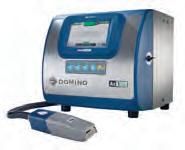


Roberta Pagan - r.pagan@kairosmediagroup.it Nicola Saracino - n.saracino@kairosmediagroup.it Elisa Verzelloni - e.verzelloni@kairosmediagroup.it www.italiaimballaggio.it


Esiste una geometria precisa nel sistema solare e ogni elemento interagisce in maniera perfetta con gli altri. Ispirandosi ai pianeti, PRATI costruisce le proprie macchine affinché ogni modello possa funzionare in armonia con l’ambiente e… “girare all’infinito”!


Metti PRATI al centro e raggiungi un’altra dimensione tra le infinite possibilità di varnishing, digital foiling, die-cutting, numbering, 100% quality inspection, rewinding&stacking…
PRATI, tutto un altro pianeta nella nobilitazione e finitura post stampa di etichette e packaging: oro a freddo, digital doming, fustellatura, sfridatura, ispezione, sovrastampa, taglio, ribobinatura, stacking e sheeting, per essere sempre un passo avanti nel futuro nei settori food&bevarage, wine&spirits, cosmetico, farmaceutico, chimico, logistica, promozionale e brand protection.
PRATI srl
via Deruda, 2 48018 Faenza (Ra) - Italy
+39 0546 633 811
info@praticompany.com
www.praticompany.com


PRATI USA LLC
12300 Ford Road - Suite 326
Dallas TX 75234 - USA
+1 913 908 8607
fhasselberg@praticompany.com
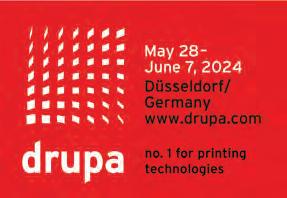
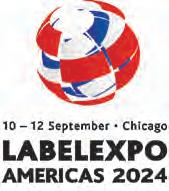
Plast Alger
Plastics and Composites
4-6/3/2024 Algiers (DZ) https://www.plastalger.com/
Printpack Alger Plastics and Composites 4-6/3/2024
Algiers (DZ)
https://www.printpackalger.com/
Mecspe Technologies for innovation 6-8/3/2024
Bologna (I)
https://www.mecspe.com/it/
Propak East Africa
Packaging, processing, printing, plastics 12-14/3/2024
Nairobi (KE)
www.propakeastafrica.com
Alimentaria Food exhibition
18-21/3/2024
Barcelona (E) https://alimentaria.com/en/
Anuga FoodTec
Food & beverage technologies
19-22/3/2024
Köln (D)
www.koelnmesse.it/anugafoodtec
Cosmopack
Cosmetics & perfumery packaging/ machinery & contract manufacturer 21-23/3/2024
Bologna (I)
https://www.cosmoprof.com/la-fiera/ cosmopack/
Cosmoprof Worldwide Bologna Cosmetics & perfumery industry 21-24/3/2024
Bologna (I) www.cosmoprof.com
Luxe Pack Shanghai
Luxury packaging
10-11/4/2024
Shanghai (PRC)
www.luxepackshanghai.com
Vinitaly Wine industry
14-17/4/2024
Verona (I)
www.vinitaly.com
Korea Pack International process and packaging exhibition
23-26/4/2024
Kintex, Korea (KR)
www.koreapack.org
Hispack
Packaging, process & logistics 7-10/5/2024
Barcelona (E)
www.hispack.com
Cibus
Food exhibition
7-10/5/2024
Parma (I)
https://www.cibus.it/
Luxe Pack New York
Luxury packaging 8-9/5/2024
New York (USA) www.luxepacknewyork.com
Venditalia International vending exhibition
15-18/5/2024
FieraMilano Rho (I) www.venditalia.com
Xylexpo
Woodworking technology & furniture supplies
21-24/5/2024
Milano Rho (I)
www.xylexpo.com
Pick&Pack
Innovación, tendencias, productos y soluciones específicas para cada segmento de la industria
21-23/5/2024
Madrid (ES)
https://www.pickpackexpo.com
Packaging Premiere & PCD Milan
Luxury packaging industry 21-23/5/2024
Milano (I)
https://www.packagingpremiere.it
Drupa
Print media industry
28/5-7/6/2024
Düsseldorf (D) www.drupa.de
SPS Italia
Industrial automation technology 28-30/5/2024
Parma (I) www.spsitalia.it
Édition Spéciale Luxe Pack Sustainable packaging solutions 4-5/6/2024
Paris (FR)
https://www.editionspeciale-luxepack. com/en/
Achema
Chemical engineering, environmental protection & biotechnology 10-14/6/2024
Frankfurt am Main (D)
www.achema.de
ProPak Asia
Total processing & packaging solutions 12-15/6/2024
Bangkok (TH)
www.propakasia.com
Propak West Africa
Packaging, processing, printing, plastics 10-12/9/2024
Lagos (NG)
www.propakwestafrica.com
FachPack
Packaging, printing & logistics 24-26/9/2024
Nürnberg (D) www.fachpack.de/en
Milano Beauty Week
La settimana dedicata alla cultura della bellezza e del benessere 25-29/9/2024
Milano (I)
https://www.milanobeautyweek.it/it/
Luxe Pack Monaco
Luxury packaging 30/9-2/10/2024
Montecarlo (MC)
https://www.luxepackmonaco.com
CPHI Europe
Pharmaceutical Industry 8-10/10/2024
Milano (I) www.cphi.com
All4Pack
Emballage & Manutention. The global marketplace for packaging, processing, printing & handling 4-7/11/2024
Paris (F)
www.all4pack.com
Simei
Salone internazionale Macchine per enologia e imbottigliamento 12-15/11/2024
Milano Rho (I) www.simei.it
Brau Beviale
Beverage technology 26-28/11/2024
Nürnberg (D) www.braubeviale.de
Marca by BolognaFiere
Private label conference & exhibition 15-16/1/2025
Bologna (I)
www.marca.bolognafiere.it
Pharmapack Europe
Drug delivery & packaging 22-23/1/2025
Paris (F)
www.pharmapackeurope.com
Paris Packaging Week
PCD + ADF + PLD + Packaging Premier 28-29/1/2025
Paris (F)
https://www.parispackagingweek.com/en/
Fruit Logistica
Trade fair for the fresh fruit and vegetable business 5-7/2/2025
Berlin (D)
https://www.fruitlogistica.it
Propak Philippines
Packaging materials & machinery 12-14/2/2025
Pasay City (PHL)
https://www.propakphilippines.com
24-26 settembre 2024, Norimberga (D)
n FACHPACK 2024
Mancano poco più di 6 mesi alla riapertura dei battenti di FACHPACK (organizzata da Nürnbergmesse GmbH), fiera europea dell’imballaggio, della tecnologia e dei processi, che offre una visione completa dell’industria del packaging. Il salone tornerà a Norimberga per 2 anni di seguito, dopo la pausa programmata nel 2023.
Ancora una volta accoglierà gli esperti dell’industria dell’imballaggio e dei suoi segmenti, ospitando aziende provenienti da tutta Europa.
Gli 11 padiglioni del comprensorio fieristico ospiteranno 1.400 espositori, pronti a discutere soluzioni di packaging all’avanguardia e fare affari con gli oltre 35.000 visitatori previsti.

24-26 September 2024, Norimberg (Germany)
FACHPACK 2024
There are just over 6 months to go until the reopening of FACHPACK, the European packaging, technology and processes trade fair, which offers a complete vision of the packaging industry. The fair returns to Norimberg for two consecutive years, after the planned pause in 2023.
It will once more be welcoming experts in the packaging industry and its segments, hosting companies coming from throughout Europe; the 11 pavilions of the trade fair district will be hosting 1,400 exhibitors, ready to discuss cutting-edge packaging and do business with the over 35,000 expected visitors.
www.italiaimballaggio.it


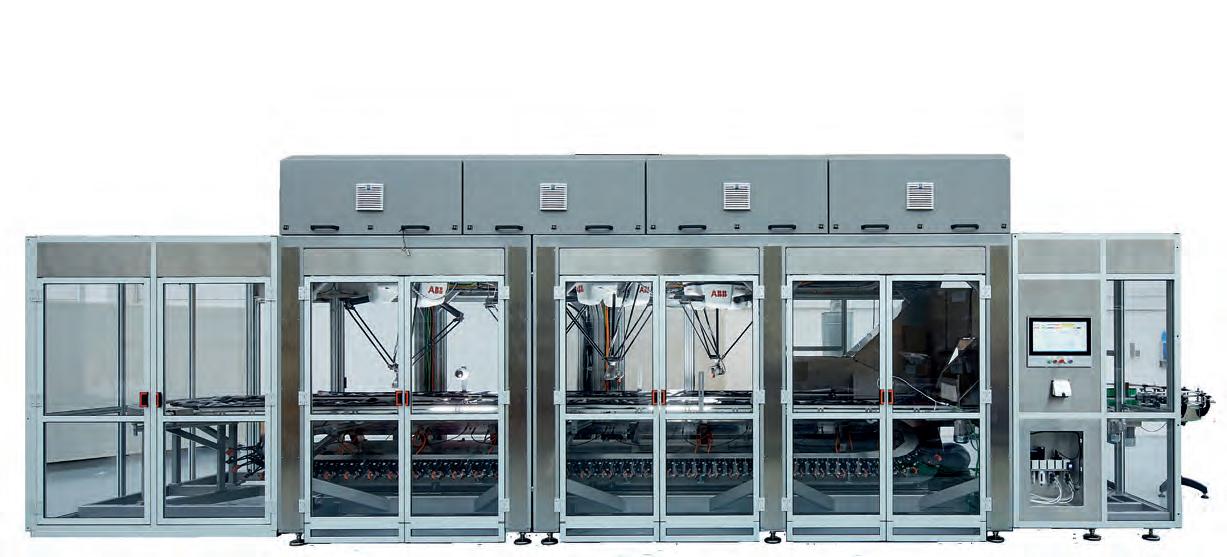
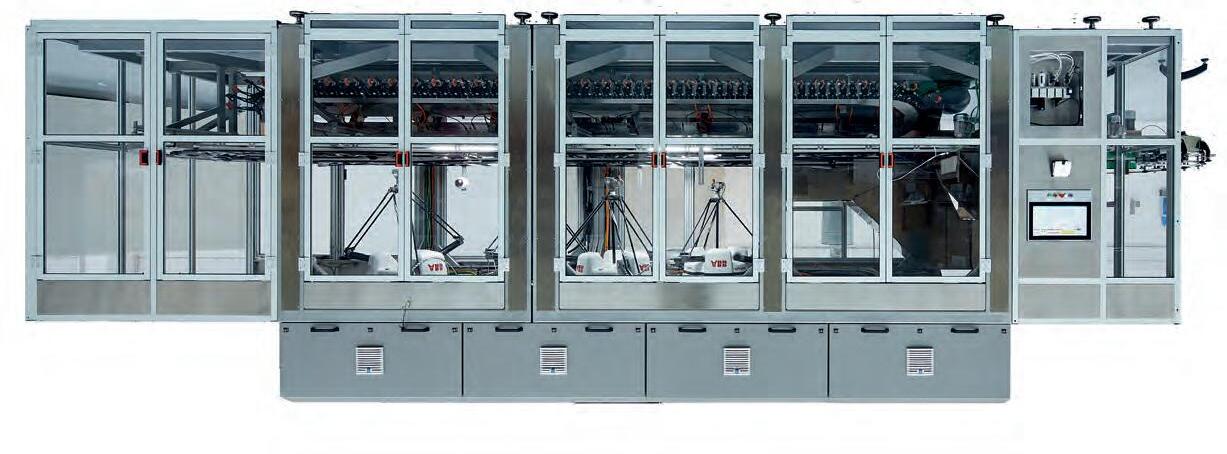
Vetrina di soluzioni di imballaggio per comunicare, proteggere e distribuire i prodotti di uso comune.
PREMI A LA SPUMANTE. La prima bottiglia in PET per vino frizzante targata Sipa - La Spumantesostituisce perfettamente la tradizionale versione in vetro offrendo, in aggiunta, numerosi vantaggi. Il design pratico e leggero garantisce un’elevata funzionalità e contribuisce a ridurre sia i costi di trasporto che l’impronta di carbonio: il peso della bottiglia in PET raggiunge i 90 g max contro i 720/750 dell’equivalente in vetro. È inoltre completamente riciclabile, in linea con gli obiettivi di sostenibilità ambientale di Sipa. Il semplice processo di riempimento della bottiglia in PET, compatibile con le linee esistenti per il vetro, semplifica la fase dell’imbottigliamento, garantendo efficienza senza compromettere la qualità. Inoltre, la sua straordinaria shelf-life di 24 mesi aggiunge convenienza sia per i produttori che per i consumatori.
Numerosi i premi vinti da La Spumante: gli ultimi, in ordine di tempo, quelli ottenuti al Worldstar 2024 nelle categorie Bevande Alcoliche e Materiali e Componenti per l’Imballaggio.
AWARDS TO LA SPUMANTE. The first bottle in PET for sparkling wine developed by Sipa - La Spumanteperfectly replaces the traditional version in glass, offering, in addition, numerous advantages. The practical and light design guarantees high functionality and contributes to reducing both transport costs and the carbon footprint: the weight of the PET bottle reaches max 90 g against 720/750 of the equivalent glass bottle. It’s also completely recyclable, in line with Sipa’s environmental sustainability goals. The simple filling process of the PET bottle, compatible with existing lines for glass, simplifies the bottling phase, ensuring efficiency without compromising on quality. What is more, its extraordinary 24-month shelf-life adds convenience both for producers and for consumers.

La Spumante has won numerous awards: the most recent, obtained at Worldstar 2024 in the Alcoholic Beverages and Packaging Materials and Components categories.
UN KITKAT A SFONDO SOCIALE. Nestlé ha lanciato “Breaks for Good”, il primo KitKat prodotto con massa di cacao proveniente da fave coltivate da famiglie di agricoltori che prendono parte al progetto Nestlé Income Accelerator, un programma avviato nel gennaio 2022 ad alto valore sociale.
L’iniziativa ha già sostenuto più di 10.000 famiglie in Costa d’Avorio e, quest’anno, si sta espandendo in Ghana per arrivare a coinvolgere un totale di 30.000 famiglie. Entro il 2030 il Gruppo stima di riuscire a intercettarne circa 160.000. Nestlé ha
VALUE.
Nestlé has launched “Breaks for Good”, the first KitKat produced with cocoa mass coming from beans cultivated by farming families taking part in the Nestlé Income Accelerator project, a programme set up in January 2022 with a high social value. The initiative has already supported over 10,000 families
EFFETTO WOW NEL PACKAGING PER L’ORTOFRUTTA.
È la nuova cassetta di Melanzì per i peperoni Sweet Palermo la confezione vincitrice della prima edizione del Best Fruit&Veg Box, il contest ideato dal Consorzio Bestack e promosso in partnership con myfruit.it, dedicato ai packaging in cartone ondulato più innovativi e di grande effetto. La nuova cassetta è in cartone ondulato riciclabile e certificato nell’utilizzo di risorse a basso impatto ambientale. Un QR code invita il consumatore a scoprire il prodotto e tutte le sue proprietà, con consigli per utilizzarlo al meglio in cucina. Il layout è semplice e innovativo: alla confezione tradizionale di trasporto è stato aggiunto un coperchio intagliato che protegge e, al contempo, mostra il prodotto. All’arrivo sul punto vendita, questo si sfila, si piega e si incastra sulla testata della confezione, diventando così un crowner efficace. Secondo la giuria, infatti, Melanzì si aggiudica il premio del contest “per avere integrato le esigenze logistiche e di trasporto,
The good ideas
From Research to the Shelf
Powered by Best Packaging
Istituto Italiano Imballaggio
Monthly showcase of packaging solutions to communicate, protect and distribute commonly used products.
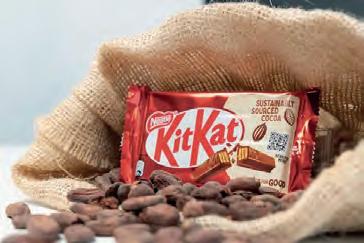
trasformato il suo sistema di approvvigionamento di cacao proveniente da Income Accelerator, ottenendo la piena tracciabilità e segregazione fisica del cacao. Entro la metà del 2024, inoltre, Nestlé prevede di utilizzare burro di cacao segregato per tutta la produzione KitKat in Europa per poi estendere l’impegno ad altre regioni. Il nuovo “Breaks for Good” è disponibile sugli scaffali da gennaio in 27 paesi europei, tra cui l’Italia.
in the Ivory Coast and, this year, is expanding into Ghana to involve a total of 30,000 families. By 2030 the Group expects to be able to involve around 160,000 families. Nestlé has transformed its system for the procurement of cocoa from Income Accelerator, obtaining full traceability and physical segregation of
espositive e di miglioramento della visibilità del brand in punto vendita, in un’unica soluzione di pack”.
“WOW” EFFECT IN FRUIT AND VEGETABLE PACKAGING.
Melanzì’s new box for Sweet Palermo peppers is the winning packaging in the first edition of Best Fruit&Veg Box, the competition conceived by the Bestack Consortium and promoted in partnership with myfruit.it, dedicated to the most innovative and attractive corrugated cardboard packaging ideas. The new corrugated cardboard box is certified for the use of low environmental impact resources. A QR code invites the consumer to find out about the product and all its characteristics, with advice for the best
the cocoa. By the middle of 2024, moreover, Nestlé expects to use segregated cocoa butter for its entire KitKat production in Europe to then extend its commitment to other regions.
The new “Breaks for Good” has been available on shop shelves since January in 27 countries, including Italy.
way to use it in the kitchen. The layout is simple and innovative: an incised lid has been added to the traditional transport package which protects and, at the same time, reveals the product. Upon arrival at the point of sale, it comes off, folds and fits on the top of the package, thus becoming an effective crowner.
According to the jury, in fact, Melanzì won the award “for having integrated logistics, transport, needs and the improvement of the visibility of the brand in the point of sale in a unique pack solution”.
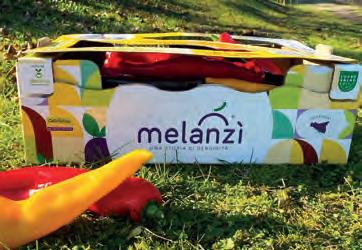

Secondo il “Report Beauty 20232027” della società di analisi McKinsey & Company, l’industria cosmetica mondiale vale 427 miliardi di dollari: un fatturato destinato ad aumentare del 6% annuo, fino a raggiungere i 580 miliardi nel 2027. In questo scenario “ad alta competitività”, Cosmoprof Worldwide Bologna continua a giocare una funzione fondamentale nel supportare aziende e operatori a sviluppare il proprio business. E lo fa non solo mettendo in campo servizi di prim’ordine, ma anche raccogliendo e sistematizzando i motivi che animeranno il mercato nel prossimo futuro.
A cura di Luciana Guidotti
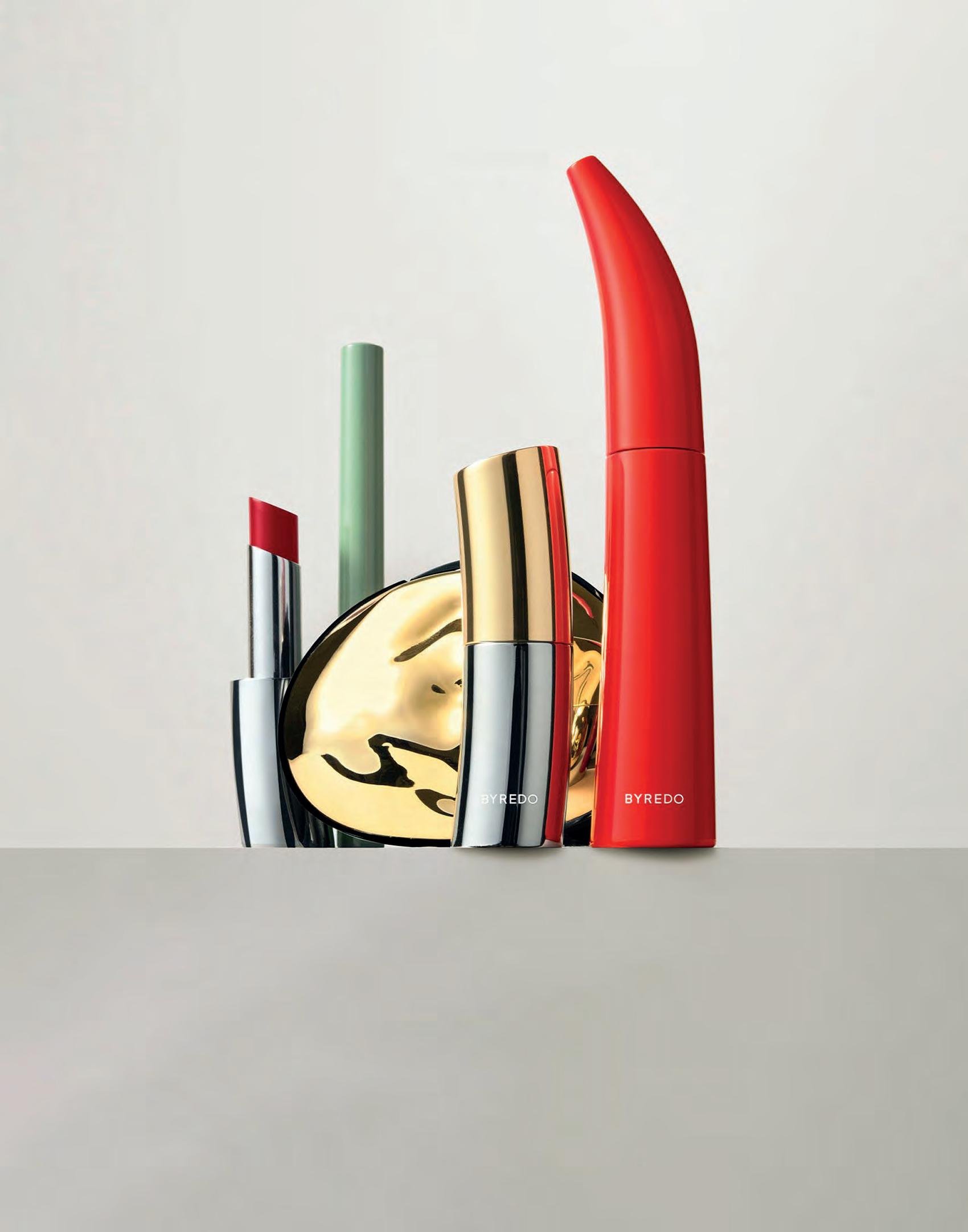
INSIEME PER L’AMBIENTE, COMPLEMENTARI
PER IL PACKAGING

Puntopack e MAV partecipano a Cosmopack (Hall 20 - C28) proponendo la propria idea di packaging sostenibile e personalizzato per forme, colori e materiali (PET, rPET, LDPE, HDPE, PP, SAN, vetro). Il 2023 è stato un anno molto importante per il gruppo emiliano, che ha potuto superare il traguardo dei 50 milioni di euro in virtù di una crescita di oltre il 20% a livello di fatturato consolidato. Un risultato, questo, avvalorato dall’ampliamento della gamma produttiva (flaconi e vasi wide mouth per il confezionamento di prodotti cosmetici, nutraceutici farmaceutici e relativi complementi) ottenuto sia grazie all’inserimento di nuove risorse tecnologiche sia a nuove alleanze, messe in campo per migliorare ulteriormente il livello di servizio offerto ai clienti. Come anticipa Roberto Nisica, presidente di PuntoPack e MAV «A Cosmopack esporremo tutti gli esempi che testimoniano la capacità realizzativa, progettuale ed esecutiva del gruppo. Sarà un grande onore e un privilegio poter incontrare in fiera i clienti acquisiti e i potenziali, che ci offriranno sicuramente ulteriori stimoli alla crescita e all’innovazione».




Nota. Alcune immagini di questo articolo sono tratte dal Report Beauty 2023-2027 di McKinsey & Company
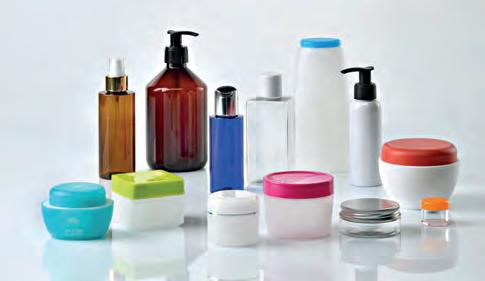
Nel seguito, una sintesi dei trend sullo sfondo della manifestazione fieristica e che faranno da filo conduttore all’evoluzione del mondo beauty, partendo dalle soluzioni tecnologiche, passando per le abitudini di consumo e dagli orientamenti del mercato, per arrivare al marketing e alla comunicazione.
INNER CUPS: NUOVE RICARICHE PER LO SKINCARE
Baralan sviluppa, produce e personalizza contenitori in vetro e plastica, con i relativi accessori, per i prodotti di cosmetica e profumeria. Sviluppate con un costante impegno per ampliare la proposta di un confezionamento attento alla sostenibilità, le nuove Inner Cups di Baralan in mostra in fiera sono ispirate dalle ultime tendenze di mercato, sempre più focalizzate su soluzioni ricaricabili.
Studiate per il refill di vasetti di vetro e adatte a prodotti skincare, sono disponibili con capacità di 30 ml e 50 ml; possono essere combinate con i Maria Jars da 50 ml e 75 ml, vasi dal collo largo che massimizzano la facilità d’uso e consumo del prodotto di bellezza. Per maggiore comodità, è possibile abbinare uno specifico disco di protezione per preservare l’integrità del prodotto. Con un design rinnovato che bilancia comfort e responsabilità ambientale, le nuove Inner Cups promuovono la possibilità di ricaricare i vasetti in vetro e di utilizzare materiali alternativi come PCR. Possono essere prodotte in diversi colori, ottimizzando l’utilizzo del packaging per diverse soluzioni di formula. (Cosmopack, Hall 18 - D32)
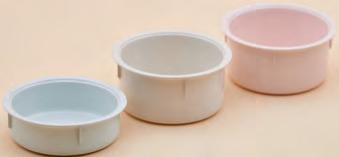
lavorazione degli ingredienti secondo la cosiddetta “green chemistry”, la biotecnologia, l’agricoltura indoor, ingredienti provenienti da processi di riciclo… E ancora, attenzione a un uso più consapevole dell’acqua (non solo con formulazioni che prevedono l’impiego di un minor quantitativo di acqua, ma che aiutano i consumatori a ridurne l’utilizzo in fase di consumo di un determinato prodotto) fino ad arrivare alle soluzioni di imballaggio di ultima generazione: packaging ricaricabili, imballaggi e dispenser monomateriale, programmi di ritiro e riciclo dei contenitori, tecnologia antiattrito. Siamo in una nuova dimensione del packaging cosmetico che, lungi dall’essere un elemento superfluo, vive oggi un nuovo sviluppo con un’industria di primo livello che si adopera per raggiungere la circolarità.

• Tecnologia e AI. L’industria cosmetica sta vivendo una fase di profonda trasformazione guidata dalla tecnologia: dal virtual Try-On (simulazioni virtuali) all’utilizzo dell’Intelligenza Artificiale nei processi produttivi e nella tracciabilità dei prodotti cosmetici, dai nuovi canali di distribuzione - come il live & social shopping - alle innovazioni di bio-tech dei nuovi materiali per l’industria cosmetica, fino alla nuova dimensione nel metaverso.
• Sostenibilità 5.0. L’industria cosmetica è pioniera nella ricerca e sviluppo di nuovi ingredienti, formulazioni e processi per ridurre al minimo l’impatto ambientale della produzione, lanciando sul mercato proposte in linea con i principi dell’economia circolare. Tra le tematiche di maggiore attualità spiccano, in questo senso, l’approvvigionamento e la
[LINEA LIGHT: ARMONIA DELL’ECODESIGN
Con il lancio della linea Light, Eurovetrocap si distingue ancora una volta per l’impegno a offrire soluzioni in vetro all’avanguardia, confermando l’attenzione all’ecodesign.
La forma semplice e cilindrica del contenitore, con una base arrotondata che aggiunge raffinatezza, soddisfa le esigenze del settore skincare. La gamma include anche due flaconi da 15 e 30 ml e un vaso da 50 ml. I flaconi, alleggeriti rispettivamente del 15% e del 22%, sono abbinabili a un’ampia scelta di accessori, quali la pompa dispenser XS, il nuovo contagocce Make Up o la capsula dello stesso nome.

Il vaso, più leggero del 30% rispetto al vaso Laurence 50, cade a filo con il coperchio Stefy 50, creando un packaging armonioso adatto a tutti i tipi di creme.
Elegante e versatile, la linea Light di Eurovetrocap unisce ecodesign, estetica e funzionalità. In visione a Cosmopack, Hall 18 - F28
• Iper-personalizzazione e apertura a nuovi mercati. Il consumatore chiede prodotti specifici per le proprie necessità. Ogni tipologia di pelle e di capello deve poter trovare riscontro in trattamenti e proposte adatte. Questa tendenza apre a nuovi scenari di sviluppo per i brand in mercati definiti ancora in crescita o da esplorare, come ad esempio l’Africa e il Sud-Est asiatico.
In queste aree geografiche la diffusione dei moderni mezzi di comunicazione permette anche una maggiore consapevolezza del consumatore locale. Sono ancora molto forti i brand “domestici”, ma l’esposizione digitale dei consumatori più giovani può facilitare l’ingresso in mercati emergenti anche di multinazionali, in grado di proporre collezioni adatte alla popolazione locale, alle caratteristiche climatiche e geografiche, alla cultura e alle tradizioni delle singole aree.
• Diversità e inclusione. Non esistono più tabù legati al genere, all’età o alle capacità psico-fisiche dei consumatori. Temi come il riconoscimento delle diverse identità sessuali ed espressioni di genere o l’attenzione alle necessità dei consumatori con disabilità, per una maggiore accessibilità dei prodotti beauty, sono all’ordine del giorno per i brand e gli sviluppatori di un prodotto cosmetico. Il mercato offre soluzioni adatte a ciascuna esigenza, e le nuove tecnologie permettono anche il lancio di nuove soluzioni in termini di formulazione, packaging userfriendly e trattamenti.

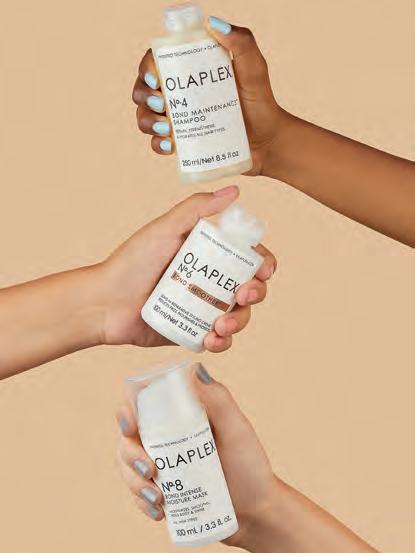
Technological Textile Factory
Quest’anno a Cosmopack, NastriTex - produttore leader di nastri per la compattatura - presenta le capacità della nuova divisione TexFactory, cui ha dato vita nel 2023: una “fabbrica tessile tecnologica” nata dalla strategia di integrazione verticale di uno storico partner esterno, che consentirà di rinnovare ulteriormente l’impegno verso l’eccellenza e la qualità dei materiali per la pressatura delle polveri cosmetiche.
Numerosi i motivi alla base della nascita di TexFactory, a partire da una più stretta sinergia con il NastriTex Lab (la divisione dedicata alla ricerca e allo sviluppo di nuove soluzioni e materiali su misura, sempre più orientata ai temi della sostenibilità), per creare così un percorso completo da proporre ai clienti.
Sul piatto anche la sempre maggiore affidabilità nell’approvvigionamento delle materie prime necessarie a realizzare i nastri di compattatura, vitale per garantire la continuità operativa dei produttori di cosmetici e make-up, nonché il desiderio di preservare il Made in Italy, contribuendo alla crescita e alla prosperità del territorio.
In pratica, l’aver portato al proprio interno la produzione e il controllo qualità consentono oggi a NastriTex di gestire tutte le fasi cruciali del processo industriale. (Cosmopack, Hall 19 - C14)
• Pro-ageing, o la fine dell’anti-ageing. Con l’aumento costante dell’età media della popolazione in tutto il mondo, il concetto di invecchiamento nel corso degli ultimi anni ha subito una netta revisione. Combattere l’invecchiamento è un concetto anacronistico, e l’industria cosmetica da anni propone prodotti che non contrastano il naturale invecchiamento, ma proteggono pelle e capelli, migliorandone l’aspetto e salvaguardandone lo stato di salute. Da questa necessità di accettazione delle generazioni più mature nascono anche linee dedicate a quelle che fino a poco tempo fa erano categorie poco considerate dal mercato, come le donne in menopausa e i consumatori over-60.

• Storytelling, value proposition e nuove generazioni. Le nuove generazioni saranno i consumatori di domani: come comunicare con loro, e come fidelizzarli? Questa è la sfida dei brand oggi, che devono adattarsi a nuovi sistemi e strumenti di comunicazione digitale, ma al contempo devono rispondere alla pressione mediatica su temi di rilevanza sociale sempre più importanti per i giovani. Un brand che non espone chiaramente i propri valori, che non si schiera apertamente nell’ambito delle questioni so-
ciali più attuali, che non impara a utilizzare lo stesso linguaggio e gli stessi mezzi di comunicazione delle generazioni più giovani non può attirare la loro attenzione.
• Wellness e benessere. Stanno acquistando sempre più valore le proposte e i marchi con un approccio olistico, con trattamenti che aumentano il benessere psico-fisico, e di conseguenza l’autostima e l’accettazione di sé. Come evidenziato nel già citato report 2023-2027 McKinsey & Company, il comparto relativo al wellness vale 1.500 miliardi di dollari su scala mondiale, con una previsione di crescita annua fino al 2027 che può raggiungere il 10%. L’attenzione al wellbeing e al benessere porta a nuovi protagonisti nel dialogo tra consumatori e brand. In primis, cambiano gli interlocutori di fiducia, gli “influencer” ai quali chiedere consigli e referenze. Operatori olistici, ma anche dermatologi, biologi e professionisti scientifici sono gli ambassador più rinomati. Cambiano anche i canali di distribuzione e gli spazi fisici di interazione. Sono in crescita le aree dedicate al wellness all’interno dei principali retailer mondiali, e aumentano anche le attività che coinvolgono spa, hotel e cliniche in rituali e trattamenti di benessere per corpo e mente.
Il Polo della Cosmesi è l’Associazione di riferimento della filiera produttiva cosmetica (che raggruppa quasi 100 aziende “conto terzi”. L‘associazione nasce con l’obiettivo di promuovere il Made in Italy cosmetico italiano, stimolare il dialogo fra le imprese della filiera e di favorirne lo sviluppo internazionale tramite la partecipazione alle fiere di settore.

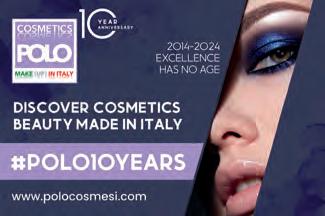
A Cosmopack 2024, il Polo celebra i suoi “primi 10 anni” di attività e sarà presente con 41 aziende associate, 11 delle quali inserite in due collettive nei padiglioni 20 e 19 PK distribuite su quasi 200 metri quadrati di superficie. Per la sua forte radicalizzazione sul territorio, unita alla vocazione internazionale, il Polo si pone come il partner ideale per tutte le aziende che vogliono fare network d’impresa e distinguersi nel panorama cosmetico internazionale con prodotti di elevata qualità, innovativi, vere eccellenze del “sapere fare” italiano.

FRAGRANZE E PACKAGING NASCONO DALLA PASSIONE New Cosmesy è una azienda manifatturiera italiana, consolidata nel panorama della profumeria artistica e della produzione di fragranze di alta qualità in private label da oltre 30 anni. Molto più di un “produttore di profumi”, New Cosmesy ama proporsi come una vera e propria Creative Perfume Factory, impegnata a trasformare le visioni dei clienti in prodotti visionari e di successo. Uno dei suoi servizi distintivi è infatti il “Full Service”, che offre un supporto completo e personalizzato in tutte le fasi della produzione di profumi, distinguendosi per l’attenzione ai dettagli e per la capacità di adattarsi alle esigenze specifiche di ogni cliente, garantendo ovviamente rigorosi controlli di qualità: dall’ideazione e creazione della fragranza alla progettazione e produzione del packaging, contribuisce alla costruzione del marchio e della sua identità visiva, per arrivare alle fasi di riempimento e confezionamento del prodotto finito.
New Cosmesy (Cosmopack, Hall 18 - F15) mette dunque in campo una non comune capacità di collaborare con i clienti per sviluppare soluzioni su misura, che riflettano perfettamente la loro identità di marca e soddisfino le loro esigenze commerciali.
According to the “Beauty 2023-2027 Report” by the consultancy firm McKinsey & Company, the global cosmetics industry is worth 427 billion dollars: this figure is expected to grow by 6% per year until reaching 580 billion in 2027. In this highly competitive scenario, Cosmoprof Worldwide Bologna continues to play a fundamental role in helping companies and operators to develop their business. And it does this not just by offering top-class services, but also by understanding and analysing on the trends that will drive the market in the near future.
Below is a review of the underlying trends at the trade fair event that will act as a common thread in the evolution of the beauty world, ranging from technological solutions to consumer habits and from market orientation to marketing and communication.
• Technology and AI. The cosmetics industry is going through a period of great change driven by technology: from virtual Try-Ons to the use of Artificial Intelligence in production processes and in the traceability of cosmetic products, from new distribution channelssuch as live and social shopping - to bio-tech innovations of new materials for the cosmetics industry
and to the new metaverse dimension.
• Sustainability 5.0. The cosmetics industry is a pioneer in the research and development of new ingredients, formulations and processes to minimise the environmental impact of production, launching on the market products in line with the principles of the circular economy.
NOTE. Some images are taken from “Beauty 2023-2027 Report” by the McKinsey & Company consultancy firm.

TOGETHER FOR THE ENVIRONMENT, COMPLEMENTARY FOR PACKAGING
Puntopack and MAV are taking part in Cosmopack (Hall 20 - C28), offering their idea of sustainable and customized packaging in terms of shapes, colours and materials (PET, rPET, LDPE, HDPE, PP, SAN, glass).
2023 was a very important year for the Emilia-based group, in which it managed to exceed the consolidated turnover milestone of 50 million euros thanks to a more than 20% growth.
It’s a result which, supported by the expansion of the production range (bottles and wide-mouth jars for the packaging of cosmetic products, pharmaceutical nutraceuticals and related complements), obtained both thanks to the introduction of new technologies and to new alliances set up to further improve the level of service
Major current themes in this sense include the procurement and processing of ingredients according to so-called “green chemistry”, biotechnology, indoor agriculture, ingredients coming from recycling processes… In addition, there is attention to a more conscientious use of water (not only with formulations that involve the use of lower quantities of water, but also which help consumers to reduce its use when consuming a particular product) and, finally, latestgeneration packaging solutions: refillable packaging, single-material packaging and dispensers, takeback programmes and the recycling of containers and anti-friction technologies. We are in a new dimension of cosmetics packaging which, far from being a superfluous element, is today experiencing further development with a top-level industry working to achieve circularity.

• Hyper-personalisation and the opening of new markets. Consumers are demanding products specific to their needs. Suitable treatments and proposals have to be found for every skin and hair type. This trend opens up new development scenarios for brands in
offered to customers.
As Roberto Nisica, chairman of PuntoPack and MAV has anticipated, «At Cosmopack we will be exhibiting all the examples that testify to the group’s creative, planning and executive capacity. It will be a great honour and privilege to be able to meet already-acquired and potential customers in the show, which will certainly offer us further stimuli for growth and innovation».
Baralan develops, produces and customises glass and plastic containers, together with the relative accessories, for cosmetics and perfumery products. Developed with a constant commitment to expand the proposal of packaging that pays attention to sustainability, the new Baralan’s Inner Cups on show in the fair are inspired by the latest market trends, increasingly focused on refillable solutions.

Designed for refills of glass jars and suitable for skincare products, they are available in 30 ml and 50 ml sizes; they can be combined with the 50 ml and 75 ml Maria Jars, wide-necked jars that maximize the ease of use and consumption of the beauty product. For greater convenience, it’s possible to use a specific protection disc to preserve the integrity of the product. With a renewed design that balances convenience and environmental responsibility, the new Inner Cups promote the refilling of glass jars and of using alternative materials such as PCR. They can be produced in different colours, optimising the use of packaging for different formula solutions. (Hall 18 - D32)
With the launch of the Light line, Eurovetrocap once more stands out for its commitment to offer cutting-edge glass solutions, confirming its attention to eco-design.
The simple cylindrical shape of the container, with a rounded base that adds refinement, meets the demands of the skincare sector.

The range also includes two 15- and 30-ml bottles and a 50 ml jar. The bottles,

lighter by 15% and 22% respectively, are combinable with a wide range of accessories, such as the XS pump dispenser, the new Make Up dropper or the capsule of the same name. The jar, 30% lighter compared to the Laurence 50 jar, is a perfect fit for the Stefy 50 lid, creating a harmonious packaging suited to every type of cream.
Elegant and versatile, Eurovetrocap’s Light line combines eco-design, aesthetics and functionality. On display at Cosmopack, Hall 18 - F28
This year at Cosmopack, NastriTex - the leading producer of cosmetic pressing ribbons - presents the capabilities of
defined markets still growing or to be explored, such as, for example, Africa and South-East Asia. In these geographical areas the spread of modern means of communication allows for greater awareness of local consumers. The “domestic” brands are still very strong, but the digital exposure of younger consumers can facilitate the entrance into emerging markets also of multinationals, able to offer collections adapted to the local population, climate and geographic characteristics, and to the local culture and tradition of particular areas.
• Diversity and inclusion. There are no longer taboos linked to gender, age or the psycho-physical capabilities of consumers. Themes such as the recognition of different sexual identities and gender expressions or attention to the needs of consumers with disabilities, for greater accessibility to beauty products, are the order of the day for brands and cosmetic product developers. The market offers solutions adapted to each need, and the new technologies also permit the
Technological Textile Factory
the new TexFactory division, which it set up in 2023: a “technological textile factory” arising as a result of the vertical integration strategy of an historic external partner, which will make it possible to further renew the company’s commitment to the excellence and quality of materials for the compacting of cosmetic powders.
There are numerous reasons behind the setting up of TexFactory, starting from a closer synergy with the NastriTex Lab (the division dedicated to the research and development of new tailored solutions and materials, increasingly oriented towards sustainability issues), in order to create a complete process to propose to customers.
Also on offer is the ever-increasing reliability in the supply of raw materials necessary for manufacturing the pressing ribbons, vital for guaranteeing the operating continuity of cosmetics and make-up producers, as well as the wish to preserve Made in Italy, contributing to the growth and prosperity of the territory.
In practice, bringing production and quality control in-house allows NastriTex
launch of new solutions in terms of formulation, user-friendly packaging and treatments.
• Pro-ageing, or the end of antiageing. With the constant increase in the average age of populations throughout the world, the concept of ageing has changed significantly in recent years. Fighting ageing is now an out-of-date concept, and the cosmetics industry has for some years been offering products that don’t contrast natural ageing, but protect the skin and hair, improving appearance and safeguarding health. The need for acceptance on the part of the more mature generations has given rise to lines dedicated to what until recently were categories little considered by the market, such as women in menopause and consumers over 60.
today to manage all the crucial phases of the industrial process. (Hall 19 - C14)
New Cosmesy is an Italian manufacturing company, well-established in the field of artistic perfumery and in the production of high-quality private label fragrances for over 30 years.
Much more than a “perfume producer”, New Cosmesy likes to present itself as an authentic Creative Perfume Factory, committed to transforming customers’ visions into successful visionary products. One of its distinctive services is, in fact, the “Full Service”, which offers a complete and personalised support in all the perfume production phases, standing out for attention to detail and for the

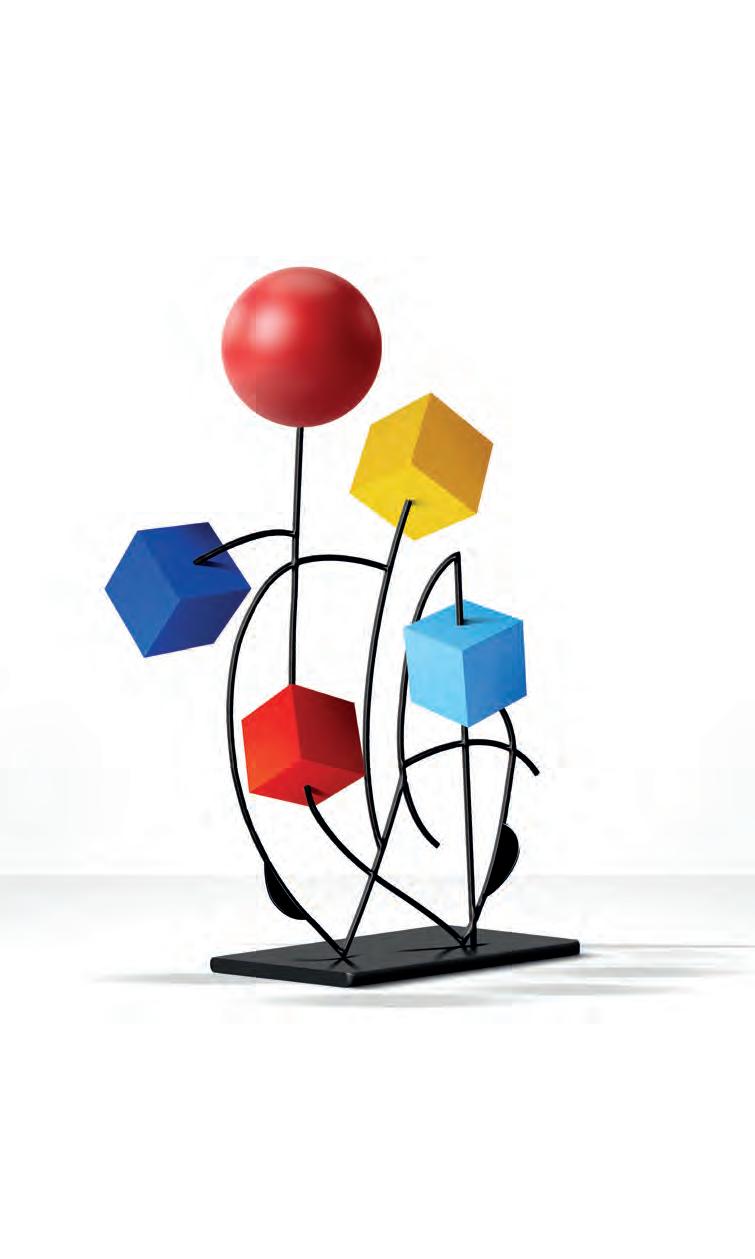
ability to adapt to the specific needs of each customer, while naturally ensuring rigorous quality controls: from the conception and creation of the fragrance to the design and production of the packaging, contributing to the construction of the brand and its visual identity, to the filling and packaging phases of the finished product.
New Cosmesy (at Cosmopack 2024, Hall 18 - F15) offers a rare ability to collaborate with customers to develop tailored solutions that perfectly reflect their brand identity and meet their commercial needs.
The “Polo della Cosmesi” is a reference association for the cosmetics production chain (which groups together almost 100 “contract” businesses). The association was set up with the aim of promoting Made in Italy in Italian cosmetics, stimulate dialogue between enterprises in the supply chain and foster international development through participation in sector trade fairs. The Association
celebrates its “first 10 years” of activity at Cosmopack 2024 (Hall 20 - D26), and will be present with 41 associated businesses, 11 of which are included in two group exhibitions in pavilions 20 and 19 PK covering almost 200 square metres. Thanks to its strong ties with the local territory, combined with an international vocation, the Association presents itself as an ideal partner for companies that wish to create business networks and stand out in the international cosmetics world with high-quality, innovative products, authentic examples of Italian “knowhow” excellence.
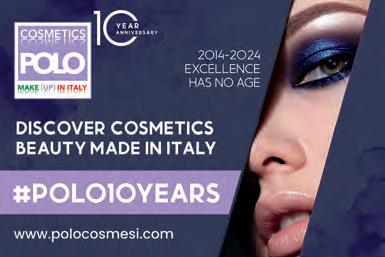
• Storytelling, value proposition and the new generations. The new generations will be the consumers of tomorrow: how to communicate with them, and how to gain their loyalty? This is the challenge for brands today, which have to adapt to new digital communication systems and tools; at the same time, they have to respond to media pressure regarding issues of social significance that are increasingly important for young people.
A brand that does not clearly express its values, which does not openly take sides in relation to current social issues, which does not learn to use the same language and the same means of communication as the youngest generations will be unable to attract their attention.
• Wellness and wellbeing. Proposals and brands with a holistic approach, with treatments that increase psycho-physical wellbeing and,
as a consequence, self-esteem and self-acceptance, are increasingly growing in importance. As emerges from the already-cited McKinsey & Company 2023-2027 Report, the wellness sector is worth 1,500 billion dollars globally, with an annual growth forecast to 2027 that could reach 10%. Attention to wellness and wellbeing is bringing new operators into the dialogue between consumers and brands. First and foremost, trusted interlocutors, the “influencers” who we turn to for advice and products, are changing. Holistic operators, but also dermatologists, biologists and scientific professionals are now the most trusted ambassadors. Distribution channels and physical interaction spaces are also changing. Areas dedicated to wellness within major global retailers are growing, as well as business activities that involve spas, hotels and clinics in rituals and wellness treatments for body and mind.





















“ Instancabili per passione ”.

n In risposta alla crescente urgenza di azioni concrete contro i cambiamenti climatici e l’impatto ambientale dell’industria, Crocco diventa Società Benefit. Una scelta guidata dalla necessità di adottare modelli di business rispettosi dei principi di sostenibilità e responsabilità sociale, specchio dell’impegno che da ormai 30 anni motiva l’azione aziendale. Il risultato è una gamma di packaging a basso impatto, compostabile per uso alimentare, con un costante incremento di materiale riciclato e spesso anche a emissioni zero. Nel solo ultimo anno, infatti, l’azienda ha aumentato di 999 tonnellate l’acquisto di materiale riciclato, che si aggiungono alle 1500 tonnellate provenienti dalla controllata T&T, che recupera pro-
n Nel quadro delle diverse iniziative che ICMA ha intrapreso a sostegno della sostenibilità, la partecipazione al progetto Treedom, rappresenta un risultato tangibile, grazie ai 442 alberi piantati dal 2019 in Camerun. Con Foresta Laetitia, questo il nome dell’area alberata, ICMA contribuirà all’assorbimento complessivo di 41,74 tonnellate di CO2 nei primi 10 anni di vita. Alcuni degli alberi, tra cui gli ultimi 15 del 2023, sono stati piantati grazie al progetto Kind: per ogni 10.000 fogli venduti della collezione di carte 100% riciclate, ICMA ha scelto di piantare un nuovo albero nella foresta camerunense.
La foresta Laetitia si trova nella regione nota come Cocoa Belt o fascia del Cacao, che si estende tra il 20° parallelo sud e il 20° parallelo nord; un’area dove la monocoltura spinta da ragioni commerciali suggerisce di variare la biodiversità con la piantumazione di diverse essenze tra cui banano e avocado. Oltre alla riduzione delle emissioni di CO2, gli obiettivi del progetto guardano anche alla protezione della biodiversità, puntando a fornire una fonte di reddito sostenibile per i contadini camerunensi, contrastare l’erosione del suolo e promuovere la riforestazione.
Crocco becomes a Benefit Corporation
Crocco has become a Benefit Corporation in response to the growing urgency for concrete action against climate changes and industry’s environmental impact. It’s a choice deriving from the need to adopt business models in line with sustainability and social responsibility principles, and reflects the commitment that has motivated the company’s actions for 30 years now. The result is a range of lowimpact, compostable packaging for food use, with a constant increase in recycled material and often with zero emissions. The company, in fact, increased by 999 tonnes the acquisition of recycled material in the last year alone, adding to the 1500 tonnes coming from the T&T subsidiary, which recovers Crocco’s production waste, transforming it into new raw material: an achievement that testifies the company’s commitment to reducing the environmental impact of its products
and in promoting a circular economy. It has received important recognitions in terms of sustainable innovation and responsible growth, with the Campione della Crescita (Champion of Growth) 2024 award attributed by the Repubblica newspaper’s Affari & Finanza business and economics supplement and ITQF, followed by the CONAI award for Ecodesign and recognition as a Ministry of the Environment benchmark for “identifying, promoting and enhancing common initiatives aimed at the analysis and reduction of the environmental footprint of its sector”.
initiative to contrast the climate crisis
As part of the various initiatives that ICMA has undertaken to support sustainability, its participation in the Treedom project is a tangible result, thanks to the 442 trees planted in Cameroon since 2019. With the Laetitia Forest, the name given to the reforested area, ICMA will contribute
prio gli scarti produttivi di Crocco trasformandoli in nuova materia prima: un traguardo che testimonia l’impegno aziendale nel ridurre l’impatto ambientale dei suoi prodotti e nel promuovere un’economia circolare. Significativi i riconoscimenti sul fronte dell’innovazione sostenibile e della crescita responsabile con il premio Campione della Crescita 2024 attribuito da Repubblica Affari & Finanza e ITQF a cui è seguito il premio CONAI per l’Ecodesign e il riconoscimento come benchmark del Ministero dell’Ambiente e della Sicurezza Energetica per “individuare, promuovere e valorizzare iniziative comuni finalizzate all’analisi e riduzione dell’impronta ambientale relativa al proprio settore”.
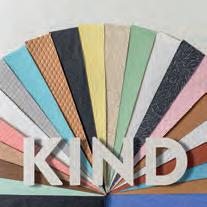
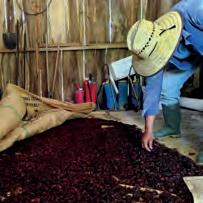

to the overall absorption of 41,74 tonnes of CO2 in the first 10 years of life. Some of the trees, including the last 15 in 2023, were planted thanks to the Kind project: ICMA has chosen to plant a new tree in the Cameroonian forest for every 10,000 sheets of the 100% recycled papers collection sold. The Laetitia Forest is situated in the region known as the Cocoa Belt, which extends between the 20° parallel south and the 20° parallel north; it’s an area where monoculture driven by profit has given rise to calls to vary the biodiversity with the planting of different species, including bananas and avocados. Besides the reduction of CO2 emissions, the objectives of the project also relate to the protection of biodiversity, aiming to provide a sustainable source of income for the Cameroonian farmers, contrast soil erosion and promote reforestation.
N&B Natural is Better won the Best
PELLE”. N&B Natural is Better ha vinto il Best New Product Award in occasione di Vivaness 2024, manifestazione dedicata al wellness e alla cosmesi naturale e bio tenuto a Norimberga (D) a febbraio 2024. Si tratta di un importante riconoscimento che premia il costante impegno di N&B Natural is Better nell’R&D e supporta la passione dell’azienda pugliese nel creare soluzioni naturali innovative e sorprendenti per una migliore qualità della vita, trasformando principi attivi in genere interpretati come “alimenti” (vino, grano, olio d’oliva, aloe…) in ingredienti di un cosmetico. Sotto i riflettori, il Body Butter Skin Super Food scelto come soluzione d’eccellenza nella categoria Body Care, che combina ingredienti bio km0, coltivati nella tenuta Naturalis di N&B Natural is Better, dove nasce la materia prima dei prodotti beauty concept Made in Salento.
New Product Award during Vivaness 2024, the event dedicated to wellness and to natural and organic cosmetics held in Norimberg, in Germany, at the beginning of February 2024. It’s an important recognition that rewards N&B Natural is Better’s constant commitment to R&D and supports the Apulian company’s passion for creating innovative and surprising natural solutions for a better quality of life, transforming active ingredients, generally considered as “foods” (wine, wheat, olive oil, aloe…) into ingredients of a cosmetics line.
In the spotlight, awarded as Best New Product 2024, Body Butter Skin Super Food was chosen as an excellent solution in the Body Care category. It’s a butter for beauty and body care that combines km0 organic ingredients, cultivated in N&B Natural is Better’s estate where the raw materials of Made in Salento beauty concept products are produced.

Le chiavi di lettura del mercato selettivo proposte da un’esperta come Anna Maria Tartaglia aprono a interessanti riflessioni: la ricerca della qualità fuori dall’ordinario e la capacità di emozionare restano i punti fermi del comparto dei
ÈCEO di TheBrandSitter agenzia dedicata allo sviluppo strategico di marchi alto di gamma sui mercati internazionali e ha un passato come strategic planner di importanti agenzie di pubblicità internazionali e vertice del marketing e comunicazione globale per brand del calibro di Trussardi, Ferragamo, Superga e Value Retail.
Anna Maria Tartaglia è un’esperta del mercato del lusso con competenze che spaziano dai concetti tradizionali di artigianato - le radici del segmento - alla visione di futuro offerta dal mondo start up. Questi i temi su cui ha riflettuto con ItaliaImballaggio, guardando ai trend trasversali del lusso e al loro riflesso sul packaging, indispensabile complemento dell’esperienza di acquisto e sua anticipazione emozionale.
«Il lusso sta entrando nel mondo del litterally me - esordisce Tartaglia - ed è sempre più caratterizzato dal desiderio di mostrarsi al di là degli oggetti aspirazionali. Parliamo quindi della tendenza dei consumatori ad attribuire un valore molto alto all’unicità dell’oggetto e dello status, tornando, in sostanza e per fortuna, alla qualità al fuori dall’ordinario, alla
beni di lusso (packaging compreso) ma la disponibilità di nuove tecnologie consente di dialogare con i consumatori in modo aperto e coinvolgente, con il pieno controllo dell’anticontraffazione. E si apre un nuovo corso.
personalizzazione e iper-personalizzazione. Insomma, il nuovo trend è l’avere qualcosa che nessun’altro ha. Penso in particolare al mercato del lusso più alto, che possiamo definire inaccessibile, ma che rappresenta solo una parte del segmento. Da non dimenticare infatti, tutti i segmenti aspirazionali, composti da generazioni più giovani o generazioni emergenti, quindi non solo Z ma anche alpha: i consumatori del lusso di domani. Per loro un peso notevole hanno l’immateriale, l’esperienza, l’emozione, quindi tutto ciò che si lega non solo al prodotto in sé ma all’autenticità e ai valori legati all’esperienza mista, fisico digitale».
Universi digitali e big data per rafforzare il legame con il cliente
«Le aziende sono chiamate a lavorare sui temi legati alle tendenze traversali tra AI, AI generativa, digital ed esclusività del prodotto» prosegue Anna Maria Tartaglia.
«In questo contesto, le tecnologie svolgono un ruolo determinante nel completamento dei processi, in particolare per quanto riguarda la maggiore conoscenza dei consumatori, agendo sul rapporto
che si costruisce per intercettarne le aspirazioni, le tendenze e gli interessi. In crescita sono quindi la convergenza tra digitale e fisico e l’esperienza su realtà aumentata e realtà virtuale, tutti ambienti che permettono di creare nuovi spazi di collaborazione tra l’azienda e i suoi clienti».
Un digitale human driven come amplificatore di conoscenza
«I trend suggeriscono che vedremo crescere l’unicum tra fisico e digitale, anche se tengo a sottolineare che uno non prevarrà sull’altro perché la parte umana nel
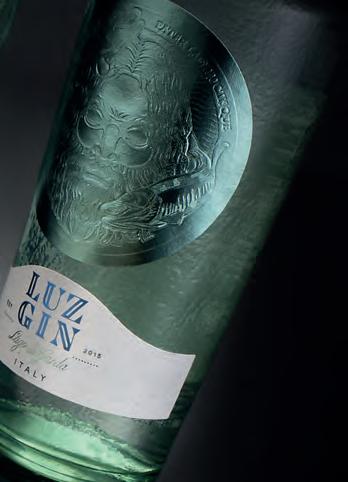


lusso rimarrà sempre fondamentale. Vedremo questo in particolare nel rapporto con gli store e l’evoluzione dei canali distributivi, dove forte impatto hanno già creatività, prodotto, modalità di comunicazione e strategie di analisi dei big data, necessarie per acquisire una sempre maggiore conoscenza del consumatore. Aumentare l’esperienza e valorizzare il prodotto sono obiettivi fortemente condizionati dalla creatività che, non dimentichiamolo, continuerà a essere generata dalle persone e non dalle macchine.
Digitalizzazione, processi di innovazione, AI sono e rimarranno percorsi human driven specialmente in un settore come il lusso. Se guardiamo all’intelligenza artificiale, ad esempio, possiamo ritenerla un aiuto e un supporto alla conoscenza, mai un’alternativa quanto piuttosto un amplificatore della conoscenza perché ci consente di acquisire informazioni dove l’uomo non potrebbe arrivare negli stessi tempi. L’elaborazione umana è quindi un valore aggiunto che, a mio avviso, la macchina non è in grado di fornire. Il lusso è espressione di un mondo molto raffinato in termini di prodotto, lavorazioni e comprensione della psicologia delle persone: tutti aspetti su cui una macchina non può avere lo stesso impatto della creatività umana. D’altra parte serve non essere proni alla tecnologia, né delegare attività passivamente, ma guardare all’innovazione tecnologica come a una leva di miglioramento ed evoluzione, dove la macchina si colloca all’inizio o alla fine di un processo, al centro del quale c’è sempre la capacità di elaborazione creativa e sintesi intellettuale tipica della natura umana».
Coniugare tradizione del saper fare e innovazione tecnologica
«Va detto che innovazione e lusso non hanno mai viaggiato appaiati. Il fatto che nel lusso emergano concetti di innovazione

con la ricerca di nuovi materiali, prototipazione, miglioramento dei processi di produzione, supply chain, marketing e convergenza phigital, è una novità molto positiva. Il lusso è infatti un ambiente fatto di “sapere” umano e artigiano, di processi antichi e sofisticati, di materiali tradizionali. Oggi, però, il concetto di innovazione si è ampliato. Ecco quindi che è la materia prima a diventare innovativa, innestando processi tecnologici che permettono di definire l’unicità di un materiale rendendolo particolarmente sottile, iper tattile, con caratteristiche peculiari. Pensiamo, per esempio, a una lana prodotta in micron o ai materiali alternativi, creati in laboratorio, provenienti da riciclo o da ricompattamento di scarti di recupero. L’artigiano oggi non è più l’uomo al desco che usa ago e filo, ma è protagonista: nella prototipazione, nello sviluppo di soluzioni innovative, nel miglioramento della qualità. L’innovazione nel lusso è quindi un concetto trasversale, in cui rientra anche il mondo start-up, che sono una boccata d’aria fresca per il comparto».
Il contributo delle start-up alla protezione del marchio, tra tracciabilità e blockchain «Grazie alla cultura dell’R&D tipica del mondo start-up, sono emerse ad esempio applicazioni che hanno rivoluzionato anche i processi più consolidati: pensiamo allo sviluppo di modelli di blockchain e tracciabilità del prodotto che ne garantiscono l’autenticità e la qualità in un contesto dove la contraffazione è sempre più diffusa. Quello che prima veniva garantito stam pando certificati di garanzia replicabili e falsificabili, oggi con la blockchain diventa un processo molto più complesso e sicu ro. I grandi gruppi lo hanno capito e lavora no su blockchain proprietarie, visto che l’anticontraffazione è sempre più basata su questa tecnologia sia nel primo che nel secondo mercato, dove è ora possibile definire la provenienza del prodotto, il numero di passaggi e la sua autenticità prevenendo percorsi illeciti e svalutazione».
Lux-packaging: complemento essenziale del prodotto
In un mercato dove il dettaglio è essen ziale, il packaging diventa prodromo dell’esperienza connessa al prodotto,
quasi un’anticipazione emozionale un tema su cui Anna Maria Tartaglia prosegue: «Il confezionamento gioca un ruolo essenziale in quanto strettamente connesso al prodotto. Si pensi che online spopolano gli acquisti di scatole di Hermes e Gucci a fini di collezionismo, che esprimono comunque un contenuto emozionale e di forte legame con il brand anche quando non ci si può permettere il prodotto. Il contenitore esprime valori importanti, specialmente se parliamo di oggetti di lusso legati ai mercati dell’abbigliamento, accessori, gioielleria, food & wine, spirits. In questi contesti, il packaging svolge una funzione complementare indispensabile.
Pensiamo al fenomeno dell’unboxing, che anticipa l’emozione connessa al prodotto alto di gamma, creando una continuità sensoriale ed emotiva, che rende l’esperienza di acquisto ancora più intensa e ricca».
Smart packaging tra metaverso, realtà aumentata e NFT
«Anche in questo ambito, l’evoluzione tecnologica arricchisce e valorizza l’esperienza. Penso in particolare al cosiddetto smart packaging, imballaggi interattivi che portano a contenuti multimediali, realtà aumentata e virtuale, metaverso, ambienti attraverso cui i brand forniscono informazioni aggiuntive ed esperienziali accessibili con un QRCode. I trend guardano in particolare nella direzione del metaverso e delle sue possibili evoluzioni mentre oggi i protagonisti sono gamification, NFT e realtà aumentata, vissuti come veicoli di coinvolgimento, intratte

lo e raccogliere informazioni sui suoi comportamenti di consumo per svolgere analisi di mercato e rafforzare l’after sales. Questo aspetto dello smart packaging è probabilmente quello con maggiori margini di sviluppo».
L’unicità come leva di lusso sostenibile
Non può mancare in chiusura una riflessione sulla sostenibilità, tema centrale anche per il mercato del lusso, su cui Anna Maria Tartaglia conclude: «Nel lusso la sostenibilità ha un peso determinante, con impatto sulla tracciabilità, i protocolli di produzione, le condizioni di lavoro e l’impatto ambientale. Nell’alto di gamma inoltre favorisce la maggiore identificazione del consumatore nel proprio brand del
cuore, grazie a un contenuto emozionale e valoriale che arricchisce il prodotto stesso entrando a far parte della narrativa e dello storytelling legato al brand, che parla al consumatore e lo motiva, ingaggiando e coinvolgendo.
Non dimentichiamo poi che il lusso nasce sostenibile, perché pensato per durare grazie a qualità del materiale, riparazione artigianale, sostituzione delle parti: tutti concetti green e intrinsecamente legati al lusso da sempre. Serve però distinguere tra lusso vero e lusso apparente, un mondo, quest’ultimo che deve trovare il suo equilibrio. I brand devono lavorare a regole auto-imposte che spingano a produrre meno, meglio e con un controllo sulla filiera che riporti le produzioni dove gli standard di sostenibilità
The keys to understanding the selective market proposed by an expert such as Anna Maria Tartaglia lead to interesting reflections: the search for out-of-theordinary quality and the capacity to arouse emotions remain the cornerstones of the luxury sector (packaging included) but the availability of new technologies makes it possible to dialogue with consumers in a more open and engaging way, with full anti-counterfeiting control. And a new path opens up.

She is the CEO of TheBrandSitter agency dedicated to the strategic development of high-end brands in international markets and in the past has worked as strategic planner for important international advertising agencies and as global marketing and communications top manager for brands of the calibre of Trussardi, Ferragamo, Superga and Value Retail.
Anna Maria Tartaglia is a luxury market expert with expertise that ranges from traditional craft concepts - the roots of the segment - to visions of the future offered by the world of start-ups. These are the themes she reflected on with ItaliaImballaggio, looking at crosscutting luxury trends and their impact on packaging, the indispensable complement to the shopping experience with its emotional anticipation.
«Luxury is entering the world of literally me - Tartaglia begins - and is increasingly characterised by the desire to show oneself beyond aspirational objects. We’re, therefore, talking about the tendency of consumers to attribute a very high value to the uniqueness and status of an object, returning, in
essence and fortunately, to out-of-theordinary quality, personalization and hyper-personalisation. In short, the new trend is having something that no-one else has. I’m thinking, in particular, of the highest-end luxury market, which we can define as inaccessible, but which represents only a part of the segment. We should not forget, in fact, all the aspirational segments, composed of younger or emerging generations and, therefore, not only the Z but also the alpha generation: the luxury consumers of tomorrow. For them, the intangible, the experience, emotions and everything that is linked not only to the product itself but to authenticity and the values linked to the mixed, physical, digital experience, are important».
Digital universes and big data to strengthen the bond with the customer
«Companies are required to work on themes linked to cross-cutting trends including AI, generative AI, digitalisation and product exclusivity» Anna Maria Tartaglia continues. «In this context, technologies perform a determining
ambientale e sociale vengono rispettati. Un processo costoso, che richiede impegno sia per le aziende che per il consumatore, chiamato a contenere l’eccesso per tornare al prodotto di qualità, dove meno è anche meglio. L’auspicio è quindi un allineamento verso l’alto, con una maggiore consapevolezza dei brand sul proprio ruolo educativo verso una nuova generazione di consumatori, evoluta, consapevole e alto spendente. I brand devono quindi saper veicolare il valore connesso alla qualità del prodotto e del processo, integrandolo nel percepito del consumatore e orientandone le scelte verso una domanda che valorizza i pezzi unici ed è disponibile a spendere per quell’oggetto e la sua unicità».
role in the completion of processes, in particular with regards to greater consumer knowledge, acting on the relationship that is developed to intercept aspirations, tendencies and interests. There is a growing convergence between digital and physical and the experience of augmented reality and virtual reality, all contexts that make it possible to create new spaces for collaboration between the company and its customers».
Human-driven digital as an amplifier of knowledge
«Trends indicate that we will see the physical and the digital increasingly merging, even if I would like to point out that one will not prevail over the other because the human part of luxury will always remain fundamental. We will see this, in particular, in the relationship with stores and the evolution of distribution channels, in which creativity, product, means of communication and big data analysis strategies, necessary to acquire ever greater knowledge of the consumer, already have a strong impact.
Increasing the experience and enhancing the product are objectives strongly influenced by creativity which, let’s not forget, will continue to be generated by people and not by machines. Digitalisation, innovation processes and AI will remain humandriven paths, especially in a sector like luxury goods. If we look at artificial intelligence, for example, we can consider it a help and a support for knowledge, never an alternative but rather an amplifier of knowledge as it allows us to acquire information where man could not arrive in the same time. Human analysis is, therefore, an added value which, in my view, a machine is not able to provide. Luxury is the expression of a very refined world in terms of product, processes and the psychological understanding of people: all aspects on which a machine cannot have the same impact as human
creativity. On the other hand, it’s necessary not to be enslaved by technology, nor to passively delegate activities, but to look at technological innovation as a means for improvement and evolution, in which the machine is positioned at the start or the end of a process, in the centre of which there’s always the capacity for creative elaboration and intellectual synthesis typical of human nature».
Combining the tradition of know-how and technological innovation «It should be said that innovation and luxury have never travelled together. The fact that innovation concepts are emerging in the luxury world, with the search for new materials, prototyping, product process and supply chain improvement, marketing and phygital convergence, is a very positive development. Luxury is, in fact, a genre composed of human and craft “knowledge”, ancient and sophisticated processes, and traditional materials. Today, however, the concept of innovation has widened. The raw material has become innovative, grafting technological processes that make it possible to achieve the uniqueness of a material, making it particularly thin, hyper tactile, with particular characteristics. We can cite, for example, a wool produced in micron or alternative materials, created in the laboratory, coming from recycling or the compaction of recovered waste. The craftsman today is no longer the man at the table working with needle and thread, but is a protagonist: in the prototyping, in the development of innovative solutions, in the improvement of quality. Innovation in luxury is, therefore, a cross-cutting concept, also involving the world of the start-ups, which are a breath of fresh air for the sector».
The contribution of start-ups to the protection of the brand, between traceability and blockchain
«Thanks to the R&D culture typical of the start-up world, applications have emerged, for example, that have also revolutionised the most wellestablished processes: we can refer to the development of blockchain models and product traceability which guarantee authenticity and quality in a context in which counterfeiting is increasingly widespread. What before was guaranteed by printing replicable and falsifiable guarantee certificates, today with blockchain becomes a more complex and safer process. Large corporate groups have understood this and are working on proprietary blockchains, given that anticounterfeiting is increasingly based on this technology both in the primary and secondary market, in which it is now possible to define the origin of the product, the number of steps and its authenticity, preventing illicit routes and devaluation».
Lux-packaging: essential complement to the product In a market in which the detail is crucial, packaging becomes a prelude to the experience connected to the product, almost an emotional anticipation, a theme on which Anna Maria Tartaglia
continues: «The packaging plays an essential role as it is closely connected to the product. Consider, for example, the fact that online purchases of Hermes and Gucci boxes are very popular for collecting purposes; they express an emotional content and a strong connection with the brand even when you can’t afford the product. The container expresses important values, especially if we talk about luxury objects linked to the markets for clothing, accessories, jewellery, food & wine and spirits. In these contexts, the packaging performs an indispensable complementary function. We can refer to the unboxing phenomenon, which anticipates the emotion associated with a high-end product, creating a sensorial and emotional continuity, making the purchase experience even more intense and richer».
Smart packaging, between metaverse, augmented reality and NFT
«The technological evolution enriches and enhances the experience also in this context. I’m referring, in particular, to so-called smart packaging, interactive packaging that leads to multimedia content, augmented and virtual reality, metaverse, contexts through which brands provide additional and experiential information accessible with a QRCode. The trends
are heading, in particular, in the direction of the metaverse and its possible evolutions, while today the protagonists are gamification, NFT and augmented reality, seen as vehicles of involvement and entertainment, enrichment of the purchase experience and reinforcement of the bond with the brand. The objective is to bring the consumer closer, engage them and collect information on their consumption behaviour in order to carry out market analyses and reinforce after-sales. This aspect of smart packaging is probably the one with most scope for development».
Uniqueness as a tool for sustainable luxury
We can’t end without a reflection on sustainability, a key issue also for the luxury market, about which Anna Maria Tartaglia concludes: «In the luxury field, sustainability is a determining factor, with an impact on traceability, production protocols, working conditions and environmental impact. In the high-end range, moreover, it promotes greater consumer identification with their favourite brand, thanks to an emotional and value content that enriches the product itself, becoming part of the narrative and storytelling linked to the brand which, by engaging and involving the consumer, speaks to
them and motivates them. Let’s not forget, moreover, that luxury is created sustainable, because it’s designed to last thanks to the quality of the material, craft repair and replacement of parts: all green concepts and intrinsically always linked to luxury. It’s necessary, however, to distinguish between real and apparent luxury; the latter is a world that has to find its own balance. Brands have to work on self-imposed rules that push them to produce less, better and with a control of the supply chain that brings production back to where environmental and social sustainability standards are respected. It’s a costly process, which requires commitment both for companies and for the consumer, called on to contain their excesses and to return to a quality product, for which less is also better. The hope is, therefore, an upwards alignment, with a greater awareness by brands of their educational role towards an evolved, informed and high-spending new generation of consumers. Brands must, therefore, be able to convey the value connected to the quality of the product and the process, integrating it in the consumer’s perception and orienting choices towards a demand that values unique pieces and is willing to spend for that object and its uniqueness».


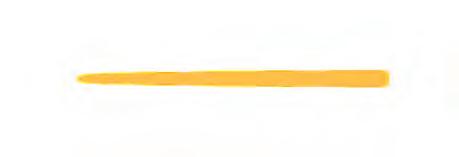
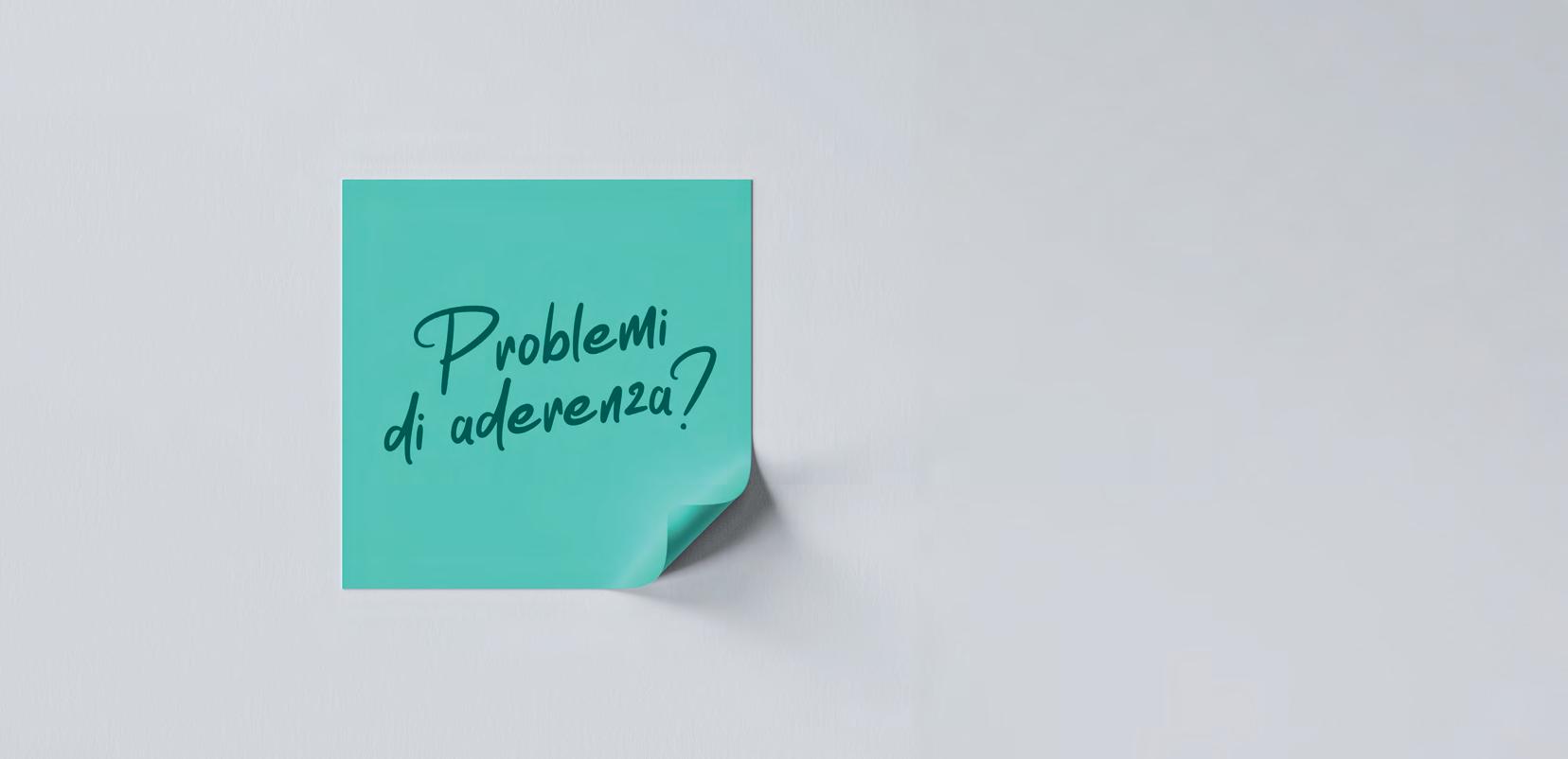

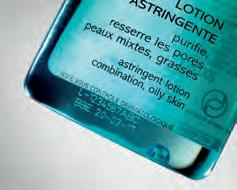
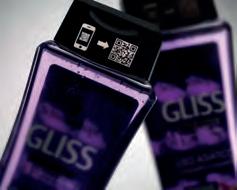


Raffinati ed esclusivi, i materiali studiati per il packaging di alta gamma hanno ormai adottato i codici etici della sostenibilità. E questo senza perdere in capacità evocativa, stimolando un’esperienza sensoriale sempre diversa, unica e coinvolgente. Ce ne parlano alcuni produttori incontrati a Monaco alla scorsa edizione di Luxe Pack, tracciando con chiarezza le direttrici su cui intendono sviluppare il business a livello internazionale.
Refined and exclusive, the materials developed for high-end packaging have by now adopted the ethical codes of sustainability. And this without losing the power to evoke, to stimulate an always different, unique and captivating sensorial experience. We talked about this with a number of producers we met in Munich at the last edition of Luxe Pack, who clearly outlined the directions along which they intend to develop business at an international level.

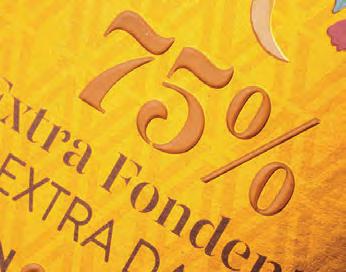
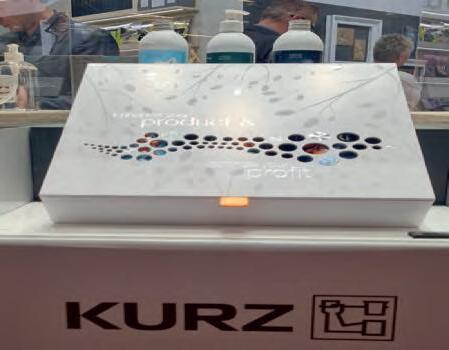
Luxoro e il contributo green al packaging selettivo grazie a una… “rivoluzione invisibile”.
Partner esclusivo per l’Italia di Kurz (player mondiale nella produzione di attrezzature e tecnologie per la stampa a caldo a freddo e per la metallizzazione digitale), Luxoro è un riferimento per tutto ciò che riguarda la nobilitazione, tema su cui «il mercato deve attendersi grande innovazione» come ha tenuto a sottolineare nel corso di Luxe Pack 2023 il suo Brand Ambassador, Alessandro Carnevale: «Secondo la nostra visione, con le nuove tipologie di prodotti di trasferimento per la decorazione, l’estetica migliorerà ulteriormente, senza nulla togliere alle caratteristiche qualitative e tecniche richieste in particolare per il packaging di alta gamma. Luxoro presidia l’Italia con produzioni d’eccellenza nell’ambito della metallizzazione per le superfici e stiamo promuovendo con successo il nuovo progetto Slim di Kurz, un prodotto per il trasferimento a caldo e a freddo caratterizzato da una riduzione importante dello strato di PET. In particolare, desidero mettere in evidenza le performance del cold foil KPS Slim, il cui strato di PET è passato da 12 a soli 6 micron di spessore, che garantisce una copertura accurata, una migliore nitidezza nel design e alta definizione nei risultati di stampa. In pratica si tratta di un prodotto molto più sottile dei precedenti, risultato di una ricerca accurata in termini sia di tecnologia innovativa che di sostenibilità. La riduzione dello strato di PET consente la produzione di rotoli più lunghi a parità di metri lineari e quindi molto più leggeri. Da qui deriva una minore quantità di scarti, meno materiale da smaltire e, di conseguenza, un’impronta ambientale più bassa. Abbiamo ottenuto risultati rilevanti e sorprendenti fin dai primi test di stampa su carte materiche e strutturate, dove fino a poco tempo fa il cold foil faticava ad aderire. Attualmente siamo a lavoro per presentare il progetto Silm anche per i prodotti dedicati alla stampa a caldo».
Luxoro and its green contribution to selective packaging thanks to an … “invisible revolution”.
Exclusive partner for Italy of Kurtz, the global operator and international point of reference in the production of equipment and technologies for hot and cold printing, Luxoro is a benchmark for everything relating to embellishment, an area about which «the market can expect great innovation» as brand Ambassador Alessandro Carnevale underlines during Luxe Pack 2023: «In our view, with the new types of laminates for decoration, the aesthetics of products will improve even more, without, however, affecting the quality and formal characteristics demanded, particularly in high-end packaging. Luxoro operates in Italy with excellent quality productions in the metallization field and we are successfully promoting Kurtz’s new Slim project, a product for hot and cold transfer characterised by a significant reduction in the PET layer. In particular, I would like to highlight the performance of the KPS Slim cold foil, which has passed from a thickness of 12 to only 6 microns, ensuring a precise coverage, improved sharpness and high definition in the printing. It’s actually a much finer sheet than the previous ones, the result of careful research on technological and sustainability aspects, allowing for the production of longer and much lighter reels of the same width. This leads to a lower quantity of waste, and therefore less material to dispose of and, as a consequence, a lower environmental impact. We have obtained significant and surprising results right from the first printing tests on textured and structured papers, for which cold foil struggled to adhere until recently. At the same time, we are also making progress in developing the right material for hot printing».

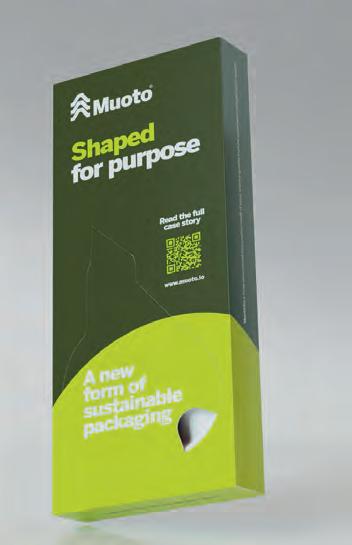
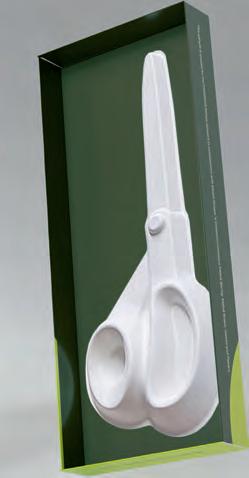

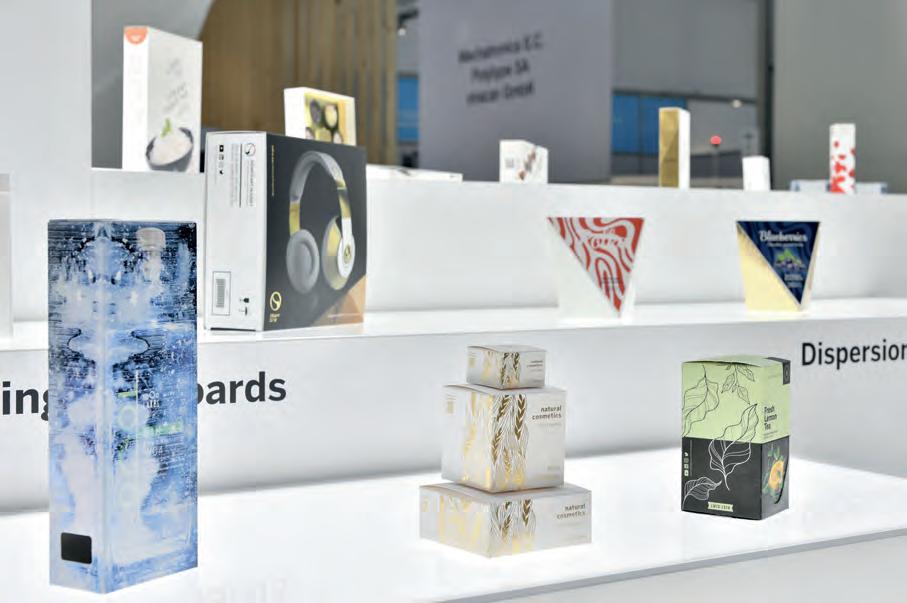
Dalle rigogliose foreste finlandesi a soluzioni sempre più innovative per la carta.
Metsä Group è un gruppo industriale forestale finlandese con 9500 dipendenti attivi in 30 paesi e un fatturato annuo di circa 7 miliardi di euro. Nell’industria di settore, i segmenti in crescita sono la fornitura di legno e i servizi forestali, i prodotti in legno, la pasta di cellulosa, i cartoni in fibra vergine, il tissue e la carta oleata. La materia prima al centro del business Metsä è il legno rinnovabile, proveniente da foreste nordiche gestite in modo sostenibile.
Metsä Board, parte di Metsä Group, è un produttore leader in Europa di cartoni in fibra fresca di alta qualità. A Luxe Pack 2023 ItaliaImballaggio ha incontrato Gunilla Nykopp, Customer Experience Manager di Metsä Board, che ha parlato in particolare dell’Excellence Centre, il centro di ricerca di Metsä Board, aperto nel 2020 nel bel mezzo della pandemia, i cui pilastri per lo sviluppo prodotto sono l’innovazione e la sostenibilità.
Innovazione in crescita
L’aumento dei consumi e la forte domanda di sostenibilità spinge la ricerca di soluzioni innovative per gli imballaggi di oggi e di domani. In risposta a que-
ste necessità Metsä Board ha avviato un nuovo Centro di Eccellenza, collocato presso il sito di bioeconomia di Äänekoski, in Finlandia. Si tratta di un centro che con tecnologie all’avanguardia per l’R&D, la progettazione degli imballaggi e le prestazioni di cartone e packaging, mira ad accelerare l’innovazione dei materiali e degli imballaggi, oltre a fornire una piattaforma di collaborazione per i clienti e i partner tecnologici a livello globale.
Il centro, che si estende su una superficie totale di 1.500 metri quadrati, comprende strutture di R&D, uno studio di progettazione di imballaggi, un centro dedicato alla relazione con i clienti e un laboratorio che fornisce più di 100 diversi metodi di misurazione e analisi. A questo si aggiunge un negozio virtuale e uno strumento di ingegneria assistita da computer (CAE) per consentire sofisticate simulazioni e analisi delle prestazioni degli imballaggi.
Il Centro di Eccellenza mette in comune le competenze e la profonda esperienza di Metsä Board nelle soluzioni a base fibra, con quelle di vari esperti e partner - fornitori di materiali e di tecnologie, startup, università e società di ricerca - con cui vengono organizzati workshop, sia virtuali sia in presenza,

con la finalità di arrivare allo sviluppo congiunto di un prodotto e alla sua co-creazione.
«Il cartone in fibra vergine, rinnovabile e riciclabile, ha molteplici usi nel mondo dell’imballaggio e gli imballaggi in fibra hanno molto da offrire. Insieme ai nostri partner e al nuovo Centro di Eccellenza, siamo in grado di esplorare le opportunità che offrono in modo ancora più completo generando sviluppi sia per il presente che per il futuro» afferma
Gunilla Nykopp.
A Luxe Pack Metsä Board ha allestito un’area Design Lab, dove ha esposto la sua ampia gamma di prodotti, permettendo ai visitatori di toccare con mano diversi concetti fisici di imballaggio realizzati con cartoni in fibra vergine, pieghevoli leggeri ad alta resa ed eccellente stampabilità, kraftliner bianchi e cartoni con dispersione barriera completamente riciclabili, perfetti per ridurre l’uso di plastica.
From lush forests to increasingly innovative paper-based solutions
Metsä Group is a Finnish forest industry group with 9500 employees in around 30 countries and an annual sales amount to approximately EUR 7 billion. Their focus on the growth sectors of the forest industry are wood supply and forest services, wood products, pulp, fresh fibre paperboards, as well as tissue and greaseproof papers. The raw material for their products is renewable wood from sustainably managed northern forests.
Metsä Board, part of Metsä Group, is a leading European producer of premium fresh fibre paperboards and exhibited its sustainable and innovative products at Luxe Pack 2023.
There ItaliaImballaggio met Gunilla Nykopp, Customer Experience Manager at Metsä Board, who told us, in particular, about the Excellence Centre, Metsä Board’s research and innovation centre, which opened 2020 in the middle of the pandemic. There,
their pillars of product development are making innovation and sustainability.
Growing consumption and demand for more sustainable packaging is boosting the need for new innovations. To develop solutions for packaging today and into the future, Metsä Board has started up operations in its new Excellence Centre at the unique bioeconomy site in Äänekoski, Finland.
The centre, with its cutting-edge technology for R&D, packaging design and paperboard and packaging performance, aims to accelerate material and packaging innovation and provide a collaboration platform for customers and technology partners globally.
The Excellence Centre, which covers a total of 1,500 square meters, includes R&D facilities, a packaging design


Nuove forme complesse
Grande attenzione hanno riscosso le soluzioni di imballaggio Muoto™ in fibra 3D, progettate nello stabilimento dimostrativo di Metsä Group ad Äänekoski e realizzate in pasta di legno umida. La peculiarità della nuova proposta consiste nella possibilità di modellare la confezione in forme arrotondate e complesse, ottenendo risultati abitualmente raggiunti dall’industria della plastica. Tra le soluzioni esposte, un prototipo di confezione per un paio di forbici Fiskars, che comprende un imballaggio interno in Muoto e un involucro in cartone, realizzati in base ai risultati dei workshop programmati nel Centro di Eccellenza di Metsä Board. «La plastica è ovunque - considera Gunilla Nykopp - e sebbene continuerà a svolgere il proprio ruolo in futuro, un bioprodotto rinnovabile e riciclabile troverà spazio in innumerevoli applicazioni, sostituendola degnamente».
studio, a customer feedback centre and a state-of-the art laboratory providing more than 100 different measurement methods and analytics. The centre also features a virtual store and a computeraided engineering (CAE) tool to allow sophisticated simulation and analysis of packaging performance.
Metsä Board’s Excellence Centre brings together Metsä Board’s own competencies and deep expertise in fibre-based solutions with that of various experts and partners, such as material suppliers, technology providers, start-up companies, universities and research companies. Virtual collaboration workshops have also been developed to enable joint development and co-creation if physical meetings are not possible.
«Renewable and recyclable fresh fibre paperboard can be utilized for packaging in many ways. Fibre-based packaging has a lot to offer, and together with our partners and the new Excellence Centre, we are able to explore the possibilities even more comprehensively. I am excited about the opportunities this will bring for today and the future» says Gunilla Nykopp. At Luxe Pack Metsä Board displayed its
wide product range in a Design Lab area, where visitors were able to get their hands on several physical packaging concepts made with specially engineered fresh fibre paperboards, including lightweight folding boxboards with high yield and excellent printability, white kraftliners and fully recyclable dispersion barrier boards perfect for reducing plastics.
In particular the 3D fibre packaging solutions Muoto™ caught special attention. Muoto products manufactured at Metsä Group’s demo plant in Äänekoski are made of wet wood-fibre pulp and can be shaped into rounded, complex shapes familiar from the plastics industry. The protype packaging for a pair of Fiskars’ scissors, including inner packaging made from Muoto and a paperboard encasing, found its shape through workshops held at at Metsä Board’s Excellence Centre.
«Plastic is everywhere, and while it will continue to play a role in the future, there are countless end uses in which we can use a renewable and recyclable bioproduct instead of plastic,” closes Gunilla Nykopp.

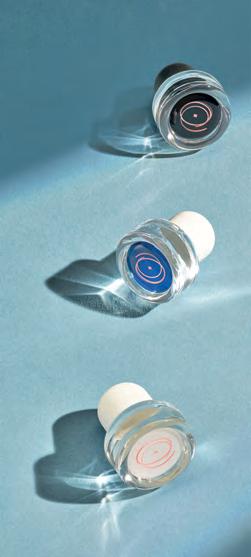
Presente al Luxe Pack di Monaco, il Gruppo Crealis è un brand riconosciuto per la qualità dei suoi prodotti, in cui la ricerca di nuovi materiali si coniuga a creatività e posizionamento premium, senza dimenticare la sostenibilità.
Isabelle Gruard, Group Marketing Director, ed Eleonora Delà, Marketing Manager di Supercap (divisione tappo a T), raccontano quali tendenze sta attraversando il mercato, con uno sguardo particolare al mondo del lusso.
«Siamo specializzati in soluzioni di chiusura per vino e distillati - esordisce Isabelle Gruard - segmenti dove stanno emergendo chiaramente due tendenze chiave: la sensibilità ambientale, spinta dall’eco-design dei prodotti, e l’attenzione a una personalizzazione sempre più marcata, che renda ogni soluzione un’esperienza unica.
Altra fonte di innovazione sono i materiali, a cui guardiamo con prodotti sempre più sostenibili. Nell’ambito dei tappi a T, ad esempio, proponiamo al mercato la nostra linea E|C|O® derivata dalla canna da zucchero, come alternativa all’utilizzo di materie prime di origine fossile. A que-
sta, si aggiunge anche la nostra gamma in sughero naturale, da sempre sinonimo di prestigio e sostenibilità. Grazie al know-how dei nostri team e alla capacità industriale dei nostri siti produttivi, siamo in grado di fornire al cliente tantissime opzioni di chiusura, ciascuna resa unica da forme, materiali, colori, vernici e personalizzazioni su misura.
A questa edizione di Luxe Pack - precisa Gruard - presentiamo T-Glass, chiusura a T pensata per liquori e distillati di alta gamma. La particolarità del prodotto? L’inequivocabile eleganza del vetro unita a una label 100% personalizzabile e ad un packaging esperienziale».
«Restando sempre nella nostra gamma luxury “Maestro” - prosegue Eleonora Delà - proponiamo anche T-Suber, chiusura premium composta da gambo e top in sughero di alta qualità, progettato per offrire al cliente una soluzione estrema-
Present at Luxe Pack 2023, the brand is recognized for the quality of its products, in which the search for new materials is combined with creativity and premium positioning, without forgetting sustainability.
Isabelle Gruard, Group Marketing Director, and Eleonora Delà, Supercap Marketing Manager (Bar-top Division), will tell us the latest trend of the market, with a particular look at the world of luxury.
«We specialize in closure solutions for wine and spirits - Isabelle Gruard begins - segments where two key trends are clearly emerging: environmental sensitivity, driven by the eco-design of the products, and attention to an increasingly marked customization, which makes each solution a unique experience. Another source of innovation is materials, which we look at with
more and more sustainable products. As to bar-top solutions, for example, we offer the market our E|C|O® line derived from sugar cane, as an alternative to using raw materials of fossil origin. Moreover, we can provide the customer with our new natural cork range, which has always been synonymous with prestige and sustainability. Thanks to the know-how of our teams and the industrial capacity of our production sites, we can offer our customers many closure solutions, with an extensive choice in terms of shapes, materials, colours, paints and customisations. At this edition of

mente d’impatto, impreziosita dall’autenticità del sughero naturale. Per Supercap, ogni richiesta del cliente si può soddisfare, grazie al lavoro di squadra e all’esperienza che ci vede protagonisti del mercato da oltre 25 anni».

CREALIS è il partner di riferimento mondiale per i sistemi di chiusura dedicati al mercato di vini fermi e frizzanti, champagne, distillati, liquori, olio d’oliva e aceto.
Il gruppo nasce dall’alleanza di otto marchi di livello internazionale: Enoplastic, Sparflex, Le Muselet Valentin, Rivercap, Maverick, Pe.Di, Supercap e Corchomex, che mettono a disposizione la propria esperienza e conoscenza del mercato.
Crealis Group is the leader in closure solutions for still and sparkling wines, spirits, beers, olive oil and vinegar. It relies on the solid reputation and expertise of eight renowned brands: Enoplastic, Sparflex, Le Muselet Valentin, Rivercap, Maverick, Pe.Di, Supercap AND Corchomex, providing their own unique know-how in the production of capsules, foils, wirehoods, crown caps and T-bar closures.
Luxe Pack, we present T-Glass, a bar-top closure designed for high-end spirits. The particularity of the product? The unmistakable elegance of glass combined with a 100% customizable label for an experiential packaging».
«Always talking about our “Maestro”range, designed to dress high end drinks - continues Eleonora
Delà - today we also present T-Suber, a premium closure with high quality natural cork top and shank, designed to offer the customer a quality solution, embellished with the authenticity of natural cork. For Supercap, every customer request can be met, thanks to the teamwork and the experience that we’ve been collecting for over 25 years».

Come ormai per tutti i produttori di packaging e di materiali per il packaging, anche per Winter & Company - di cui Fontana Grafica è partner in Italia - la sostenibilità è un tema centrale nello sviluppo di prodotto. Ne parla Muriel Mangold, Head Marketing Communication della multinazionale svizzera: «Guardiamo in particolare alla sostenibilità dei nostri prodotti, ricercando materiali riciclabili e, in generale, scarti di lavorazioni per trasformarli in nuove risorse e creare così soluzioni alternative e di alta qualità.
Partendo dal PCW/PIW (Post-Consumer-Waste, PostIndustrial-Waste), produciamo infatti un’ampia varietà di materiali che spaziano dalle tele per legatoria realizzate con plastica raccolta nell’oceano ai materiali floccati in PET riciclato, fino ai rivestimenti luxury caratterizzati da effetti capaci di valorizzare l’esperienza d’acquisto a partire dal tatto. Tra le novità più recenti in questo segmento, Ecorel ® Pure, presentato a Luxe Pack, che va ad aggiungersi al ricco portafoglio di materiali riciclati Winter Wrup che conta già oltre 180 prodotti sostenibili. A questi si aggiunge anche il più recente Winlay®, un imballaggio innovativo in fibra di cellulosa termoformata di alta qualità, privo di plastica, che coniuga ecocompatibilità, versatilità e qualità estetiche straordinarie».



Sustainable and beautiful: a possible combination
As is now the case for all manufacturers of packaging and packaging materials, and also the case for Winter & Company - of which Fontana Grafica is its partner in Italy - sustainability is a central theme in product development. Muriel Mangold, Head of Marketing and Communication of the Swiss multinational, has talked to us about this: «We look, in particular, at the sustainability of our products, seeking recyclable materials and, in general, processing waste, to then transform them into new resources and thereby create alternative and high-quality alternatives.
Starting from PCW/PIW (Post-ConsumerWaste, Post-Industrial-Waste), we produce, in fact, a wide variety of materials ranging from bookbinding canvases made with plastic collected from the ocean to recycled PET flocked materials, and to luxury coverings characterised by effects capable of enhancing the purchasing experience starting from the touch. Recent new developments in this segment include Ecorel® Pure, presented at Luxe Pack, adding to the rich portfolio of Winter Wrup recycled materials which already numbers over 180 sustainable products. In addition to this there is the more recent Winlay®, an innovative packaging in plastic free high-quality thermoformed cellulose fibre, which combines eco-compatibility, versatility and extraordinary aesthetic quality».

ACHEMA is the global hotspot for industry experts, decision-makers and solution providers. Experience unseen technology, collaborate cross-industry and connect yourself worldwide to make an impact.
Are you ready? Join now!
10 - 14 June 2024

Da Dimontonate Floccati una soluzione di imballaggio stampata a iniezione, 100% riciclabile, biodegradabile e compostabile, che garantisce qualità elevata nella definizione di forme e superfici.
Privo di plastica e prodotto con materie prime naturali: amido di patate industriali (70%), fibre di cellulosa (12%), acqua (18%) e un additivo speciale, sempre biobased, utilizzato come legante. È PaperFoam ® un esempio di packaging green a basse emissioni di carbonio, con eccezionali caratteristiche di adattabilità e stabilità che, grazie alla scelta illimitata di colori, si presta ad essere personalizzato nella stampa e nella grafica.
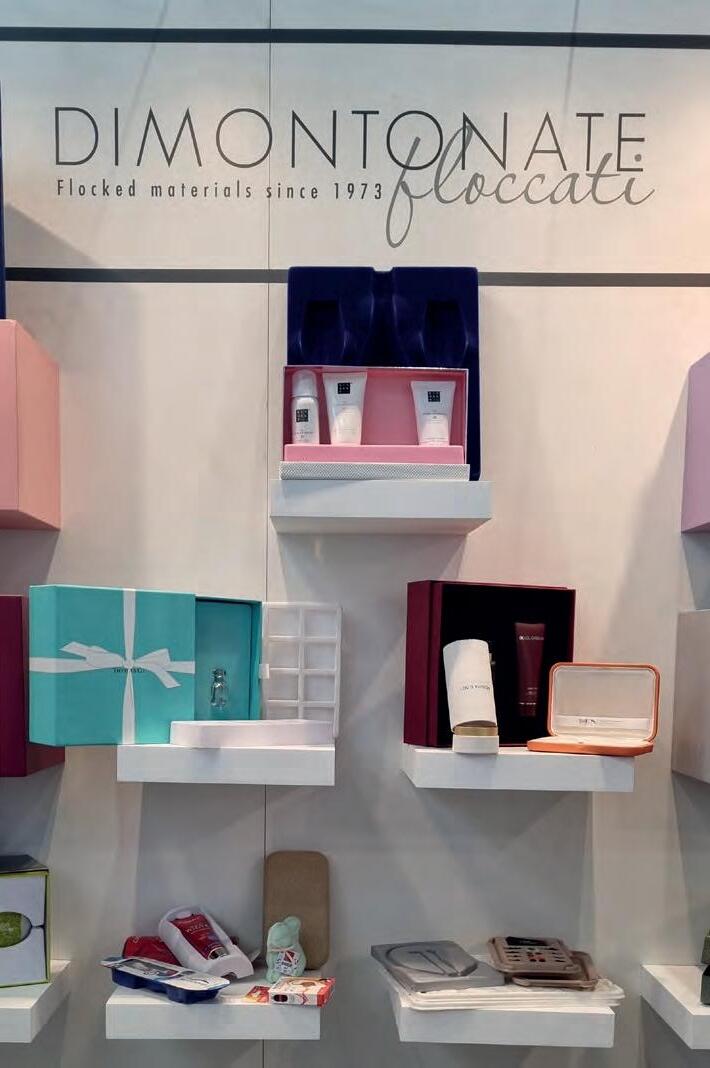
A commercializzarlo in Spagna, Italia e Portogallo è Ecofoam Nature, azienda spagnola di cui Dimontonate Floccati SpA è agente esclusivo per l’Italia. Un processo alternativo. L’amido utilizzato è ottenuto da patate a uso non alimentare (materia prima rinnovabile fondamentale per PaperFoam®) sia per le sue qualità fisiche, sia per la complessiva riduzione dei consumi. Le fibre vergini lunghe e corte provengono invece da foreste cer tificate FSC®, e garantiscono la massima efficienza ecologica di tutta la catena di produzione, dalla coltivazione al prodotto finale. Per mezzo di uno speciale processo a iniezione, la polpa di carta prodotta viene iniettata in appositi stampi di alluminio, successivamente convogliati in un forno e cotti a una temperatura di oltre 200 °C per ottenere il pezzo finale. L’uso di stampi a iniezione garantisce che i contorni dell’imballaggio siano perfettamente definiti, oltre a un’elevata stabilità di forma. La particolarità di questo processo consiste nella possibilità di ottenere superfici molto ben definite e
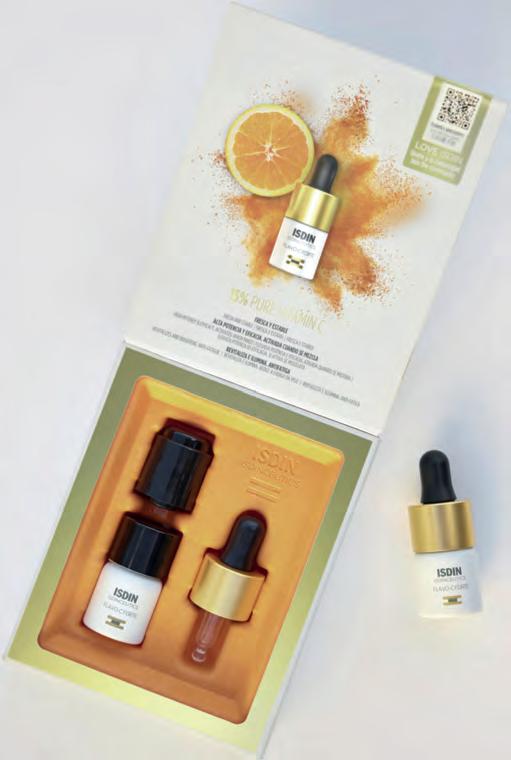
una resistenza ottimale, caratteristiche che la rendono la soluzione ideale per le esigenze di qualità superiori richieste dal packaging del lusso.
L’impronta ecologica degli imballaggi PaperFoam® è dell’85% inferiore rispetto a quella degli imballaggi in plastica o in polpa di cellulosa della stessa categoria. Ciò è dovuto, tra l’altro, al basso consumo di acqua durante la produzione, al ridotto peso dell’imballaggio e all’elevata efficienza energetica nei processi, senza dimenticare l’uso di materie prime rinnovabili, la gestione e lo smaltimento ecologico dei rifiuti.
From Dimontonate Floccati , a 100% recyclable, biodegradable and compostable injection molded packaging that guarantees high quality in the definition of shapes and surfaces.
It’s completely plastic free and produced with natural raw materials: industrial potato starch (70%), cellulose fibre (12%), water (18%) and a special additive, always biobased, used as a binder. PaperFoam® is an example of low carbon-emission green packaging, with exceptional adaptability and stability characteristics and, thanks to the infinite choice of colours, lends itself
to being personalized in the printing and graphics.
PaperFoam® it’s marketed exclusively in Spain, Italy and Portugal by the Spanish company Ecofoam Nature; Dimontonate Floccati is the exclusive agent for Italy.
An alternative process. The starch use is obtained from potatoes for non-food use, a fundamental
renewable raw material for PaperFoam®, both thanks to its physical qualities, and to the overall reduction in consumption. Long and short virgin fibres coming from FSC certified forests guarantee maximum ecological efficiency along the entire production chain, from cultivation to the final product. Through a particular injection process, the paper pulp produced is injected into special aluminium moulds and then sent to a kiln and cooked at a temperature of over 200°C to obtain the final piece. The use of injection moulds guarantees that the contours of the packaging are perfectly defined, as well as high shape stability. The particular
characteristic of this process is being able to obtain a very well-defined surface and, at the same time, optimal resistance.
Those requirement perfectly fit with the luxury packaging top standards. The ecological footprint of PaperFoam ® packaging is 85% less than packaging in plastic or cellulose pulp of the same category. This is due, among other things, to the low consumption of water during production, the weight of the packaging and the energy efficiency of the processes, without forgetting the use of renewable raw materials, and the ecological management and disposal of the waste.


Tra soluzioni sostenibili e filiera corta, Bernd Dahlinger
racconta il futuro del settore.
Attiva da oltre 150 anni e giunta alla quinta generazione di proprietà familiare, l’azienda Dahlinger è un fornitore internazionale di astucci ed espositori per prodotti di lusso e lifestyle, con una tradizione che affonda le radici nel commercio al dettaglio di orologi e gioielli. Tuttavia, l’azienda progetta, sviluppa e produce anche soluzioni di pack completamente personalizzate per i suoi principali clienti. Dal 1871, l’azienda è cresciuta diventando una multinazionale con una quota di esportazione superiore al 75% e 6000 clienti in tutto il mondo. In occasione di Luxe Pack Monaco, ItaliaImballaggio ha incontrato il managing partner Bernd Dahlinger, che ci ha parlato delle nuove tendenze del packaging di lusso.
Materiali selezionati e sostenibili
«La nostra società ha base in Germania, dove abbiamo prodotto fino al 2002» esordisce Bernd Dahlinger. «Abbiamo quindi deciso di spostare la maggior parte della produzione in Asia, mentre una piccola parte è stata trasferita nella Germania orientale e nell’Europa dell’Est. È lì che realizziamo la finitura dei prodotti e la produzione di astucci di cartoncino più semplici. Tra
le ragioni del trasferimento c’è l’esigenza di ottimizzare la nostra competitività, considerando che produciamo anche astucci molto complessi e ad alta intensità di manodopera in materiali come metallo, legno e rPET, creando confezioni che sono veri e propri oggetti di design con un valore aggiunto rispetto al prodotto che contengono».
Un esempio in questo senso è la lavorazione in rPET 100% riciclato di una confezione monomateriale per il produttore di orologi Breitling. Il packaging design della scatola coniuga insieme sostenibilità, funzionalità, estetica e user experience. Il risultato è un elegante effetto cuoio scamosciato per la parte a contatto con il prodotto a cui si contrappone l’effetto tessuto della scocca, disegnata per ottimizzare l’ingombro attraverso la piegatura della scatola che permette di renderla totalmente piatta. Il cuscino porta orologio, inoltre, può essere srotolato e utilizzato anche come custodia da viaggio, ottimizzando ulteriormente la funzionalità di questo pack. Nel 2021 il packaging di Breitling ha ricevuto il marchio “Efficient Solution Label“ assegnato dalla fondazione “Solar Impulse“ alle soluzioni che hanno un impatto positivo sull’ambiente e sull’economia.
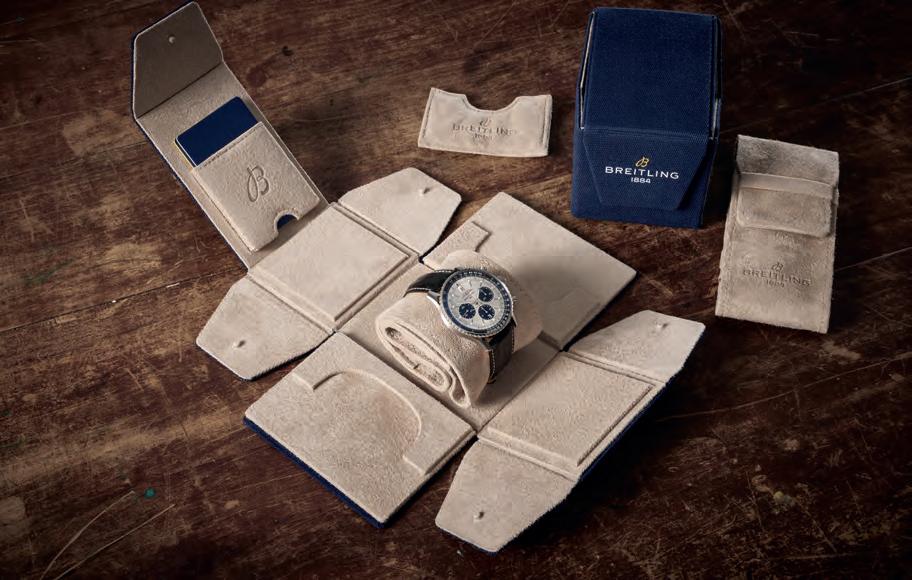

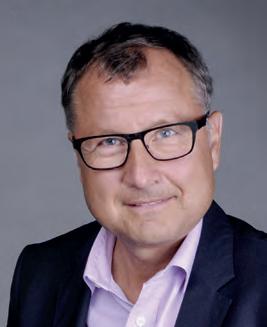


Una filiera corta per i materiali
«I recenti aumenti dei prezzi delle materie prime, sono un tema anche per il mercato del lusso e del lifestyle, che guardando alle vendite, sembrerebbe meno toccato» prosegue Dahlinger. «Non parliamo tanto della fascia luxury ma di quella intermedia, dove la sostenibilità è particolarmente sentita e spinge verso materiali percepiti come green quali legno, carta e cartone che offrono al packaging un contenuto di valore in più. C’è infatti un deciso ritorno al legno, che rappresenta il punto di equilibrio tra impatto estetico proprio del mercato luxury e sostenibilità. La confezione è un elemento importante per arrivare al prodotto e deve valorizzarlo fin dalla fase di scelta, per quanto nel lusso il focus sia molto sbilanciato sul contenuto. Un tema particolarmente vivo in un settore dove gli oggetti devono rispondere a logiche estetiche molto curate e innovative che possono allontanare dal monomateriale per soluzioni bicomponenti più difficili da riciclare. Ecco perché interpretare la sostenibilità in senso più estensivo è importante».
La ricerca di fornitori locali, scelti nelle aree dove Dahlinger produce, mira a un concetto di sostenibilità esteso, che guarda all’economia del territorio e al contenimento delle emissioni calcolate lungo tutta la catena del valore. Una riflessione che tocca
With sustainable solutions and a short supply chain, Bernd Dahlinger represents the future of the sector.
Operating for more than 150 years and arriving at the fifth generation of family ownership, the company Dahlinger is an international provider of packaging and displays for luxury and lifestyle products, with its roots in the traditional specialist retail trade for watches and jewellery. However, they also design, develop and produce completely individual packaging solutions for its major customers. The company has grown since 1871, becoming a multinational with an export share of more than 75% and 6000 customers throughout the world.
During Luxepack Monaco, ItaliaImballaggio met the managing partner Bernd Dahlinger, who told us about the new trends in luxury packaging.
Selected and sustainable materials for luxury packaging
«Our company is based in Germany, where we produced until 2002» Bernd Dahlinger begins. ««We then decided to move most of production to Asia, while moving a small part to Eastern Germany and Eastern Europe. There, the finishing of the products and the
ad esempio la scelta dei fornitori di legno selezionato per le confezioni prodotte in questo materiale. Su questo, Bernd Dahlinger prosegue «Tendiamo a creare microeconomia attorno alle nostre produzioni, mantenendo un concetto di sostenibilità che guarda all’ambiente ma anche ad economia e persone».
I trend dei prossimi anni tra packaging design e cura del dettaglio «Il lusso sostenibile è quindi una delle maggiori sfide che Dahlinger vede tra i futuri trend. Nel segmento di prezzo più basso, vediamo la combinazione di cartonino e carta, che deve essere certificata FSC. La pasta di carta, se sostenibile ed esteticamente adeguata alle nostre esigenze, sostituisce la maggior parte degli inserti stampati sottovuoto in un prodotto. Per questo motivo, siamo costantemente alla ricerca di fornitori in grado di sviluppare soluzioni innovative, indipendentemente dal fatto che si tratti di cartone, cartoncino o materiali riciclati come l’rPET. Sebbene l’MDF abbia funzionalità eccellenti, non può essere riciclato a causa dei suoi componenti incollati. Anche la plastica riciclata ha avuto una fase positiva nel mercato del lusso e del lifestyle, ma ora sta lasciando spazio a proposte più legate a materiali come il cartoncino e il legno».
production of simpler cardboard packaging is carried out. The main reason for the move was to optimise our competitiveness, considering that we also manufacture very complex, labour-intensive packaging in materials such as metal, wood and rPET, creating packages that are veritable design objects with an added value with respect to the product that they contain».
One example in this sense is the processing in 100% recycled rPET of a mono-material package for the Breitling watchmaker company. The packaging design of the box combines sustainability, functionality, aesthetics and user experience. The result is an elegant suede leather effect for the part in contact with the product which contrasts with the fabric effect of the body, designed to optimize the volume through folding the box that allows it to become totally flat. The watch holder cushion, moreover, can be unrolled and also used as a travel case, further optimising the functionality of the case. In 2021, Breitling’s packaging received the “Efficient Solution Label” mark
assigned by the “Solar Impulse” foundation to solutions that have a positive impact on the environment and on the economy.
«The recent increases in the prices of raw materials is an issue also for the luxury and lifestyle market, which regarding sales would apparently appear less affected» Dahlinger continues. «We’re not talking so much about the luxury range but about the intermediate range, in which the topic sustainability is a particularly sensitive question and tends towards materials perceived as green, such as wood, cardboard and paper which offer the packaging an additional value content. There is, in fact, a clear return to wood, which represents a balance between aesthetic impact in the luxury market and sustainability. The packaging is an important element to arrive at the product and must enhance it right from the choice phase, even though in the luxury market the focus is very biased towards content. It’s a question of particular interest in a sector in which objects must respond to very careful and innovative aesthetic logics that can veer away from a mono-material concept towards bi-component solutions which are more difficult to recycle. This is why interpreting sustainability more broadly is important».
The search for local suppliers, chosen in the areas where Dahlinger produces, aims at an extended concept of
sustainability, which looks at the local economy and at the containment of emissions calculated along the entire value chain. It’s an approach that affects, for example, the choice of suppliers of wood selected for the packaging produced in this material. Bernd Dahlinger continues on this point, «We tend to create a microeconomy around our production, following a sustainability concept that looks at the environment but also at the economy and people».
The trends of the next few years between packaging design and attention to detail Sustainable luxury is therefore one of the biggest challenges that Dahlinger sees among future trends. “In the lower price segment, we see the combination of cardboard and paper, which must be FSC-certified. Pulp made from paper that is sustainable and aesthetically fits our needs and replaces most vacuum-moulded inserts in a product. For this reason, we are constantly on the lookout for suppliers who are able to develop innovative solutions, regardless of whether they are cardboard, paperboard or recycled materials such as rPET. Although MDF has excellent functionalities, it cannot be recycled due to its glued components. Recycled plastic also had a positive phase in the luxury and lifestyle market, but is now making way for proposals that are more related to materials such as cardboard and wood».

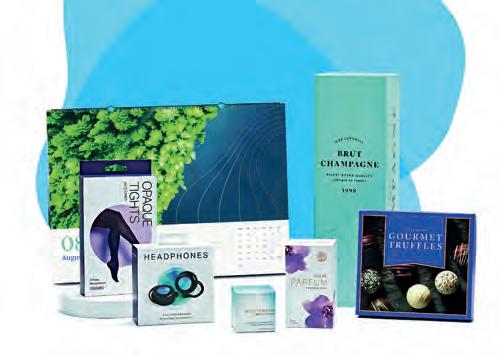

Secondo Lars Scheidweiler, Head of Packaging Solutions di Sappi Europe, «lusso e consapevolezza ambientale non si escludono a vicenda quando si tratta di imballaggi. Dagli imballaggi alle carte funzionali, dalle etichette all’innovativa cellulosa Valida, ci impegniamo a fare la nostra parte sul tema di vitale importanza della sostenibilità».
Carte da imballaggio di elevata qualità. I visitatori dello stand a Luxe Pack hanno toccato con mano campioni di prodotti del portafoglio Algro Design, cartoncini in fibra vergine che raggiungono un’armonia distintiva tra funzionalità, versatilità e fascino visivo imballaggi premium nei settori della cosmesi, dei profumi e delle bevande di lusso. Mock-up di imballaggi per cosmetici e profumi del portafoglio Fusion Topliner presentato con grammatura 200 g/m² per una stabilità ancora maggiore. La linea Fusion Embossed, una versione goffrata del Fusion Topliner 100 g/m² e 115 g/m² che presenta luminosità, elevato grado di bianco, elegante superficie lucida e affidabile stabilità dimensionale.
Carte funzionali ed etichette. Le innovative carte funzionali per imballaggi flessibili sono dotate di barriera integrata a vapor acqueo, grasso, ossigeno, aromi e oli minerali, eliminando la necessità di rivestimenti o laminazioni speciali. Le carte per etichette di alta qualità si distinguono invece per l’elevato grado di bianco e gli eccellenti risultati di stampa e finitura: studiate per i settori Food & Bev nonché dei beni di consumo, offrono un’opzione interessante ai brand del lusso che desiderano ottenere un impatto visivo distintivo e una differenziazione a scaffale.
Una materia prima per la cosmesi sostenibile. Con la cellulosa Valida, che viene utilizzata come materia prima nella formulazione finale di un’ampia gamma di cosmetici (creme per la pelle, creme solari e shampoo) Sappi presenta il sostituto perfetto degli ingredienti sintetici che possono essere considerati microplastiche. Ciò che rende Valida unica è il fatto di essere interamente biodegradabile e di offrire proprietà multifunzionali in grado di sostituire i polimeri acrilati.
Inspired by Nature materials
As Lars Scheidweiler, Head of Packaging Solutions at Sappi Europe declares « luxury and environmental consciousness are not mutually exclusive when it comes to packaging. From packaging to functional papers and labels to our innovative Valida cellulose, we are committed to doing our part on the vitally important topic of sustainability»
Packaging papers of the highest quality. Visitors to the stand at Luxe Pack had the opportunity to get a first-hand impressions of the look and feel of Sappi’s innovative packaging solutions, product samples of premium packaging for cosmetics, fragrances and high-end beverages and from the Algro Design family. Moreover Sappi presented mock-ups of cosmetics and perfume packaging from its established Fusion portfolio with 200 g/m² for even more stability and a flawless appearance. A brandnew addition to the Fusion range of papers is Fusion Embossed, an embossed version of Fusion Topliner 100 g/m² and 115 g/m². Fusion Embossed also boasts exceptional brightness, a high degree of whiteness, an elegant-looking glossy surface and reliable dimensional stability.
Speciality papers: functional paper packaging and label papers. The innovative functional papers for flexible packaging feature integrated barriers against water vapor, grease, oxygen, aroma and mineral oil - eliminating the need for special coatings or laminations. The label papers stand out with their high whiteness and excellent printing and finishing results. They have been developed for high-quality labels in the food, beverage and consumer goods sectors - a very attractive option for luxury brand manufacturers looking to achieve a distinctive visual impact and brand differentiation on shelf.
Not for cosmetics packaging, but for product content. Sappi also presented an innovation in a very different direction with its Valida cellulose fibrils. Valida is used as a raw material that goes into the final product formulation of a wide range of cosmetics, for example skin creams, sunscreens and shampoos. As a natural ingredient, it is the perfect substitute for synthetic ingredients which may be deemed as microplastics, therefore giving consumers who want to optimise their ecological footprint peace of mind. What makes Valida unique is the fact that it is entirely biodegradable and offers multifunctional properties that can replace acrylate polymers.


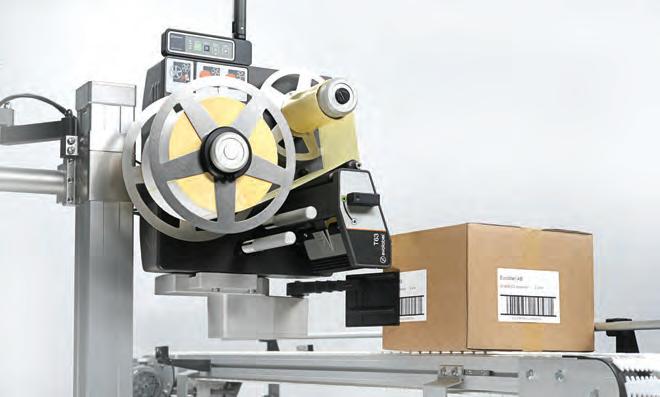

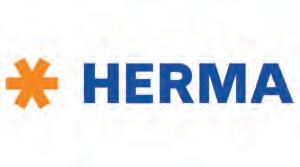

A Luxe Pack 2023, Berlin Packaging ha fatto il punto sul futuro della sostenibilità nel confezionamento. Una sintesi dell’incontro.
Berlin Packaging, il maggiore Hybrid Packaging Supplier® a livello mondiale specializzato nella fornitura di packaging in vetro, in plastica e in metallo e chiusure, ha organizzato la tavola rotonda “Shaping the future of sustainable packaging”, proponendo ai propri stakeholder un dibattito sulla sostenibilità nel mondo del packaging di oggi e di domani.
Al tavolo dei relatori, Quantis, società di consulenza ambientale, e i partner Rituals, Argotier e Tapì Group per un confronto sulle tendenze di consumo emergenti, sulle normative più recenti, nonché sul ruolo dell’ecodesign e il potere della collaborazione.
L’impatto ambientale legato agli imballaggi varia notevolmente in base al settore. Per produrre alimenti confezionati, ad esempio, si generano molte più emissioni rispetto a quelle del packaging. Invece, per i cosmetici e i prodotti per la cura della persona è l’uso da parte dei consumatori che genera le maggiori emissioni - ben il 40%, rispetto all’approv-
A Luxe Pack 2023 Berlin Packaging | Premi Industries ha presentato la collezione di packaging Infusion Fragrance in una nuova veste. L’iconico flacone 100 ml fea 15 diventa ricaricabile grazie alla nuova versione con il collo a vite, che permette al consumatore, in combinazione al set refill, di ricaricarlo una volta terminata la fragranza.
vigionamento delle materie prime (circa il 10%) e al packaging (20%).
Il modello di business di Berlin Packaging offre libertà massima nell’utilizzo di materiali e di processi che possono essere ottimizzati, con tre priorità di intervento: circolarità, ottimizzazione, riuso, che si integrano nei servizi e guidano le innovazioni e le proposte aziendali. Su questo punto, Paolo Recrosio, Berlin Packaging EMEA ha dichiarato: «Abbiamo scelto di mettere la sostenibilità al centro della nostra strategia, proprio perché consapevoli che sia una priorità imprescindibile. Siamo il maggior Hybrid Packaging Supplier® al mondo e sentiamo di dover guidare il futuro del packaging sostenibile, accelerando la creazione di valore e perseguendo la nostra visione di player di riferimento anche in questo ambito. Ci impegniamo ogni giorno a rendere il nostro business e quello dei nostri clienti sempre più sostenibile, anche grazie al supporto di un team dedicato alla sostenibilità e al no-
stro Studio One Eleven, motore di innovazione dell’azienda».
Pensare a prodotti più leggeri e ottimizzati, ove possibile riciclati e riciclabili, progettare sistemi che coinvolgono la catena del valore per introdurre soluzioni riutilizzabili e ricaricabili, lanciare materiali circolari innovativi, sono tutti aspetti dell’approccio aziendale che ha già ottenuto importanti risultati. Nel suo primo Report di Sostenibilità, Berlin Packaging evidenzia che nel 2022 ha permesso ai propri clienti di eliminare oltre 2.000 tonnellate metriche di emissioni di gas serra e ha condotto 120 valutazioni del ciclo di vita (Life-Cycle Assessments), supportandoli nel raggiungere i loro obiettivi. Nell’ultimo anno Berlin Packaging ha allineato i propri impegni ESG con metriche riconosciute a livello globale, aderendo al Global Compact delle Nazioni Unite e ponendosi obiettivi di riduzione delle emissioni in linea con la Science Based Targets Initiative (SBTi).
At Luxe Pack 2023, Berlin Packaging | Premi Industries presented the Infusion Fragrance packaging collection in a new guise. The iconic 100 ml FEA 15 bottle becomes refillable thanks to a new version with a screw neck, which allows the consumer, in combination with the refill set, to refill it once the fragrance is empty.
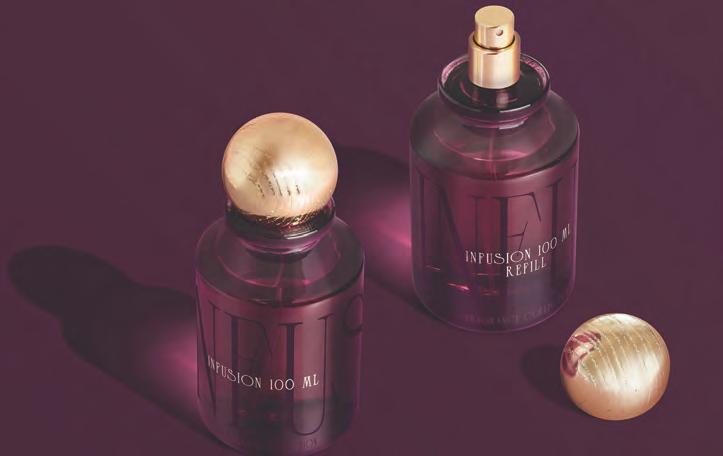
Berlin Packaging, the world’s largest Hybrid Packaging Supplier® specialising in the supply of glass, plastic and metal packaging and closures, has organised the “Shaping the future of sustainable packaging” round table, offering its stakeholders a debate on sustainability in the packaging world of today and tomorrow.
At the roundtable Berlin Packaging invited Quantis, an environmental consulting company, and partners Rituals, Argotier, and Tapì Group to discuss emerging consumer trends,
the latest regulations, the role of eco-design and the power of collaboration.
The environmental impact of packaging varies greatly by sector. In the production of packaged foods, for example, far more emissions are generated than those of the packaging. On the other hand, the use of cosmetics and personal care products by consumers is responsible for generating the most emissions - as much as 40%, compared to the sourcing of raw materials (about 10%) and packaging (20%).
The Berlin Packaging business model provides maximum freedom in the use of materials and processes that can be optimised, focusing on three main areas: circularity, optimisation, reuse, which are integrated into the services and drive innovations and business proposals.
On this issue Paolo Recrosio, CEO, Berlin Packaging EMEA has declared: «At Berlin Packaging, we have chosen to put sustainability at the centre of our strategy, precisely because we are aware that it is an indispensable priority. We are the world’s largest Hybrid Packaging Supplier® and we feel we must drive the future of sustainable packaging, accelerating the creation of value and pursuing our vision of being a reference player also in terms of sustainability. We make a daily commitment to ensuring our business and that of our customers become increasingly sustainable, also with the help of a team dedicated to sustainability and our company’s own
innovation engine Studio One Eleven». Focusing on lighter and optimised products, where possible recycled and recyclable, designing systems that involve the value chain to introduce reusable and refillable solutions, launching innovative circular materials, all being part of the company’s approach that has already achieved significant results. In its first Sustainability Report, Berlin Packaging highlighted that in 2022 it enabled its customers to eliminate over 2,000 metric tons of greenhouse gas emissions and conducted 120 Life-Cycle Assessments, supporting them in achieving their sustainability goals.
Over the past year, Berlin Packaging has aligned its ESG commitments with globally recognised metrics, adhering to the United Nations Global Compact and setting emissions reduction targets in line with the Science Based Targets Initiative (SBTi).
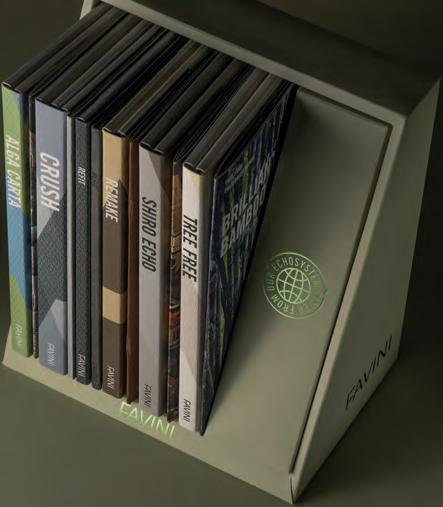


Una storia pluricentenaria alle spalle, da 30 anni Favini lavora per la sostenibilità, proponendo al mercato del lusso carte con elevate percentuali di fibra riciclata post consumo e materie prime innovative, capaci di intercettare le esigenze dell’alto di gamma in termini di aspetto, esperienza estetica e tattile. Ce ne parla Elena Simioni, product e communication manager. «Siamo forti di una recente definizione del nostro manifesto, costruito con clienti e stakeholder giocando sulle lettere del nostro nome. Con la “F” abbiamo pensato al Futuro, che per noi è senza compromessi in termini di sostenibilità sociale e ambientale. Penso ai progetti di innovazione sociale in Madagascar, dove oltre alla riforestazione diamo supporto ai villaggi nel centro del paese sviluppando percorsi di formazione e favorendo sia l’agricoltura che l’eco turismo come forma di microeconomia. Ma il futuro significa anche “creatività”, con cui non solo cerchiamo di caratterizzare ogni nostro prodotto ma che sosteniamo con il progetto Posterheroes, un concorso in cui chiediamo ad artisti, studenti e designer di esprimersi su un tema sociale con un poster 70X100. Con le migliori illustrazioni realizziamo poi un catalogo, un calendario artistico e delle mostre che ci permettono di diffondere i nostri concetti etici». Guardando ai prodotti ispirati alla sostenibilità, Simioni prosegue: «La nostra gamma prevede soluzioni in cellulosa vergine e riciclata o con percentuali di riciclato e di materiali innovativi di processi di upcycling. Nel primo caso, Contact Pack Riciclato è una carta perfettamente bianca, con range di grammatura molto alta che va da 120 a 450 e percentuali fino al 50% di fibra selezionata e riciclata. Abbiamo poi la collezione Paper from our Echosystem, che deriva dagli oltre 30 anni di esperienza nella realizzazione di carte ecologiche, che comprende Crush, carta realizzata con il 15% di fibre alternative da scarti agro-industriali. Nella stessa linea abbiamo anche Alga Carta, che contiene alghe marine, Remake, fatta con 25% di scarti della lavorazione del cuoio, Refit, creata con 15% di residui dell’industria tessile, Shiro Echo, una carta 100% riciclata e Tree Free, contenente il 75% di bambù e il 25% di linters di cotone. A questo si aggiungono varie percentuali di fibra riciclata e l’utilizzo di energia rinnovabile autoprodotta e parzialmente acquisita dall’esterno. L’obiettivo è avere soluzioni sostenibili che soddisfino le più sofisticate esigenze di confezionamento poiché il packaging “viene prima” del prodotto: quando il consumatore afferra la confezione, è spinto all’acquisto dalle emozioni tattili e visive che essa genera, un aspetto che in Favini curiamo molto grazie alla costante ricerca e sviluppo di proposte innovative».
Recycled paper for a luxury experience
With a centuries-long history behind it, for the last 30 years Favini has been working for sustainability, offering luxury paper to the market with high percentages of recycled content and innovative raw materials, capable of intercepting the requirements of the high-end sector in terms of appearance, experience and feel.
ItaliaImballaggio met Elena Simioni, its product and communication manager, at Luxe Pack 2023.
« We have been further strengthened by a recent definition of our Manifesto, developed with customers and stakeholders using the letters of our name. We have linked the “F” with the Future, which for us is without compromises in terms of social and


environmental sustainability. I can refer to the social innovation projects in Madagascar where, besides reforestation, we give support to villages in the centre of the country, developing training courses and promoting both agriculture and eco-tourism as a form of microeconomics. The future, however, also means “creativity”, with which we not only try to characterise every one of our products, but which we support with the Posterheroes project, a competition through which we ask artists, students and designers to express themselves on a social theme with a 70x100 poster. We then create a catalogue, an artistic calendar and organise exhibitions with the best illustrations which enables us to spread our ethical concepts».
Looking at products inspired by sustainability, Simioni continues: «Our range includes solutions in virgin and recycled cellulose or with recycled percentages and with innovative materials from upcycling processes. In the first case, there’s Recycled Contact Pack, a perfectly white paper with a very high grammage ranging from 120 to 450 and percentages of selected and recycled fibre of up to 50%. Then there’s the Paper from our Echosystem collection, the result of almost 30 years of experience in the development of ecological papers, which includes Crush, a paper made with 15% of alternative fibre from agro-industrial waste. In the same line we have Alga Carta, which contains seaweed, Remake, made with 25% of waste from leather
processing, Refit, created with 15% of residues from the textile industry, Shiro Echo, a 100% recycled paper and Tree Free, containing 75% bamboo and 25% cotton linters. In addition, there are various percentages of recycled fibre and the use of renewable energy which is self-produced and partially purchased outside of the company. The objective is to have sustainable solutions that meet the most sophisticated packaging needs since the packaging “comes before” the product: when the consumer handles the package, they are persuaded to purchase by the tactile and visual emotions it generates, an aspect that we at Favini take great care with, thanks to the constant research and development of innovative proposals».

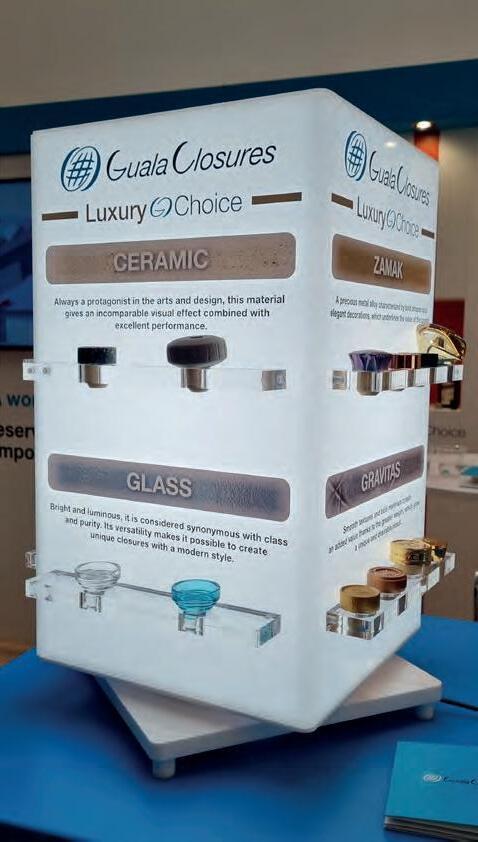
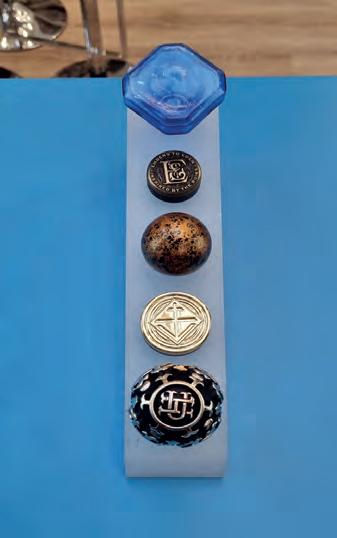
È dagli anni ’50 che Guala Closures garantisce protezione del prodotto con le sue soluzioni, dai primi modelli di chiusure non refillable brevettate, a quelle di garanzia per il mercato spirits. Oggi a distanza di 70 anni, il gruppo è presente in tutto il mondo con 30 stabilimenti, dove si producono chiusure capaci di interpretare le esigenze del mercato in termini di sicurezza, innovazione di design e materiali, sostenibilità. Nel corso di Luxe Pack 2023, Simone Crivelli group marketing manager di Guala Closures, ha offerto uno spaccato sulle novità per il segmento lusso.
«Nelle chiusure della gamma ad alto valore aggiunto - la Luxury Choice - spicca l’uso di numerose tipologie di materiali, che spaziano dalla plastica all’alluminio, dallo zamac alla ceramica. Soluzioni innovative con cui Guala Closures risponde alle esigenze del mondo spirits ma anche di altri mercati di destinazione, dove prevalgono le chiusure safety e i tappi a vite, sia per acqua minerale che per olio. In generale abbiamo lavorato su
Creatività e innovazione garantite dalla trasversalità su mercati diversi
Affermato player internazionale, Pozzoli ha celebrato nel 2023 i 55 anni di attività. A partire dal mercato dell’entertainment, fino al cosmetico e profumeria, fashion, wine and spirit, Pozzoli offre confezioni di alta gamma, caratterizzate da creatività, scelta dei materiali, qualità artigianale, efficienza industriale ma su misura e una serie di brevetti di grande successo. A Luxe Pack 2023 Daniela Sapone, responsabile marketing ha parlato delle ultime tendenze del settore.
«Festeggiamo i 55 anni ricordando il
Guala Closures has been guaranteeing product protection since the 1950s with its solutions, from the first patented non-refillable closure models to tamper-evident closures for the spirits market. Today, 70 years later, the group operates throughout the world with 30 factories, where caps able to interpret market needs in terms of safety, design and material innovation and sustainability are produced. During Luxe Pack 2023, Simone Crivelli, group marketing manager of Guala Closures, gave us an overview of the new developments for the luxury sector.
«In the high added-value range of closures – the Luxury Choice – the use of numerous types of materials is notable, ranging from plastic to aluminium, from Zamak to ceramic.
Guala Closure’s innovative solutions respond to the demands of the spirits market, but also other target markets, where safety closures and screw caps are prevalent, both for mineral water and for oil. In general, we have worked on the names and colours of the different closures so as to clearly define Gual’s identity
fondatore, Aldo Pozzoli, mancato a febbraio 2023 e presentando le nostre migliori soluzioni per il mercato del lusso, con novità che incarnano creatività, qualità e design. Guardiamo in particolare al mercato del wine e spirits e della profumeria, per i quali abbiamo declinato varie proposte basate sul nostro brevetto Twist2OpenTM
Cartonata al 100%, priva di plastica e di calamite, Twist2Open TM è una soluzione monomateriale, caratterizzata da una scatola rigida dotata di una par-
and its offer for the different target markets ». Looking at sustainability and at future trends, Crivelli continues: «For Guala, sustainability has been an important issue since 2011 when we published our first Report, leading us along a path that will reach its peak in 2030, in the search for an ever-greater sustainability for our 30 plants throughout the world. It’s a theme very linked to future trends, in which we will see pressure to use sustainable and increasingly different materials of classic closures, with requests for particular customised and tailor-made solutions. In addition, there is a rapidly expanding growth in safety closures, a historic business for Guala, in India and China.
Another segment that we are developing, also through awareness campaigns, is that of screw caps for wines & spirits, very well-known in various markets, especially Anglo-Saxon ones, but considered cheap by European markets, particularly Italy, France and Germany. This is despite the excellent barrier properties and the extensive customisation possibilities that this product allows ».
nomi e cromie delle diverse chiusure in modo da definire con chiarezza l’identità di Guala e della sua offerta per i differenti mercati di destinazione».
Guardando alla sostenibilità e ai trend futuri, Crivelli prosegue: «Per Guala la sostenibilità è un tema attuale dal 2011, con la pubblicazione del nostro primo Rapporto, che ci ha condotti lungo un percorso che avrà il suo apice nel 2030, alla ricerca della sempre maggiore sostenibilità per tutti i nostri 30 impianti nel mondo. È un tema molto legato ai trend del futuro, dove vediamo la spinta a utilizzare materiali sostenibili e sempre diversi dalle classiche chiusure, con richieste di personalizzazioni particolari e tailor made. A questo si aggiunge la crescita delle chiusure di sicurezza, business storico per Guala, in grande espansione in India e Cina. Altro segmento che stiamo sviluppando, anche con azioni di sensibilizzazione, è quello del tappo a vite per il wine & spirits, molto conosciuto e diffuso in vari mercati, specialmente anglosassoni, ma ritenuto cheap da quelli europei, in particolare Italia, Francia e Germania. Questo, a dispetto delle eccellenti proprietà barriera e dalle ampie possibilità di personalizzazione che questo prodotto permette».
ticolare chiusura e apertura che permette di svelare il prodotto in modo scenografico. Grazie alla soluzione Pozzoli, l’unboxing diventa parte dell’esperienza».
La presenza trasversale di Pozzoli su più segmenti permette all’azienda di trasferire competenze e idee creative da un mercato all’altro, in un costante percorso di crescita in termini di qualità e design, a cui si aggiunge una grande attenzione alla sostenibilità grazie all’uso di materiali selezionati (in particolare a base carta) e alle numerose certificazioni, di cui Pozzoli si è dotata per garantire processi trasparenti ed efficaci.
An international operator with extensive experience, Pozzoli has celebrated in 2023 55 years of activity. From the entertainment market to cosmetics and perfumery, fashion, wine and spirits, Pozzoli offers high-end packaging characterised by creativity, choice of materials, handcrafted quality, industrial efficiency (but tailor-made) and a series of very successful patents. Daniela Sapone, marketing manager, spoke to us at Luxe Pack 2023 about the trends in the sector.
«We are celebrating our 55 years remembering our founder, Aldo Pozzoli, who passed away in February 2023, and presenting our best solutions for the luxury market, with new developments that encapsulate creativity, quality and design. We are focusing, in particular, on the wine and spirits and perfumery markets, for which we have various proposals based on our Twist2OpenTM patent. 100% cardboard, free of plastic and magnets, Twist2Open is a single-material solution, characterised by a rigid box with a particular

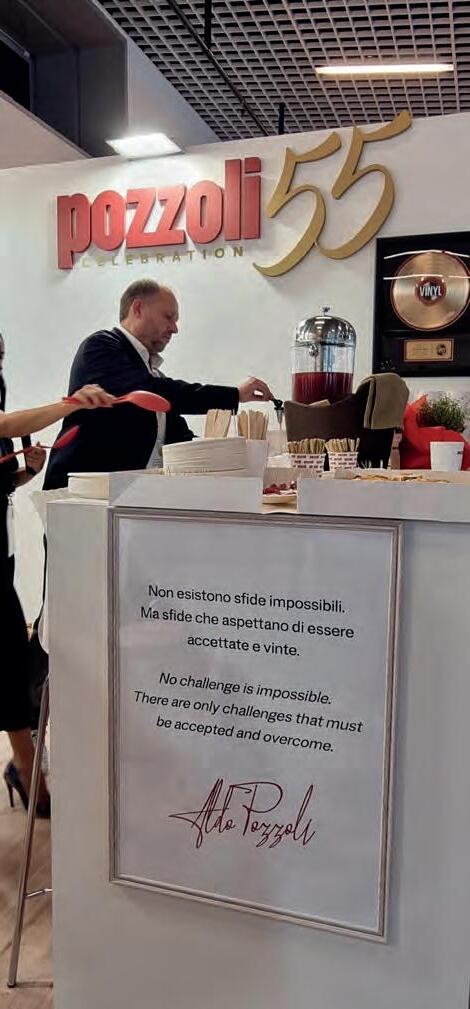
opening and closure which makes it possible to reveal the product in a theatrical way.
Thanks to the Pozzoli solution, unboxing becomes part of the experience ». The cross-cutting presence of Pozzoli in a number of segments allows the company to transfer know-how and creative ideas from one market to another, in a constant process of growth in terms of quality and design. In addition, there is great attention to sustainability, thanks to the use of selected materials (particularly paper-based) and to the numerous certifications Pozzoli possesses, guaranteeing transparent and effective processes.




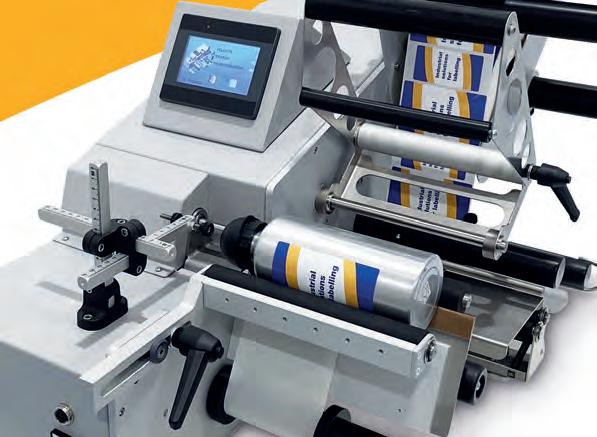


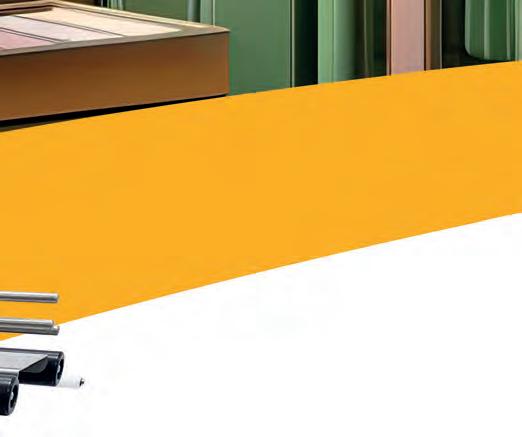
DWR Round Touch, pensato e sviluppato per ogni esigenza.


Orientati verso le necessità uniche del settore cosmetico, progettiamo soluzioni che rispondono a ogni richiesta produttiva. Monitoriamo e verifichiamo ogni step produttivo per assicurare l’efficienza e l’affidabilità dei nostri prodotti. La nostra profonda comprensione del settore ci guida nell’offrire continuamente innovazioni mirate a superare le aspettative per ogni esigenza specifica.

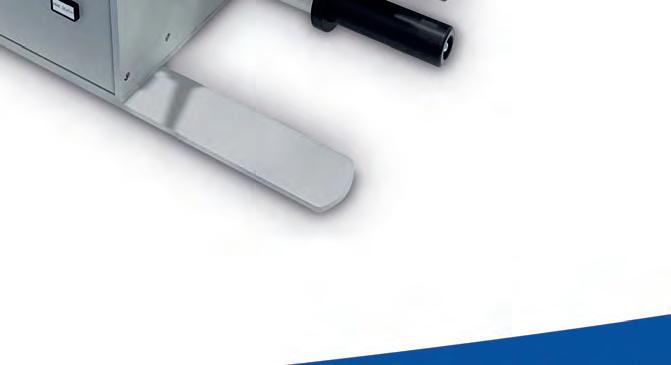
Soluzioni di automazione industriale per l’etichettatura

Wide Range s.r.l.
Via Ferraris, 21 20047 Cusago (MI)
Tel. 02.90.193.66
www.widerange.it - info@widerange.it

Per il secondo anno consecutivo dopo il lockdown, si è tenuto in presenza il consueto appuntamento annuale sui MOCA, organizzato il 20 dicembre 2023 dall’Istituto Italiano Imballaggio, con la partecipazione da parte della Dottoressa Maria Rosaria Milana, già responsabile del Laboratorio Nazionale di Riferimento sui Materiali a Contatto con Alimenti dell’ISS, e dell’intero team. Come di consueto, l’evento ha suscitato grande inte-
MATERIALI E OGGETTI A CONTATTO CON GLI ALIMENTI
Aggiornamento, revisioni e nuove prospettive della legislazione sui MOCA.
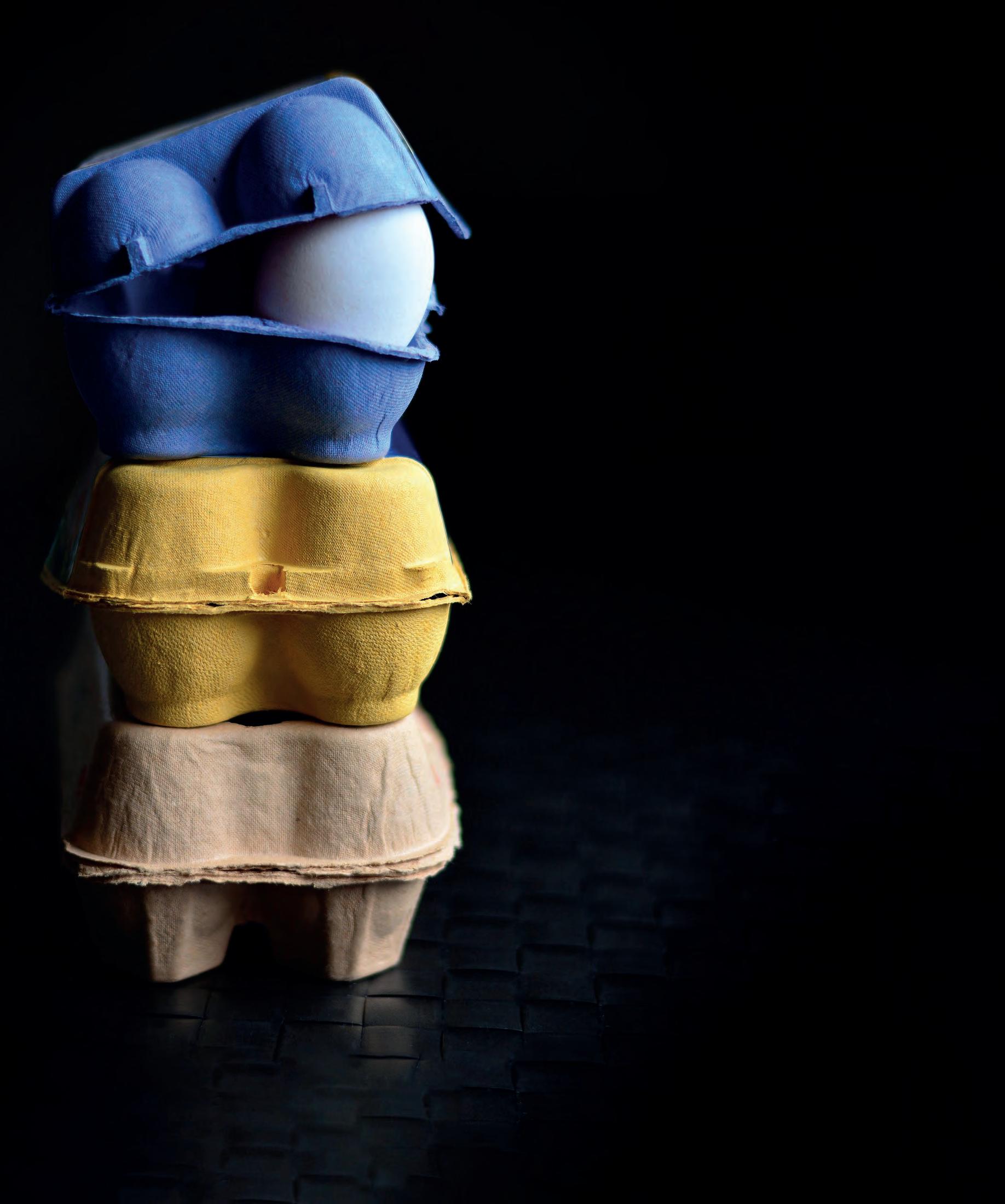
resse e ha visto la partecipazione di un pubblico di numerosi esperti.
Nel corso della mattinata sono state illustrate le leggi vigenti con i vari cambiamenti regolatori legati ad esse, e le norme in sviluppo nell’immediato futuro; le presentazioni esposte dal gruppo dell’ISS hanno descritto lo stato attuale del quadro normativo Europeo e Nazionale in merito ai MOCA; un’attenzione particolare è stata rivolta alle nuove tendenze e alle nuove normative, con particolare attenzione agli aggiornamenti in merito al Regolamento per l’utilizzo di plastica riciclata a contatto con gli alimenti.
Il pomeriggio è stato caratterizzato da un question time legato alle tante domande da parte delle aziende, con l’obiettivo di fornire risposte operative al gran numero di esperti presenti in sala.
Stato attuale e attività in corso per modificare la legislazione
La presentazione della dottoressa Milana ha aperto la giornata con un quadro generale sulla legislazione dei MOCA.
Sono stati esposti i principali criteri stabiliti nei regolamenti quadro Reg CE 1935:2004 e Reg CE 2023:2003, ricordando che i MOCA rientrano nell’ambito della sicurezza alimentare e, pertanto, seguono la stessa regolamentazione del settore alimentare per quanto riguarda i controlli ufficiali.
È stato rammentato che, nel 2020, è stato annunciata la rettifica generale della Strategia “Farm to Fork” della Commissione Europea, che consiste nel piano sviluppato dalla Commissione per condurre il cambiamento verso un sistema alimentare giusto, sano e rispettoso dell’ambiente. Ne consegue che gli Stati membri, nell’attuazione delle norme e delle leggi, devono allinearsi alle politiche comunitarie e sono vin-

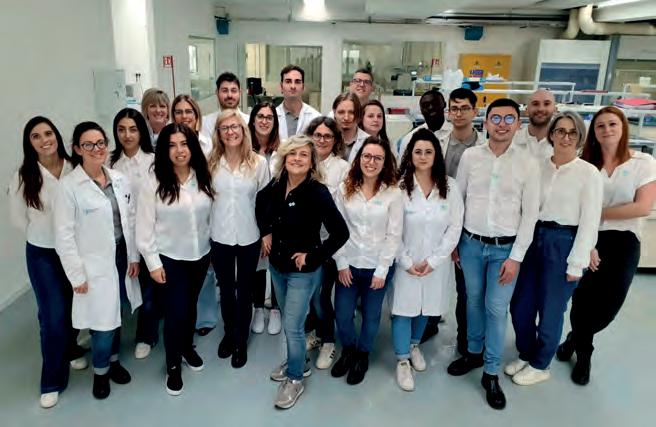
colati dagli obiettivi fissati dalla Commissione. Per quanto riguarda i cambiamenti nella legislazione MOCA, è molto probabile che la futura strategia si baserà sullo spostamento dell’attenzione verso il MOCA finale, dando la priorità alla valutazione e alla gestione delle sostanze e all’uso di alternative più sicure e sostenibili.
Di conseguenza, la Commissione Europea si occuperà di definire regole più mirate per le caratteristiche finali (MOCA a contatto con i prodotti alimentari) per identificare il livello di sicurezza e i modi per raggiungere tale livello, rafforzando le regole sulle buone pratiche di fabbricazione.
Per quanto concerne la priorità delle sostanze, la valutazione della sicurezza deve includere:
- NIAS (sostanze non intenzionalmente aggiunte);
- le sostanze CMR (sostanze cancerogene mutageniche e tossiche per la riproduzione);
- gli ED (distruttori endocrini, le sostanze persistenti, bioaccumulative e tossiche);
- altre sostanze con proprietà specifiche (ad esempio sostanze in nanoforma).
Il sostegno allo sviluppo di alternative più sicure e sostenibili, come i metodi di produzione vegetali o biologici, dovrà manifestarsi con chiarezza; saranno elaborate norme per sostenere tutte le forme di riutilizzo “sicure” e per includere tutte le tecnologie di riciclaggio, garantendo coerenza con la normativa ambientale.
Fra le iniziative future, da annotare una maggiore priorità per lo scambio di informazioni sul rispetto e il controllo dei manufatti, migliorando la qualità e l’accessibilità delle informazioni lungo la catena di approvvigionamento. Saranno sviluppate norme chiare sui
Servizi personalizzati e su misura, utili a ottenere prodotti tecnologicamente idonei allo scopo e sicuri, tramite uno studio e un piano mirato guidato dalla conoscenza dei materiali e degli affari regolatori connessi ai mercati, in un’ottica di sostenibilità e razionalità dei controlli.


Il Food Contact Center Srl - centro che fornisce servizi specialistici di analisi su materiali, fondato a Pistoia nel 2016 per iniziativa di Marinella Vitulli, e oggi attivo anche nel laboratorio materiali di Brescia e negli uffici di Cuneo - mette a disposizione dei propri clienti anni di esperienza in attività di studio e di analisi su packaging e materiali, grazie a un team di oltre 25 tecnici qualificati.
Nel 2022, dalla sinergia fra il Food Contact Center e un gruppo di professionisti del settore con esperienza pluridecennale nasce a una nuova società: il Food Contact Services Srl, che ha come scopo principale la diffusione della cultura della qualità di processi e prodotti nelle aziende produttrici e utilizzatrici di materiali a contatto con gli alimenti. Food Contact Services si occupa di consulenza e formazione, elaborando progetti su misura per le imprese; fornisce servizi di aggiornamento normativo e di consultazione on line delle legislazioni globali sui MOCA e sull’etichettatura cogente.
Può aiutare le imprese a definire un piano di autocontrollo o manuale, progettando una valutazione del rischio, in collaborazione con il Food Contact Center.
A questo proposito, è possibile operare tramite test volti alla conformità, ma non solo. Le prove non sono l’unica forma ammessa per la definizione di conformità: con adeguate valutazioni guidate da competenze specifiche, è possibile associare altri calcoli o considerazioni a un numero limitato di prove analitiche, ad esempio correlati a migrazioni per calcolo, o stima di simulanti e situazioni peggiorativi, mirati anche ad associare i provini testati con svariate referenze, anche tramite la valutazione di spessori, ingredienti e processo utilizzati; è possibile così programmare piani di prove sostenibili per le aziende, che insieme ad altre competenze consentono di definire la documentazione di supporto.
Food Contact Center è specializzato anche in valutazione della esposizione del consumatore ed esecuzione di prove di migrazione di contaminanti food contact in alimenti, tra cui prove accreditate Accredia quali la migrazione in alimenti di Bisfenolo A e di elementi metallici come ad esempio Alluminio e Ferro, aspetti chiave anche per valutare la conformità di macchinari ed elettrodomestici.
Fondamentale anche l’analisi dei NIAS, accreditata dal laboratorio, per l’identificazione di sostanze non intenzionalmente aggiunte, tramite tecniche analitiche Untargeted, argomento sul quale il Centro si è specializzato tramite studi e costruzione di librerie e database svolti in collaborazione con le Università di Pisa e Firenze e con il produttore di strumentazione Sciex. In merito alle strategie analitiche, il Centro collabora attivamente in gruppi di lavoro nazionali e internazionali quali ad esempio commissioni presso GIFLEX, Istituto Italiano Imballaggio e ILSI Europe. Oltre ai test, Food Contact Center&Services possono fornire ulteriore assistenza nella conseguente stesura della dichiarazione di conformità, prevista dalla legge, nonché nell’ottimizzazione e nel controllo dei sistemi di gestione aziendale, nell’ambito delle certificazioni facoltative, anche attraverso l’esecuzione di ispezioni accreditate Accredia ai sensi della norma ISO 17020.
Altri aspetti su cui il team supporta le aziende sono le questioni relative alle valutazioni del ciclo di vita, la progettazione di test di sfida per i materiali riciclati, l’eco-design e l’impatto ambientale, l’etichettatura in conformità con la normativa ambientale europea e non UE.
dati necessari e sul trasferimento di informa zioni, introducendo la dichiarazione di confor mità per tutti i MOCA, obbligatoria in Italia già da lungo tempo, ed eventualmente digitalizzando le informazioni per supportare le Imprese.
Sarà inoltre possibile esercitare il controllo ufficiale anche tramite organismi diversi dalle autorità com petenti, quali gli organismi “delegati” (come da rego lamento UE 625/17) o gli organismi “notificati”. Sarà importante anche sviluppare ulteriormente norme tecniche e metodi analitici unificati.
Interessanti le successive considerazioni condivise, focalizzate sui driver del cambiamento, tra cui si eviden ziano i nuovi approcci scientifici, le innovazioni industria li, nonché una chimica analitica sempre più potente e correlata alla ricerca scientifica e tecnologica.
Evoluzione di specifici lavori comunitari: stato dell’arte
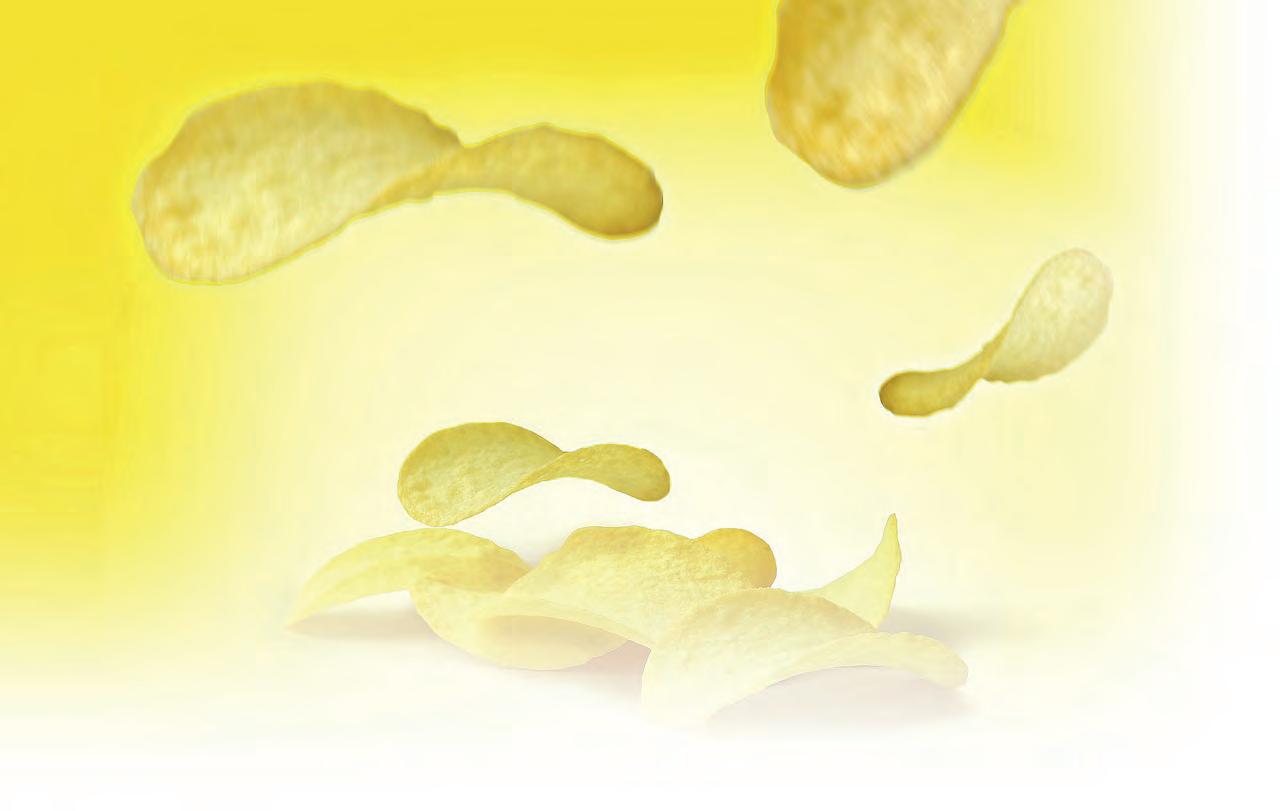

Successivamente si è entrati nel dettaglio della attività svolte da specifici tavoli tecnici istituzionali.
• Sono stati descritti gli emendamenti del Regolamento Plastiche (UE)10/2011 pubblicati nel 2023, che non hanno modificato gli articoli ma solo modificato l’Elenco Unico; sono state introdotte nuove sostanze; inoltre è stata eliminata la sostanza FCM 96 «Farina di legno e fibre, non trattate». È stato rimosso anche l’acido salicilico e ci sono nuovi limiti per alcuni ftalati.
• Per quanto riguarda i progetti del 18° emendamento, è chiara la necessità di allinearsi al Regolamento (UE) 2022/1616, il che comporterà modifiche all’articolato.
• È probabile che verranno inseriti i test di migrazione anche per oggetti multistrato multimateriale, e saranno aggiunti chiarimenti su requisiti di purezza delle sostanze utilizzate e gestione di sfridi di produzione.
Probabili anche modifiche alla Dichiarazione di Conformità, e deroghe per l’utilizzo di biocidi.
• Riguardo la possibilità di introdurre un limite di migrazione per lo stirene, è stato chiarito che i laboratori di riferimento stanno lavorando per definire i metodi di migrazione nell’alimento.
• In relazione ai tavoli tecnici della Commissione UEDG Santè, continuano le attività per ridefinire i limiti di migrazione di metalli pesanti da oggetti in ceramica. Si lavora poi sulle nuove misure relative al Bisfenolo A, sulla revisione della normativa MOCA e sulle pubblicazioni delle autorizzazioni per il riciclo. Questo percorso progressivo terminerà probabilmente oltre il 2024.
• Una presentazione specifica si è focalizzata sul Regolamento (UE) 1616/2022 sulle materie plastiche da riciclo, un tema chiave tenuto conto delle esigenze legate all’economia circolare. Il nuovo regolamento ha un impatto importante in quanto istituisce una nuova base giuridica per tutte le procedure. I processi dovranno essere gestiti mediante un sistema di garanzia della qualità che garantisca la conformità ai regolamenti (UE) 1616/2022 e (CE) 2023/2006.
Il processo di riciclo deve poter ridurre ogni contaminazione iniziale a livelli che non presentino rischi per la salute umana; la fase di decontaminazione è per-
altre materie plastiche) e sistemi closed loop. Il processo dovrà assicurare il rispetto di quanto previsto dall’art. 3 del Reg (EC) 1935/2004, stabilendo le condizioni d’uso ed eventuali restrizioni d’uso, dimostrando la sicurezza mediante una specifica Dichiarazione di Conformità.
Saranno necessarie strategie di valutazione ad hoc per la decontaminazione dei polimeri oggetto di indagine e analisi per l’identificazione di contaminanti inattesi. Fondamentale, in primis, la caratterizzazione dei materiali di input, che devono provenire da materiali e oggetti di materia plastica fabbricati in conformità alla legislazione sulle materie plastiche. È altresì necessario presentare all’autorità competente, nella scheda riassuntiva del monitoraggio della conformità (CMSS), un fascicolo sintetico per il controllo della conformità.
• Le presentazioni successive hanno riguardato le attività in corso da parte del laboratorio Europeo EURL FCM, e le leggi attualmente in vigore su Plastiche, Carte e Cartoni, Metalli e leghe.
Il laboratorio JrC sta lavorando anche per fornire indicazioni sulla definizione di durata di vita massima prevista di un MOCA, sulle istruzioni per rallentare il deterioramento, indicando descrizione dei cambiamenti osservabili che indicano la fine vita del MOCA.
Le risposte operative ai quesiti posti dalle aziende Nel pomeriggio del 20 dicembre si è tenuto il question time, con le domande dei presenti consegnate nel corso della mattinata, e le risposte del team dell’Istituto Superiore di Sanità, seguite da commenti sugli aspetti applicativi. Quest’anno il dibattito si è articolato su domande varie, dalla gestione dei NIAS, alle documentazioni per il dialogo di filiera; si è discusso sui materiali in plastica riciclata, sulle percentuali di plastica riciclata utilizzabili in ambito PET, sulla validazione di macchine alimentari e sulla determinazione dello stirene in alimenti. Le domande sono state numerose e il grande pubblico presente nella sala ha potuto ancora una volta apprezzare la competenza e la volontà del gruppo di lavoro dell’Istituto Superiore di Sanità di discutere le complesse questioni legate alla legislazione del contatto con gli alimenti.
Update, revisions and new perspectives of FCM legislation.
By Marinella Vitulli, Food Contact CentreFor the second year in a row after the lockdown, the annual event on FCM was held in person, scheduled on 20 December 2023 by the Italian Packaging Institute, with the participation of Maria Rosaria Milana, already Head of the National Reference Laboratory on Food Contact Materials of the ISS (Italian National Institute of Health) and of the entire team. The event was once again of great interest and was attended by an audience composed of many experts and insiders in the field.
In the morning session, the current laws were reviewed together with various relative regulatory changes, as well as regulations under development for the immediate future; the contributions of the ISS group described the current state of the European and national legislative framework regarding FCM; particular attention was given to new trends and new regulations, focusing on updates regarding the Regulations for the use of recycled plastic in contact with foods.
The afternoon session was characterised by a question time linked to the numerous questions posed by companies, with the aim of providing concrete answers to the large number of experts present in the hall.
Changes to the legislation: current situation and activities in progress
The contribution of Dr Milana opened the day with a general overview of FCM legislation. The key principles reported in the framework regulations Reg EC 1935:2004 and Reg EC 2023:2003 were illustrated, pointing out that FCM are part of food legislation and comply with the same food sector rules as far as official controls are concerned.
It was pointed out that a general adjustment of the “Farm to Fork” Strategy was announced by the European Commission in 2020 to guide a change towards a fair, healthy and environmentally friendly food system. Member States, in the implementation of the regulations and
laws, will then have to align to European Community policies and are bound by the objectives established by the Commission.
With regards to changes in FCM legislation, it is very likely that the strategy will be based on shifting the focus of the final FCM to giving priority to the assessment and management of the substances and on the use of safer and more sustainable alternatives.
As a result, the European Commission will concentrate on defining more targeted rules for the final FCM characteristics to identify the level of safety and the ways to achieve such a level, strengthening the rules on good manufacturing practices.
With regards to priorities regarding substances, the safety evaluation must include:
- NIAS (Non-Intentionally Added Substances);
- CMRs (Carcinogenic, mutagenic and reprotoxic substances);
- EDs (endocrine disruptors; persistent, bioaccumulative and toxic substances);
- other substances with specific properties (for example, substances in nano-form).
There must also be clear support for the development of safer and more sustainable alternatives, such as, for example, production methods based on plants or bio-based substances; rules will be developed for supporting all forms of “safe” re-use and for including all recycling technologies, ensuring consistency with environmental law
Among future initiatives, it’s worth noting a greater priority for the exchange of information on the compliance and control of products, improving the quality and accessibility of information along the supply chain.
Clear rules will be developed on required data and on the transfer of information, introducing the Declaration of Conformity for all FCM (already mandatory in Italy for some time), and possibly digitalising the information to support businesses.
It is also possible to refer to bodies
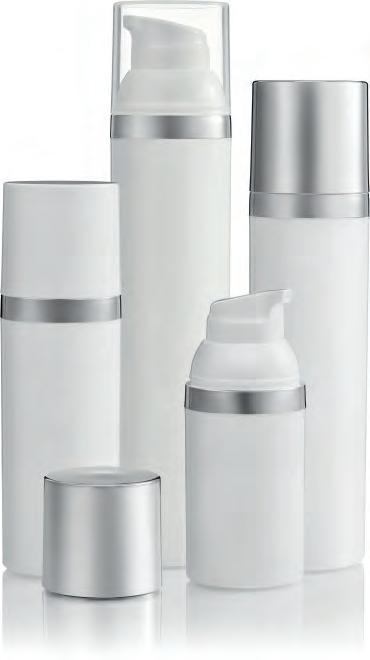
Personalised and tailored services, useful for obtaining products that are technologically suitable for the purpose and safe, through a study and a targeted plan guided by knowledge of materials and regulatory affairs related to the markets, with a view to sustainability and rational controls.
The Food Contact Center Srl - a center that provides specialist material analysis services, founded in Pistoia in 2016 on the initiative of Marinella Vitulli, and today operating in the materials laboratory in Brescia and in its offices in Cuneo - offers its clients years of experience in the study and analysis of packaging and materials, thanks to a team of over 25 qualified technicians.
In 2022 a new company was established thanks to the synergy between the Food Contact Center and a group of professionals in the sector with decades of experience: the Food Contact Services Srl, whose main aim is the dissemination of culture of process and product quality in manufacturing companies and users of materials in contact with foods. Food Contact Services offers advice and training, drawing up tailored projects for enterprises; it provides regulatory updating and online consultation services on global FCM (Food Contact Materials) legislation and on mandatory labelling.
It can assist enterprises to define a self-control or manual plan, designing a risk assessment in collaboration with the Food Contact Center.
In this regard, it’s possible to operate through targeted conformity tests, but not only. Tests are not the only form admitted for the definition of conformity: with adequate assessments guided by specific skills, it’s possible to associate a limited number of analytical tests with other calculations or considerations, for example, correlated computational migrations, or estimation of simulants and pejorative situations, aimed also at associating the samples tested with various references, also through the evaluation of the thicknesses, ingredients and process used; it’s possible, in this way, to programme sustainable test plans for companies, which together with other skills allow for the definition of the supporting documentation.
Food Contact Center is also specialised in the evaluation of consumer exposure and in the performance of migration tests of food contact contaminants, including migration of Bisphenol A and metals such as, for example, Aluminium and Iron in food, key aspects also for evaluating the conformity of machines and appliances. Evaluation of NIAS (Non-Intentionally Added Substances) through Untargeted analytical techniques, is also fundamental. This is an area on which the Center has become specialised through studies and the development of libraries and databases in collaboration with the University of Pisa and Florence and with the instrumentation producer, Sciex. With regards to analytical strategies, the Center actively collaborates with national and international working groups such as, for example, commissions from GIFLEX, the Italian Packaging Institute and ILSI.
After the tests, Food Contact Center&Services can provide further assistance in the consequent drawing up of conformity declarations, as provided for by law, as well as the optimisation and control of company management systems, in the context of voluntary certifications, also through the carrying out of Accredia accredited inspection visits according to ISO 17020.
Other aspects on which the team supports companies are in areas related to life-cycle assessments, the planning of challenge tests for recycled materials, eco-design and environmental impact, and labelling in compliance with environmental legislation pertaining to European and non-EU laws.
other than the Competent Authorities for official controls, such as “Delegated” bodies (as per the Regulation on Official Controls 625/17) or “Notified” bodies. It will also be important to further develop technical regulations and uniform
scientific and technological research.
How specific European Community initiatives are evolving Attention was then focused on the activities carried out by specific institutional technical working groups.
• The amendments to the Plastics Regulation (EU)10/2011 published in 2023, which didn’t modify the articles but only the Single List, were described; new substances have been introduced; in addition, the FCM 96 substance «Wood flour and fibres, untreated» has been eliminated. Salicylic acid has also been removed and there are new limits for certain phthalates.
• With regard to the 18th amendment projects, the need to align with Regulation (EU) 2022/1616, which will imply changes to the articles, is clear.
• It’s likely that migration tests will be introduced also for multi-material multi-layer objects, and clarifications on the purity requirements of substances used in the management of production waste.
Modifications to the Declaration of Conformity are also probable, as well as exception for the use of biocides.
• With regards to the possibility of introducing a migration limit for styrene, it has been clarified that reference laboratories are working to define migration methods in the food.
• In relation to the technical commissions of the EU Commission – Health and Food Safety Directorate General, they are continuing their work to redefine the migration limits of heavy metals from ceramic objects. Work is being carried out on new measures regarding Bisphenol, on a revision of the FCM regulation and on the publication of recycling authorizations. This progressive path will probably end beyond 2024.
fundamental, and the use of adequate technologies (such as the mechanical recycling of POET), and new technologies (for example, the recycling of other plastics) is permitted, and closed loop systems. The process must ensure compliance with the provisions of art. 3 of Reg (EC) 1935/2004, establishing conditions of use and any use restrictions, demonstrating safety through a specific Declaration of Conformity. Ad hoc evaluation strategies will be necessary for the decontamination of the polymers subject to investigation and analysis for the identification of unexpected contaminants. Of fundamental importance, first of all, is the characterization of the input materials, which must come from plastic materials and articles manufactured in accordance with plastics legislation. It is also necessary to submit to the competent authority, in the Compliance Monitoring Summary Sheet (CMSS), a summary file for checking compliance.
• The following presentations referred to ongoing activities of the European Union Reference Laboratory for Food Contact Materials (EURL-FCM), and the laws currently in force on Plastics, Papers and Cardboards, Metals and alloys. The JRC laboratory is also working to provide indications on the definition of the expected maximum lifespan of an FCM, om instructions to slow down deterioration, providing a description of the observable changes that indicate the end of life of the FCM.
analytical methods.
The subsequent considerations shared were interesting, focusing on the drivers of change, which include new scientific approaches, industrial innovations, as well as an increasingly powerful analytical chemistry linked to
• A specific presentation focused on Regulation (EU) 1616/2022 on recyclable plastic materials, a key issue taking account of the needs related to the circular economy. The new regulation has an important impact as it establishes a new legal basis for all procedures. The processes must be managed through a quality assurance system that ensures compliance with Regulations (EU) 1616/2022 and (EC) 2023/2006. The recycling process must be able to reduce any initial contamination to levels that are not a risk to human health; the decontamination phase is, therefore,
A question time was held in the afternoon of 20 December, with questions from those present submitted during the morning, and the responses of the Italian National Institute of Health team, followed by comments on the application aspects. This year the discussion was broken down according the various questions, from the management of NIAS, to documentation for supply chain dialogue; there was discussion about recycled plastic materials, on the percentages of recycled plastic usable in a PET context, on the validation of food processing machines and on the identification of styrene in foods. There were many questions and the large audience present in the hall was once more able to appreciate the expertise and helpfulness of the ISS work team in discussing complex questions linked to food contact legislation.
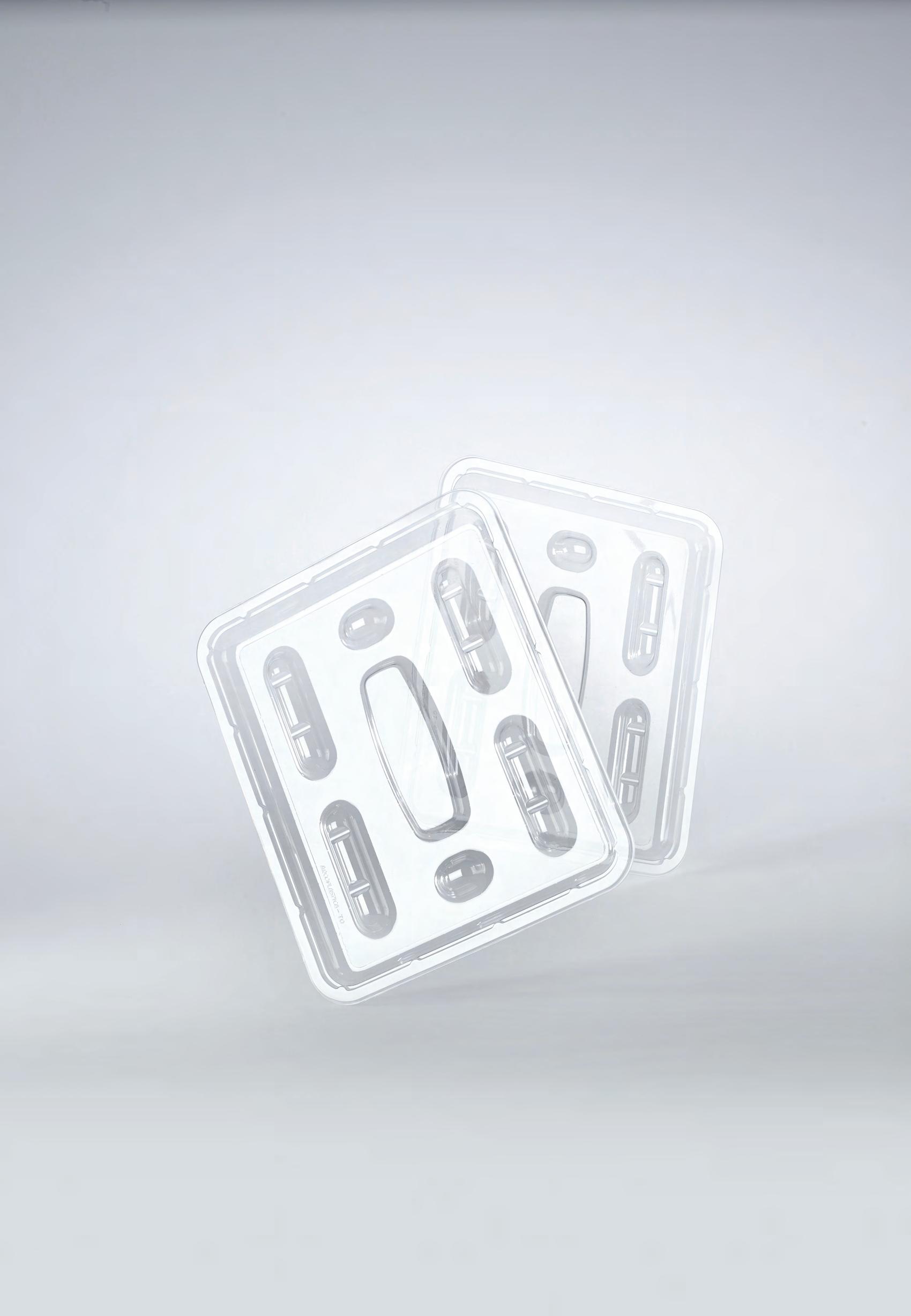


The Community studying and working for the digital transition of the industrial sector has been expanded, thanks to the collaboration of a strategic department like that of automatic machine manufacturers..
The entrance of UCIMA (the Italian Association of Automatic Packing and Packaging Machinery Manufacturers) into Digital Industries World (the association committed to promoting the digital transformation in industry) comes at the culmination of a collaborative journey that started in 2022 with participation at the “Connected Machines” event. It then continued in 2023 with its presence and patronage at Macchine Protette e Macchine Connesse (Protected Machines and Connected Machines), as well as with its participation at “Digital Servitisation in the machinery sector”, DIW’s first Monitoring Centre for Industry 4.0. This last initiative, in particular, intends to measure the extent of industry’s digital maturity in our country and involves numerous representatives of the sector, including also partner associations of UCIMA (Acimac and Amaplast). Despite coming from different contexts, DIW and UCIMA share a number of fundamental objectives in their daily activities: to promote digitalisation and exploit the innovations that Italian companies are able to develop, as, moreover, underlined by the UCIMA’s President Riccardo Cavanna: «We decided immediately to join Digital Industries World because the themes of digitalisation, cybersecurity, servitisation and artificial intelligence are very important to us. We have, moreover, always promoted collaboration between associations, precisely to favour the evolution of our factories, allowing us to maintain the technological leadership of the Made in Italy manufacturing chain».
From the LIUC University and Banca Sella, a study on the creation of value in family businesses and on the contribution of the new generations.
The new generations in a company can be a key element for the creation of value, contributing to the renewal and success of the family business thanks to process and product innovation, the development of a new strategic plan and the transformation of the business model. Other aspects, such as digitalisation, managerialisation and internationalisation, as well as the adoption of strategies addressed to sustainability and social responsibility, are equally significant. This is what emerges from the book “Imprese familiari e creazione di valore - Il contributo delle nuove generazioni” (Family businesses and the creation of value - the contribution of the new generations) by Valentina Lazzarotti and Salvatore Sciascia, co-directors of FABULA (the Family Business Lab of LIUC - Cattaneo University) and published in collaboration with Banca Sella for Guerini Next.
The book, with preface by Maurizio Sella, Chairman of the Sella Group, and afterword by Federico Visconti, Rector of LIUC Cattaneo University, analyses 15 business cases in which the new generations have concretely participated in the change and affirmation of the family business, besides summarising the scientific literature on the question.
For every business, the drivers that have contributed to determining the entrepreneurship of the young leaders are described, subdividing them into individual, family, corporate and contextual factors. In addition, the different forms of entrepreneurship developed by the new generations (innovation, renewal and venturing) are described, as well as the virtuous effects of this process. It’s a text that manages to combine the rigour of academic research with the pragmatism of a case study approach and offers ideas and practical advice for those who wish to embark on a positive transformation of the business they are called upon to lead.
n La Community che studia e opera per la transizione digitale del settore industriale si amplia, grazie alla collaborazione con un comparto strategico come quello dei costruttori di macchine automatiche.
L’ingresso in Digital Industries World (associazione impegnata a promuovere la trasformazione digitale nell’industria) dell’Unione dei Costruttori Italiani di Macchine Automatiche per il confezionamento e l’imballaggio arriva a coronamento di un percorso di collaborazione, inaugurato nel 2022 con la partecipazione all’evento Macchine Connesse”. È poi proseguito nel 2023 con la presenza e il patrocinio a Macchine Protette e Macchine Connesse, nonché con l’adesione a “Digital Servitization nel settore machinery”, il primo Osservatorio per l’Industry 4.0 di DIW. Quest’ultima iniziativa, in particolare, intende rilevare il grado di maturità digitale
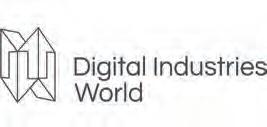
dell’industria nel nostro Paese e coinvolge numerosi rappresentanti di settore, tra cui anche le associazioni partner di Ucima (Acimac e Amaplast).
Pur partendo da ambiti di intervento diversi, DIW e Ucima condividono nella propria attività quotidiana alcuni obiettivi fondanti: promuovere la digitalizzazione e valorizzare le innovazioni che le aziende italiane sono in grado di esprimere, come ha peraltro sottolineato il Presidente di Ucima Riccardo Cavanna: «Abbiamo deciso subito di aderire a Digital Industries World perché i temi della digitalizzazione, della cybersecurity, della servitization e dell’intelligenza artificiale ci sono molto cari. Promuoviamo inoltre da sempre la collaborazione tra associazioni, proprio per favorire l’evoluzione delle nostre fabbriche, che consente di mantenere salda la leadership tecnologica della filiera manifatturiera made in Italy».
Quando i giovani guidano l’azienda di famiglia
n Dall’Università LIUC e Banca Sella uno studio sulla creazione di valore nelle imprese familiari e sul contributo delle nuove generazioni.
Le nuove generazioni in azienda possono essere l’elemento chiave per la creazione di valore, contribuendo al rinnovamento e al successo dell’impresa di famiglia grazie all’innovazione di processo e di prodotto, allo sviluppo di un nuovo piano strategico e alla trasformazione del modello di business. Restano altrettanto rilevanti anche altri aspetti come digitalizzazione, managerializzazione e internazionalizzazione, nonché l’adozione di strategie orientate alla sostenibilità e alla responsabilità sociale.
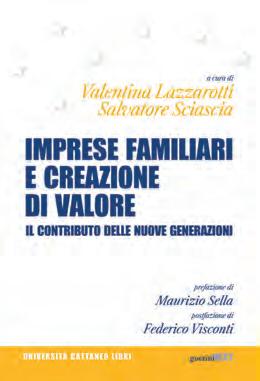
È quanto emerge dal volume “Imprese familiari e creazione di valore - Il contributo delle nuove generazioni”, curato da Valentina Lazzarotti e Salvatore Sciascia, co-direttori di FABULA (il Family Business Lab della LIUC - Università Cattaneo) e realizzato in collaborazione con Banca Sella per i tipi di Guerini Next.
Il libro, con prefazione di Maurizio Sella, Presidente del gruppo Sella, e postfazione di Federico Visconti, Rettore LIUC Università Cattaneo, analizza le dinamiche di 15 casi imprenditoriali nei quali le nuove generazioni hanno partecipato concretamente al cambiamento e all’affermazione dell’azienda di famiglia, oltre a riassumere la letteratura scientifica sul tema.
Per ogni azienda, vengono illustrati i driver che hanno contribuito a determinare l’imprenditorialità del giovane leader, distinguendoli in fattori individuali, familiari, aziendali e di contesto. Inoltre, si presentano le diverse forme di imprenditorialità sviluppate dalle nuove generazioni (innovazione, rinnovamento e venturing) e gli effetti virtuosi di tale processo.
Si tratta di un testo che riesce a coniugare il rigore della ricerca accademica con la pragmaticità dell’impostazione tramite i casi e offre spunti e consigli pratici per coloro che abbiano voglia di imprimere una trasformazione positiva alla realtà che sono chiamati a guidare.
Imprese familiari e creazione di valore - Il contributo delle nuove generazioni
2023, 334 pagine Collana Università Cattaneo Libri
Editore Guerini Next
Osservatorio quadrimestrale della filiera dell’imballaggio:
situazione aggiornata a dicembre 2023. Quadro economico generale e analisi dell’attività manifatturiera e conseguente evoluzione del settore imballaggi.
Barbara Iascone Istituto Italiano Imballaggio
In questa sede si sintetizza l’andamento dei comparti dell’industria manifatturiera dove più intenso è il consumo di imballaggi, suddivisi nelle macroaree food e non food. I quadri evolutivi dei settori manifatturieri sono tratti dalle analisi settoriali elaborate da associazioni di categoria, ISTAT, banca dati dell’Istituto Italiano Imballaggio, Prometeia.
I dati dell’industria manifatturiera
Come appurato da tempo il settore del packaging è strettamente legato all’andamento dell’attività manifatturiera, in particolare ai trend di quei settori dove maggiore è l’utilizzo di imballaggi: alimenti e bevande, largo consumo, farmaceutico, cosmetico, ecc.
Analizzando la segmentazione del manifatturiero, dunque, emerge quanto segue.
Il settore food & beverage registra nell’insieme un -1,1%, dove le bevande diminuiscono di un -3,5% circa e il food del -1%.
In crescita invece le aree “cosmetica” e “farmaceutica”, che chiudono il 2023 rispettivamente al +10% e +2,5%.
Il Largo Consumo dovrebbe invece chiudere con una crescita del 2,7%. Rientrano in questa ampia categoria tutti i prodotti di spesa domestica, suddivisi in quattro macro aree: 1) alimenti e bevande; 2) drogheria non alimentare (chimico casa, cura della persona, farmaci da banco); 3) abbigliamento, calzature e pelletteria; 4) beni semidurevoli (elettrodomestici, giocattoli, elettronica di consumo, mobili, ecc.).
L’area alimentare non è tuttavia l’unica a registrare cali nel 2023.
Bilancio del settore imballaggi vuoti in Italia. Balance of the empty packaging sector in Italy.
Tra i settori più legati all’industria dell’imballaggio si evidenziano i segni negativi dei prodotti e materiali da costruzione (-4,6%), e dei beni durevoli, dove gli elettrodomestici registrano -4,4%, i mobili il -2,4. In decremento anche gli intermedi chimici (-7,8%) e il Sistema Moda (-2,5%).
Il settore degli imballaggi: un consuntivo
Le elaborazioni riportate nell’ultima edizione di Imballaggio in Cifre si riferiscono ai dati consuntivi del 2022, dove emerge un leggero calo per la produzione di imballaggi espressa in tonnellate, -0,6%, a fronte di un sensibile incremento del fatturato, +15,4%.
L’andamento diversificato dei due trend è giustificato dall’esplosione dei costi di produzione collegata all’aumento dei costi energetici da una parte e dall’incremento dei prezzi delle materie prime dall’altra: tutto ciò ha portato a un inevitabile inasprimento dei costi dei singoli imballaggi.
Il dato a consuntivo per il 2022 circa la produzione di imballaggi si assesta sulle 18.089 t/000, il fatturato arriva a superare i 40,6 miliardi di euro.
Ipotesi evolutive. Per quanto riguarda il 2023, sono state elaborate le prime ipotesi evolutive, considerando però che, riferendosi a dati ancora in fase di rilevazione e definizione, non possono essere considerati definitivi, ma solo utili indicatori di tendenza. La produzione di imballaggi espressa in tonnellate potrebbe assestarsi al -0,9% rispetto al 2022, in piena correlazione, quindi, con l’andamento del mani-
In base alle prime analisi, l’anno 2023 registra l’andamento negativo di quasi tutti gli indicatori economici. Il PIL dovrebbe chiudere con una flessione dello 0,7% rispetto al 2022, e la produzione industriale relativa al 1° semestre mostra un calo pari al -2,8%. Secondo l’analisi elaborato dal Centro Studi di Confindustria, l’industria italiana resta debole nel 2023, nonostante si registrino andamenti in ripresa per i settori “servizi” e “costruzioni”; l’inflazione dovrebbe assestarsi ai minimi solo in Italia: a +0,6% su base annua. Diversa è la situazione per il resto d’Europa: un +3,8% per la Germania e un +4,1% per la Francia.
I consumi interni risultano incerti, cala la spesa per i beni alimentari.
In calo l’export di prodotti italiani (-1,4%) riferito ai primi 11 mesi dell’anno, calo che va contestualizzato nell’ambito di un quadro debole della domanda mondiale di beni, in flessione del -2,2%. Sembra comunque possibile una ripresa dell’export nel 4° trimestre.
In base alle elaborazioni di Prometeia, il manifatturiero in Italia chiude il 2023 in lieve calo (-0,6%), influenzato dal calo degli ordini sia interni che esteri, che determina un relativo ribasso della produzione.
Altro elemento che influisce sull’andamento negativo del manifatturiero è la difficoltà rilevata in ambito consumi, che calano per via del deterioramento del potere di acquisto delle famiglie.
fatturiero; il fatturato dovrebbe invece rimanere praticamente stabile (+0,1%).
Il commercio estero confermerebbe le tendenze già registrate negli anni passati. Le esportazioni sembrano mostrare un trend negativo con un -2,2% per il 2022 e un ulteriore -6,5% per il 2023. Le importazioni avanzerebbero anche per gli anni 2022 e 2023, rispettivamente del +11,4% e +2%.
Analizzando le diverse tipologie di imballaggi emerge quanto segue.
• Nel 2022 il settore degli imballaggi in acciaio registra un calo pari al -6,2%, dovuto sia a un rimbalzo fisiologico rispetto al +5% dell’anno precedente, sia a un calo produttivo che ha riguardato i maggiori settori utilizzatori.
Gli imballaggi in acciaio prodotti scendono al di sotto delle 700.000 tonnellate. In base alle tendenze elaborate dall’ISTAT e alle elaborazioni relative al commercio estero il 2023 dovrebbe continuare con l’andamento negativo già visto nel 2022, registrando un ulteriore calo produttivo intorno al 3%.
The quarterly monitoring report on the packaging supply chain: the updated situation at December 2023. General economic scenario and analysis of the manufacturing sector and consequent evolution of the packaging sector.
Barbara Iascone Istituto Italiano ImballaggioThe performance of the manufacturing industry sectors in which the consumption of packaging is highest is summarized here, subdivided into macro food and
non-food areas. The evolutionary outlooks of the manufacturing sectors are drawn from sectoral analyses carried out by category associations, ISTAT (Italian National
• La produzione dei soli imballaggi in alluminio, escludendo quindi il foglio utilizzato per converting, nel 2022 risulta pari a 154.000 tonnellate, in crescita dell’1,3%. Nel 2023 è attesa un’inversione di tendenza, dove la produzione dovrebbe registrare un calo intorno al 2%.
• Andamenti positivi per gli imballaggi in plastica sia per il 2022 (+2,6%) che per il 2023 (+1%). Il dato consuntivo per la produzione nel 2022 è di 3.043 t/000. Negli ultimi anni, il mercato degli imballaggi in plastica è caratterizzato da un costante incremento delle importazioni, cresciute tra il 2021 e il 2023 rispettivamente del 21,6%, 12% e 9,5%.
• Continua l’andamento positivo registrato negli ultimi 10 anni per gli imballaggi flessibili da converter, interrotto solo nel 2020: nel 2022 le tonnellate prodotte sono state 421.000 (+1,5%) e anche nel 2023 si registra una tendenza positiva, +1%.
• Da evidenziare il calo relativo alla produzione di imballaggi cellulosici, che caratterizza sia il 2022 che il 2023. Il dato consuntivo per il 2022 si traduce in 5.779 t/000 di imballaggi in carta e cartone prodotti in Italia (-3,4%) e nel 2023 si conferma il trend negativo, con un ulteriore calo del -1,5%.
• Nell’area imballaggi accoppiati rigidi a prevalenza carta, si registra l’ormai consueta stabilità: produzione di 147.000 tonnellate e un fatturato che si aggira intorno ai 482 milioni di euro, sia per il 2022 che per il 2023.
• Gli imballaggi in vetro continuano il loro percorso positivo: dopo un 2022 in crescita dell’1,7%, il 2023 conferma il trend con un ulteriore +1,5%, portando gli imballaggi in vetro a superare le 4.700 t/000.
• Dopo un 2022 sostanzialmente stabile, -0,4%, la produzione degli imballaggi in legno nel 2023, in base alle prime rilevazioni, risulterebbe in calo del 5%.
Per quanto riguarda infine le quotazioni delle materie prime utilizzate per produrre imballaggi, esse sono state caratterizzate da cali generalizzati senza distinzione di materiali, ad eccezione del vetro che invece registra aumenti di prezzo.
Statistical Institute) and the Italian Institute of Packaging’s data bank, Prometeia.
Manufacturing industry data
As has been established for some time, the packaging sector is closely linked to manufacturing industry trends, particularly those in which packaging is more used: foods and beverages, consumer goods, pharmaceutical, cosmetics, etc. Analysing the segmentation of the manufacturing sector, therefore, the following picture emerges: The food & beverage sector registers overall a fall of -1.1%, in which
beverages fall by around -3.5% and food -1%.
The “cosmetics” and “pharmaceutical” areas are, instead, growing, closing 2023 respectively at +10% and +2.5%. Consumer Goods should, moreover, close with a growth of 2.7%. This category includes all household shopping products, subdivided into four macro areas: 1) food and drinks; 2) non-food groceries (household chemicals, personal care, over-thecounter medicines); 3) clothing, footwear and leather goods; 4) semi durable consumer goods (household appliances, toys, consumer electronics, furniture, etc.).
The food area is not, however, the only one to register falls in 2023.
Among the sectors most linked to the packaging industry, reference is made to the negative growth of construction products and materials (-4.6%), and of durable goods, in which electrical appliances register -4,4%, and furniture -2,4.
There has also been a fall in chemical intermediates (-7.8%) and Fashion (-2.5%).
The packaging sector: a summary
The analyses reported in the latest edition of Imballaggio in Cifre (Packaging in Figures) refer to the final data for 2022, in which there emerges a slight fall for the production of packaging expressed in tonnes, -0.6%, against a significant increase in turnover, +15.4%.
The difference between the two trends is explained by the explosion of the cost of production linked to the increase in energy costs on the one hand, and the increase in the prices of raw materials on the other hand: all this has led to an inevitable increase in the costs of individual packaging.
The final data for 2022 regarding the production of packaging stands at 18,089 t/000, with turnover arriving at exceeding 40.6 billion euros.
Projections. The first projections have been made with regards to 2023, considering, however, that, since the data is still being registered and defined, they cannot be considered as final, but only useful trend indicators. Packaging production expressed in
tonnes could record a -0.9% compared to 2022, fully in line, therefore, with the manufacturing trend; turnover should, instead, remain practically stable (+0.1%).
Foreign trade would confirm the trends already recorded in past years. Exports appear to show a negative trend with a -2.2% for 2022 and a further -6.5% for 2023. Imports should grow in 2022 and 2023, respectively by +11.4% and +2%.
Analysing the different types of packaging, the following emerges:
• In 2022 the steel packaging sector records a fall of -6.2%, due both to a physiological rebound compared to the +5% of the previous year, and to a fall in production affecting the major user sectors.
Steel packaging produced fell under 700,000 tonnes. On the basis of trends analysed by ISTAT and analyses regarding foreign trade, 2023 should continue with the negative trend already seen in 2022, recording a further production fall of around 3%.
• The production of aluminium packaging only, therefore excluding foil used for converting, stood in 2022 at 154,000 tonnes, up by 1.3%. A reversal in the trend is expected in 2023, for which production should record a fall of around 2%.
• There are positive trends for plastic packaging both for 2022 (+2.6%) and 2023 (+1%). The final figure for production in 2022 is 3,043 t/000. In recent years, the plastic packaging

Il
PARC
01120
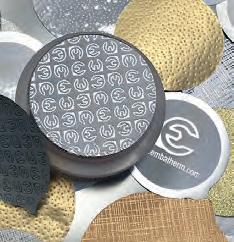
On the basis of first analyses, 2023 registers a negative trend for almost all economic indicators. GDP should close with a fall of 0.7% compared to 2022, and industrial production in the 1st half-year shows a drop of -2.8%.
According to the analysis drawn up by Confindustria’s Research Centre, Italian industry remains weak in 2023, despite recovering trends for the “services” and “construction” sectors; inflation is expected to settle at minimum levels only in Itay: at +0.6% on an annual basis. The situation is different for the rest of Europe: +3.8% for Germany and +4.1% for France.
Domestic consumption is uncertain; expenditure on food is falling.
Exports of Italian products relating to the first 11 months of the year are down (-1.4%), a drop that needs to be contextualized within a weak picture of global demand for goods, down -2.2%. A recovery of exports seems possible, however in the 4th quarter.
Based on Prometeia’s analysis, Italian manufacturing closed slightly down (-0.6%) in 2023, affected by the fall in both domestic and foreign orders, leading to a relative drop in production. Another factor influencing the negative manufacturing trend is the difficulty relating to consumption, which is falling as a result of the deterioration of families’ purchasing power.
market has been characterised by a constant growth in imports, up between 2021 and 2023 by respectively 21.6%, 12% and 9.5%.
• The positive trend registered in the last 10 years for flexible packaging for converting, interrupted only in 2020, continues: in 2022 421,000 tonnes were produced (+1.5%) and a positive trend, +1%, is registered again for 2023.
• Worth noting is the fall with reference to cellulose packaging, registered in both 2022 and 2023. The final figure for 2022 is 5.779 t/000 of packaging in paper and cardboard produced in Italy (-3.4%) and the negative trend is confirmed for 2023, with a fall of -1.5%.
• In the area of rigid laminated packaging with a prevalence of paper,
the now usual stability is recorded: production of 147,000 tonnes and a turnover of around 482 million euros, both for 2022 and 2023.
• Glass packaging continues its positive path: after a 2022 growing by 1.7%, 2023 confirms the trend with a further +1.5%, taking glass packaging to over 4,700 t/000.
• After a substantially stable 2022, -0.4%, on the basis of the first figures, the production of wooden packaging is likely to show a fall of 5%.
With regards, finally, to the prices of raw materials used to produce packaging, these have been characterised by generalised falls with no distinctions between materials, with the exception of glass, which, instead, has been subject to price increases.
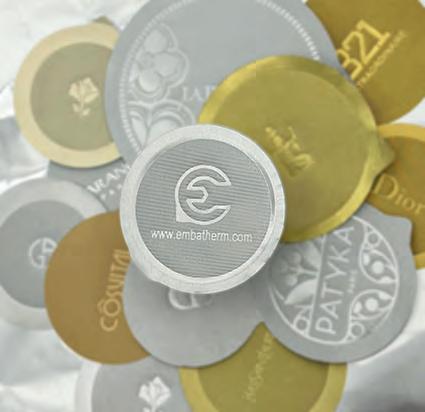


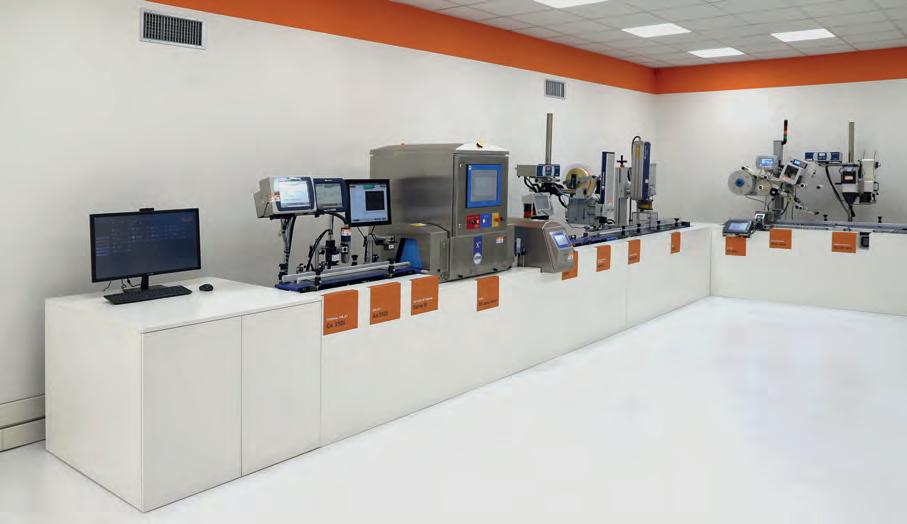

«…fare bene quello che in precedenza era stato fatto meno bene e fare per la prima volta quello che prima era stato ignorato»*.
Sembrerebbe essere questa, in estrema sintesi, l’attuale strategia di fondo di Nimax. Ma nell’intervista al Ceo Nicola Montanari (nella foto) troviamo molto di più, in particolare valori e uomini.
Stefano LavoriniSi può parlare di miglioramento continuo in tanti modi, ma in ogni caso il senso ultimo è, forse, quello di operare senza riserve in direzione della perfezione.
Ne troviamo conferma nelle parole di Nicola Montanari, Ceo di nimax, quando ci spiega come sta cambiando nel profondo questa realtà industriale bolognese, tra i protagonisti italiani nel campo delle soluzioni per la codifica e la marcatura, dei sistemi di ispezione e controllo, tracciabilità e labelling. Un’azienda, la Nimax, in cui tutti lavorano per mettere insieme, in un gioco di rimandi coerenti, l’efficace visione etica dell’impresa con i valori della sostenibilità sociale e ambientale.
Nata 54 anni fa a Bologna, è formata da un team di professionisti e opera in Italia, con 3 sedi e con partner internazionali di valore come Domino Printing, Loma Systems, nonché con Nemesis, di recente entrata a far parte del gruppo.
* Roberto Calasso, L’impronta dell’editore, Adelphi 2013«Negli anni la natura di Nimax è cambiata grazie al contributo delle persone che sono cresciute all’interno dell’azienda, al loro impegno, al loro spirito di iniziativa e alla loro capacità di fare squadra. Ma anche di quei collaboratori “più bravi di noi”, con esperienze in realtà più strutturate, che hanno apportato nuove competenze e mentalità: talenti, magari con caratteri forti, che possono e vogliono dire la loro.
Line Strategy by nimax
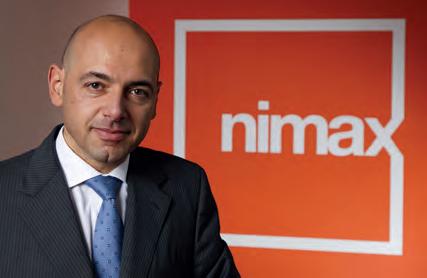
Siamo, peraltro, grati anche alle persone che non lavorano più con noi, perché si costruisce sempre sulle fondamenta, ovvero sull’opera di chi ci ha preceduto. Il benessere dei nostri collaboratori è una priorità che ci ha portato a sviluppare insieme attività di welfare, eventi e progetti molto interessanti, fra i quali, ad esempio, l’apiario aziendale sul tetto con webcam live, la palestra, una giornata con le biciclette del bike-sharing di Bologna…
La voglia di fare bene il nostro lavoro è fondamentale; siamo infatti convinti che tutto il resto venga in qualche modo da sé, compreso il fatturato; perché crediamo fortemente in un approccio etico tanto che, piuttosto di fare una vendita “mordi e fuggi”, preferiamo rinunciare a un ordine.
Fare la cosa giusta, insomma, anziché quella conveniente e pensiamo, con piacere, che il mercato ce lo riconosca».
In particolare, Nimax è conosciuta per l’offerta dei sistemi di codifica e marcatura a getto di inchiostro e laser di Domino Printing: una collaborazione che si rinnova da molti anni, a dispetto del fatto che il mondo cambi sempre più velocemente.
«Questa partnership, in realtà, si fonda su reciproche ragioni di convenienza. Domino commercializza i propri prodotti in oltre 120 paesi grazie a un’organiz-

zazione composta da filiali, nei paesi più grandi come USA, Cina, India, e da distributori, tra i quali Nimax è il più importante. Per Domino, siamo inoltre il 40esimo cliente a livello mondiale, e questo fa di noi un partner autorevole.
Ma Nimax, più in generale è un riferimento per i costruttori di linee industriali e per le aziende che debbano installare non solo sistemi di codifica e marcatura, ma anche dispositivi di ispezione, controllo ed etichettatura nei propri processi produttivi.
Prova ne è che, a fine 2023, abbiamo acquisito la maggioranza qualificata della modenese Nemesis srl, player chiave nella progettazione e produzione di pesatrici industriali in linea, con un fatturato generato per il 75% sui mercati internazionali».
Questa acquisizione rappresenta evidentemente un passo fondamentale nel percorso di sviluppo e consolidamento sui mercati esteri di Nimax, dato che le permette di diversificare ulteriormente la propria attività e di accrescere la propria presenza nel settore, portando a bordo competenze di alto livello.
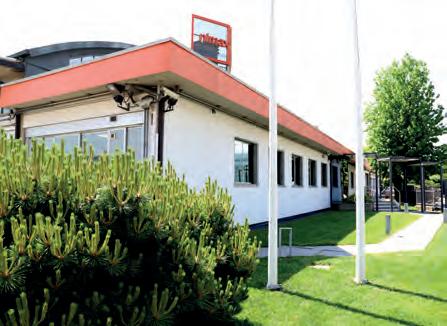

Al riguardo, Montanari sottolinea che «si è trattato di un’operazione strategica, che rafforza il ruolo di entrambe le aziende grazie alla condivisione del know-how, delle reti commerciali e all’ottimizzazione di servizi e centri di costo con relativi vantaggi economici. Crediamo che questa collaborazione sinergica apra significative opportunità di crescita e innovazione per entrambi, consentendoci di fornire ai clienti, ovvero agli end user e agli OEM, servizi ancora più competitivi e all’avanguardia».
Come e perché
La scelta fatta da Nimax è chiaramente quella di “non inventare l’acqua calda”, alla luce dei rapporti
di collaborazione consolidati con brand di primo piano come Domino e Loma, bensì di puntare all’eccellenza con Nemesis in una nicchia di mercato come quella delle selezionatrici, per arrivare a proporre soluzioni integrate.
Per questa ragione, all’ultimo Cibus Tec, Nimax e Nemesis si sono presentate insieme a PRL Tecnosoft con l’obiettivo di dare risposta all’esigenza, sempre più diffusa nel mondo industriale, di ridurre il numero di fornitori, affidando le proprie linee di produzione a network integrati in grado di offrire più soluzioni complete. «Col tempo - precisa Montanari - ci siamo resi conto che non era più sufficiente continuare a vendere sistemi di marcatura, peraltro in un mercato sempre più affollato e competitivo, ma che potevamo puntare a diventare aggregatori di tecnologia. Cosa che è stata notata durante la recente edizione della fiera di Parma, in occasione della quale abbiamo creato una fiera virtuale grazie al collegamento con il nostro show room permanente di Bologna, dotato di sala attrezzata con una regia professionale». Una soluzione che già oggi permette di andare incontro alle esigenze dei clienti che, in qualsiasi momento e senza spostarsi, possono vedere in funzione la macchina o la linea di loro interesse. Ma non solo, come specifica ancora il manager.
«Per migliorare l’assistenza tecnica, abbiamo sviluppato la App MyNimax, che fa uso di tecnologie di realtà aumentata, attraverso la quale siamo in grado, tramite il cellulare del cliente, di osservare la linea e di mostrargli, e quindi non suggerirgli, come intervenire in tempo reale. Con la stessa app è possibile acquistare ricambi e consumabili, o consultare manuali e tutorial.
Abbiamo ben presente che un’ora di fermo macchina significa soldi persi e siamo consapevoli che le nostre macchine non aggiungono, di per sé, valore al prodotto del cliente: nessuno comprerebbe mai una marca diversa di acqua minerale solo perché marcata da un laser Domino. Quindi il vero valore aggiunto è dato da un servizio che assicuri l’operatività della linea al massimo delle sue possibilità. Vogliamo essere utili e non indispensabili; non siamo noi che teniamo il cliente, vogliamo che sia il cliente a non volerci lasciare».
In medio stat virtus
È nella storia di Nimax fare dell’aggiornamento dei prodotti e dei servizi il proprio fattore competitivo. E questo oggi significa sempre più sviluppare solu-
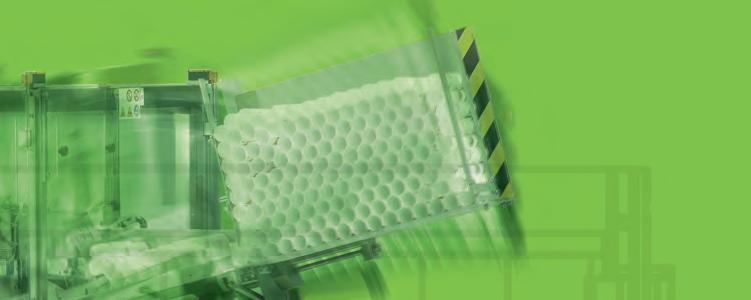

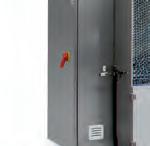
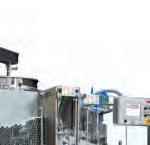
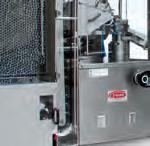



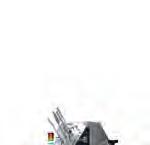
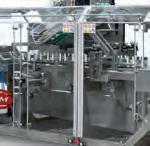

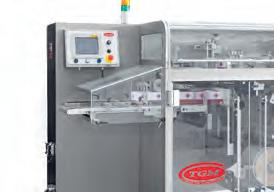



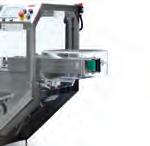

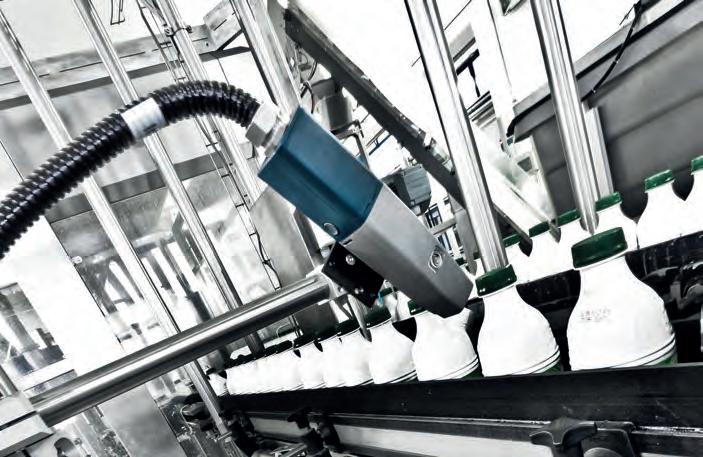
zioni targate 4.0, in quanto tempestività e informazione sono le due parole chiave per il buon governo di una linea.
Montanari al riguardo non ha dubbi: «Oggi, raccogliere dati e trasferirli alla linea di produzione è sempre più facile, ma in generale MES e ERP evoluti non sono in grado di raggiungere le macchine se non con semplici istruzioni (ad esempio, “stampa questo dato variabile”).
Poi ci sono software verticali che pilotano la singola macchina, ma non sono in grado di gestire il dato e sono totalmente ignare di tutte le altre unità della linea. In altri termini, manca qualcosa che permetta di interconnettere i sistemi gestionali e MES al sistema di controllo della singola macchina ed è lì che interveniamo noi, con la soluzione Line Strategy (oggetto di approfondimenti nel corso di prossimi eventi dedicati, organizzati da Nimax, Ndr.)

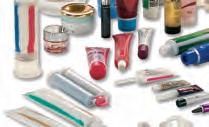

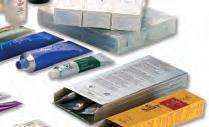

Si tratta di un sistema software che permette, con un unico strumento anche quando siano presenti macchine e tecnologie di costruttori diversi, il pieno controllo della linea di produzione o dell’intero stabilimento. È una soluzione semplice e modulare, che può essere implementata nel tempo in base alle diverse esigenze, per comandare e ricevere feedback praticamente in tempo reale da tutti i device della linea. Il sistema attiva e predispone logiche di controllo sulle linee, ne monitora l’efficienza e segnala anomalie per permettere di rimuovere i lotti difettosi e ridurre gli scarti. Il software acquisisce dunque i dati di produzione, che vengono poi esportati e organizzati tramite software di Business Intelligence in report funzionali alle specifiche esigenze di analisi dei diversi reparti (controllo qualità, logistica, marketing, produzione)».
Con i piedi per terra, oggi e domani
Nimax è un’impresa, di proprietà di un gruppo familiare, con una cultura industriale maturata grazie al passato coinvolgimento nell’attività di aziende di grandi dimensioni, cosa che ha sempre favorito l’innovazione di processo e di prodotto, lo sviluppo del piano strategico e la trasformazione del modello di business. «Oggi le tecnologie cambiano così in fretta - chiosa Montanari - che ci sembra poco lungimirante fare progetti a lungo termine anche se siamo sempre alla ricerca di soluzioni innovative che possano rappresentare dei breacktrough . Preferiamo lavorare per diventare un gruppo in grado di soddisfare esigenze strategiche che abbia senso dal punto di vista industriale. Per questa ragione abbiamo in animo altre acquisizioni. La nostra logica - che non è quella finanziaria - è di crescere portando a bordo realtà che possano essere integrate per arricchire la nostra offerta».
«…do well what had previously been done less well, and do for the first time what had previously been disregarded»*. This seems to be, in a nutshell, Nimax’s current underlying strategy. There’s much more to discover, however, in our interview with Nicola Montanari, in particular, regarding values and people.
Stefano LavoriniIt’s possible to talk about continuous improvement in many ways but, in the end, the ultimate meaning is, perhaps, that of working without reservations towards perfection. We have confirmation of this in the words of Nicola Montanari, CEO of Nimax, when he explains to us how this Bologna-based industrial enterprise, one of the Italian protagonists in the field of solutions for coding and marking, inspection and control systems, traceability and labelling, is changing profoundly. Nimax is a company in which everyone works, each with their appropriate contribution, to implement an effective ethical vision of the company with the values of social and environmental sustainability.
Founded 54 years ago in Bologna, it’s composed of a team of professionals and operates in Italy with 3 sites and with valid international partners such as Domino Printing and Loma Systems, as well as with Nemesis, a recent new member of the group.
«Nimax has changed over the years thanks to the contribution of the people that have grown inside the company, to their commitment, their spirit of initiative and their ability to work as a team. It is also, however, thanks to our “more expert than us” associates, with experience in larger organisations, who have contributed new skills and mentalities: talented people, perhaps with strong characters, who can and want to have their say.
We are, moreover, grateful also to the people that no longer work with us, because we always build on the foundations, that is, on the work of those who have preceded us. The wellbeing of our workers is a priority which has led us to develop together welfare activities, very interesting events and projects, including, for example, the company apiary on the roof with a live webcam, the gym, the day out with Bologna bike-sharing bicycles…
The desire to do our work well is fundamental; we’re convinced, in fact, that everything else comes somehow by itself, including the turnover; because we believe so strongly in an ethical approach that we would prefer to do without an order rather than make a “hit and run” sale.
We aim to do the right thing, in short, rather than what’s convenient, and we believe, with some satisfaction, that the market recognizes this».
Be who you are
In particular, Nimax is known for its offer of Domino Printing inkjet and laser coding and marking systems: a collaboration that has been renewed over many years, despite the fact that the world is changing increasingly quickly. «This partnership, in fact, is based on mutual benefits. Domino markets its products in over 120 countries thanks to a series of subsidiaries in major countries such as the USA, China and India, and through distributors, among which Nimax is the most important. For Domino, we are, moreover, the 40th customer at world level, making us a prestigious partner.
Nimax, however, is more generally a point of reference for industrial line manufacturers and for companies that need to install not only coding and marking systems, but also inspection, control and labelling devices in their production processes.
Proof of this is that, at the end of 2023, we acquired a qualified majority shareholding in the Modena company, Nemesis srl, a key operator in the design and manufacture of in-line industrial weighers, with 75% of its turnover generated in international markets».
This acquisition obviously represents a fundamental step in Nimax’s foreign market development path, given that it allows it to further diversify its activities and increase its presence in the sector, taking on board high-level expertise.
In this regard, Montanari underlines that «it’s a strategic operation, strengthening the role of both companies thanks to the sharing of know-how, sales networks and the optimization of services and cost centres with relative economic benefits. We believe that this synergic collaboration opens up significant growth and innovation opportunities for both companies, allowing us to offer customers, that is, end users and OEMs, even more competitive and cutting-edge services».
* Roberto Calasso, L’impronta dell’editore, Adelphi 2013This move by Nimax is certainly “not to reinvent the wheel”, in the light of the consolidated collaborations with top brands such as Domino and Loma, but is rather is a push for excellence with Nemesis in a market niche like that of sorting machines, aiming at proposing integrated solutions.
For this reason, at the latest Cibus Tec, Nimax and Nemesis presented themselves together with PRL Tecnosoft with the objective of offering a response to the industrial world’s ever growing need to reduce the number of suppliers, assigning their lines to integrated networks able to offer more complete solutions.
«Over time - Montanari points outwe have realised that it isn’t enough to continue to sell marking systems in what is, moreover, an increasingly crowded and competitive market, but that we could aim at becoming technology aggregators. This was noticed during the recent edition of the trade fair in Parma, where we created a virtual exhibition thanks to the connection with our permanent professionally managed showroom in Bologna».
It’s a solution that already today allows us to meet the needs of customers who, at any time and without moving, can see in operation the machine or line they are interested in. But that’s not all, as the manager once more points out.
«To improve technical assistance, we have developed the MyNimax APP, which makes use of augmented reality technologies, through which we are able, via the customer’s mobile phone, to observe the line and show the customer, therefore not only suggest to them, how to intervene in real time. It’s possible with the same app to acquire spare parts and consumables, or to consult manuals and tutorials.
We are well aware that an hour of machine stoppage means money lost and we are also aware that our machines do not in themselves add value to the customer’s product: no one would ever buy a different brand of mineral water only because it has been marked by a Domino laser. The real added value, therefore, comes from a service that ensures the operativity of the line at the maximum of its possibilities. We want to be useful and not indispensable. We are not the ones who keep the customer; we want the customer to not want to leave us».
Over the years Nimax has made the updating of products and services a competitive factor. This today increasingly means developing 4.0 solutions, since timeliness and information are the two key words for
the successful management of a line. Montanari has no doubts about this:
«Today, collecting data and transferring them to the production line is easier, but in general, evolved MES and ERP are unable to reach the machines unless with simple instructions (for example, “print this variable data”).
There is also vertical software that drives a single machine, but it’s not able to manage the data and ignores all the other units in the line.
What is missing, in other words, is something which makes it possible to interconnect management systems and MES to the control system of the single machine and it is here that we come in, with the Line Strategy solution (subject of in-depth analysis during upcoming dedicated events, organized by Nimax, Ed.).
It’s a software system that makes it possible, with a single tool also when there are a number of machines and technologies made by different manufacturers, to have full control of the production line or of the entire factory. The solution is simple and modular, and can be implemented in a time period according to different needs, for controlling and receiving feedback in practically real time from all the devices in the line.
The system activates and sets up control logics on the lines, monitors efficiency and signals anomalies in order to allow for the withdrawal of defective lots and reduce waste. The software, therefore, acquires production data which are then exported and organised via Business Intelligence software into functional reports on the basis of the specific analysis needs of the different departments (quality control, logistics, marketing and production)».
With our feet on the ground, today and tomorrow
Nimax is an enterprise, a familyowned group, with an industrial culture developed thanks to involvement over the years in the activities of large companies, something that has always favoured process and product innovation, development of the strategic plan and the transformation of the business model.
«Today technologies change so quickly - Montanari comments - that it seems to us short-sighted to embark on long-term projects, even though we are always on the search for innovative solutions that can prove to be a breakthrough. We prefer to work to become a strategic group able to meet strategic needs that make sense from an industrial point of view. That is why we have other acquisitions in mind. Our logic - which is not financial - is to grow by taking on board businesses that can be integrated to enrich our offer».

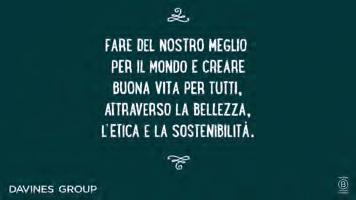
CNOTA
Per gentile concessione della laureanda Martina D’amico: spunti dalla sua tesi in Organizzazione e sviluppo delle risorse umane presso Universitas Mercatorum.
La visione di “sostenibilità rigenerativa” di Davines Group, leader nel campo della cosmetica professionale, perseguita con un approccio integrato che coniuga benessere individuale e collettivo ai temi ambientali e della solidarietà.
A cura di Milena Bernardi
ome sostiene Alexander Kjerulf (massimo esperto a livello mondiale sul tema): “La maggior parte delle persone insegue il successo sul lavoro pensando che li renderà felici. La verità è che la felicità sul lavoro ti farà avere sucesso”. Secondo Davines Group, sostenere la felicità e il benessere individuale e collettivo è un’azione direttamente correlata col tema ambientale e contribuisce alla costruzione di un futuro rigenerativo. Nel 2005 l’azienda ha fondato la sua prima Carta Etica, un documento che ha dato il via a una serie di iniziative, tra cui la nascita di communities di collaboratori che su base volontaria creano e seguono progetti di benessere quali il maggiordomo (iniziative di work-life integration), di solidarietà e volontariato aziendale, ludico sportivi ecc al fine di offrire cura vera in un’azienda che si pone come obiettivo quello di creare buona vita per tutti.
A quarant’anni dalla nascita, ciò che caratterizza il Gruppo Davines, leader nel campo della cosmetica professionale, è la sua visione di “sostenibilità rigenerativa”, adottata con un approccio integrato e collaborativo. Un progetto olistico basato su tre pilastri fondamentali - Planet, People e Community – che insieme formano il Davines Group Regenerative
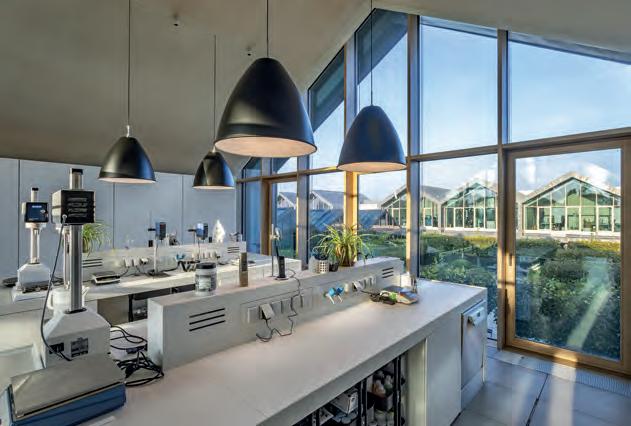
Evolution. Le attività sono guidate dai concetti di bellezza e sostenibilità, dalla produzione al packaging, fino all’etica nei rapporti interni all’azienda e con la clientela e con tutti gli stakeholder essendo Davines una azienda stakeholder driven. B Corp dal 2016 e Società Benefit dal 2019, nella sede di Parma conta 517 collaboratori di cui il 60% è rappresentato da donne. Ciò che contraddistingue

il welfare aziendale, o well-fair, è un evoluto piano di work life integration che implica la convivenza armoniosa tra lavoro e vita privata. Partendo dall’assunto che un lavoratore felice è anche più produttivo, Davines si è posto l’obiettivo di agevolare il dipendente nella gestione degli impegni quotidiani, coerentemente con la sua mission:” Facciamo del nostro meglio per il mondo creando buona vita per tutti attraverso bellezza, etica e sostenibilità. Stefania Bollati, board member e head of wellbeing di Davines Group, ci racconta perché è così importante potenziare il clima positivo nell’ambiente di lavoro.
Perché negli ultimi anni l’attenzione verso il dipendente è aumentata così tanto?
Per una B Corp, e per di più per un’azienda familiare, la costruzione di un senso proprio scaturisce dalle persone che ne fanno parte, rendendola un “organismo vivente”. Persone soddisfatte, riconosciute, in equilibrio, felici, sono persone in grado di portare energia positiva creatrice all’interno di un’azienda, arrivando fino ai clienti che, oltre ad essere uno stakeholder chiave, sono la linfa da cui attingere risorse per continuare a creare buona vita per tutti. È in atto oggi una grande denuncia nei confronti del modello di business tradizionale, denuncia che si esprime attraverso la Great Resignation, il Quiet Quitting e la Yolo Economy. Le aziende devono raccogliere questo messaggio forte e restituire ai giovani un significato “altro” rispetto all’avere un mero ritorno economico dal proprio lavoro.
Quando avete iniziato a gettare le basi della vostra piattaforma welfare?
Il benessere delle persone ci sta a cuore da sempre. Possiamo considerare come inizio il lavoro fatto
sulla nostra Carta Etica nel 2005; questo ha dato il via a buona parte delle iniziative per favorire il benessere dei nostri collaboratori. La Carta Etica è il meraviglioso libro che racchiude quei valori del Gruppo Davines che i colleghi presenti a quella data hanno inteso voler vivere all’interno dell’azienda. È stato un esercizio di maieutica in cui le persone hanno potuto esprimere la loro vicinanza ai principi cardine della nostra realtà. A questa prima Carta ne è seguita una seconda, nel 2018, realizzata con l’aiuto di un filosofo di stampo Olivettiano che ci ha ispirato durante i workshop.
Per un’azienda manifatturiera come la vostra esistono dei limiti all’applicazione del modello work life integration?
In quanto azienda manifatturiera avremo sempre un limite funzionale,che riguarda l’esistenza di linee di produzione; tuttavia la realizzazione di un’ambiente di lavoro rispettoso della work-life integration rimane per noi prioritario. Uno dei nostri obiettivi è far diventare il Gruppo Davines un’azienda “educativa”, nel senso di “educere”, ovvero di riuscire a creare le condizioni per cui il sé delle nostre persone possa esprimersi. Uno dei nostri desideri sarebbe la creazione di un’accademia di formazione e crescita personale aperta anche agli esterni.
Quali attività avete previsto per garantire una buona sinergia tra casa e lavoro?
Alcuni esempi possono essere: eliminazione delle timbrature e flessibilità oraria in ingresso; remote working fino al 50%; integrazione della maternità facoltativa; cessione ferie; 20 ore annue di malattia autocertificata; 32 ore di permesso per incentivare il volontariato; 12 ore annue di permessi per visite mediche; iniziative di supporto quotidiano gestite dalle nostre community interne (manutenzione auto, lavaggio auto, lavanderia, consegna farmaci, consegna posta personale); convenzioni; giornate dedicate alle famiglie; piattaforma welfare Davines Care, sportello psicologico ecc..
Come hanno reagito i collaboratori a questa vostra apertura?
È stato un percorso al quale hanno partecipato gli stessi collaboratori, alcuni in modo volontario operando attivamente alla nascita delle nostre community interne. I feedback positivi si possono trovare nei risultati di survey importanti come quella di Great Place to Work, in cui i valori più alti sono: l’orgoglio, lo spirito di squadra e la credibilità.
Un modello di questo genere presuppone anche una grande fiducia da parte dell’organizzazione verso il dipendente. Siete mai stati delusi? Siamo realistici! L’essere umano quando vede soddisfatte tutte le sue istanze (valoriali, di bisogni di varia natura ecc) difficilmente deluderà le aspettative, vero è che inevitabilmente l’uomo spesso ritiene di “valere” di più di quel che riceve. È un percorso di consapevolezza che riguarda il senso del lavoro, che deve andare al di là del valore prestazionale, ma deve rappresentare il modo in cui l’uomo può raggiungere una propria completezza e soddisfazione.

Fin tanto che il lavoro verrà visto come strumento per soddisfare bisogni economici, la delusione sarà inevitabile da ambe le parti.
Con la work life integration potrebbe aumentare la percezione di non riuscire mai davvero a staccare dal lavoro. Vi siete dati delle regole di comportamento?
Più che regole abbiamo indicato alcune raccomandazioni e suggerimenti. Ad esempio, evitare di organizzare riunioni durante la pausa pranzo oppure prima o dopo il normale orario di lavoro, prendersi regolari pause dallo schermo, assicurarci un piccolo spazio libero tra una call e l’altra… E ancora, sconsigliamo di inviare mail durante i fine settimana o fuori dall’orario di lavoro; tuttavia, nel caso in cui accada, chi la riceve non è obbligato a rispondere.
Le politiche di smart working falliscono quando mal si interpreta il concetto di vita e lavoro che non devono essere separate, in quanto durante il lavoro si vive; non tutta la vita è lavoro, ma certamente il lavoro gioca un ruolo importante nella vita di ognuno di noi. Occorre trasmettere in modo attivo vita nel lavoro; il fallimento delle policy arriva quando è il lavoro a prevalere sulla vita.
Il modello presuppone un profondo cambio culturale. Rileva differenze sostanziali tra le diverse generazioni?
Si certo. Culturalmente molte aziende e le persone stesse, sono programmate secondo vecchi canoni: prima il dovere e poi il piacere, niente arriva senza sacrificio, primeggiare invece che cooperare ecc.
Serve un grande coraggio per rompere questi schemi mentali e riconoscere che il sacrificio, per esempio, altro non è che tornare al sacro. Ovvero dare sacralità a quello che si fa. Per fortuna il vero significato lo si trova all’interno delle parole. Ci sono manager che ancora prediligono il controllo alla fiducia ma i dati ormai dimostrano che il flow si raggiunge quando si svolge un lavoro sfidante in condizioni di autonomia e il flow è l’energia positiva che muove tutte le cose (per il flow si veda Mihàly Csìkszentmihàlyi).
Nelle generazioni precedenti queste programmazioni culturali sono più radicate, ma le differenze ancora una volta le fa la persona attraverso la learning agility, ovvero la capacità di adattarsi ai cambiamenti.
Cos’altro di nuovo avete in programma?
A seguito di un bisogno manifestato dai nostri collaboratori e confermato da svariate survey internazionali, nel medio termine implementeremo nuove azioni e piani di formazione sul tema della salute, fisica e mentale.
Ci occuperemo di prevenzione primaria (sane abitudini), secondaria (esami medici), benessere psicologico (sportelli psicologici), e della famiglia (figli, caregiver). In particolare, per i figli dei nostri collaboratori in Italia, abbiamo la volontà di introdurre una piattaforma di orientamento scolastico.
The Davines Group, leader in the field of professional cosmetics, and its vision of “regenerative sustainability”, adopted with an integrated and collaborative approach that combines individual and collective well-being with environmental and solidarity issues. By MilenaBernardi
As Alexander Kjerulf (leading expert at world level on the theme of happiness at work) claims: « Most people chase success at work, thinking that will make them happy. The truth is that happiness at work will make you successful». According to the Davines Group, promoting individual and collective happiness and wellbeing is an action directly related to the environmental theme and contributes to the construction of a regenerative future. In 2005, the company set up its first Ethical Charter, a document that has given rise to a series of initiatives, including the creation of communities of collaborators that on a voluntary basis set up and implement wellbeing projects including “butler” scheme (work-life integration initiatives), corporate solidarity and volunteering, sports activities, etc., in order to offer real care in a company that aims to create a good life for everyone.
Forty years after its foundation, what characterises the Davines Group, leader in the field of professional cosmetics, is its vision of “regenerative sustainability”, adopted with an integrated and collaborative approach. It’s a holistic project based on three fundamental pillars - Planet, People and Community - which together form the Davines Group Regenerative Evolution. The activities are guided by the concepts of beauty and awareness, from production to packaging, as far as ethics in relations inside the company and with the clientele and with all the stakeholders, Davines being a stakeholder- driven company. A B Corp since 2016 and a Società Benefit (Benefit Corporation) since 2019, it has 517 workers in the Parma site, of which 60% are female. What distinguishes its corporate welfare, or well-fair, is an evolved integrated work-life plan which implies the harmonious coexistence between work and private life. Starting from the assumption that a happy worker is also more productive, Davines has set itself the objective of supporting the employee in the management of daily commitments, in a way which is consistent with its mission. “We do our best for the world, creating a good life for all through beauty, ethics and
sustainability.” Stefania Bollati, board member and Davines Group head of wellbeing, tells us why promoting a positive climate at work is so important.
Why has attention towards employees increased so much in recent years?
For a B Corp, and even more so for a family company, the construction of its identity comes from the people who are part of it, making it a “living organism”. Satisfied, recognised, balanced, happy people are people able to bring positive creative energy into a company and transmit this to customers who, besides being a key stakeholder, are the lifeblood from which to draw resources to continue creating a good life for everyone. There is much criticism of the traditional business model at present, expressed through the Great Resignation, Quiet Quitting and the Yolo Economy. Companies have to assimilate this strong message and provide young people with a meaning “other” than having a mere economic return from their work.
When did you start to lay the foundation of your welfare platform?
The wellbeing of people has always been a priority for us. We can consider as a beginning the work done on the Ethical Charter in 2005; this paved the way for a good part of the initiatives to promote the well-being of our workers, including the work-life integration ones.
The Ethical Charter is the wonderful book that contains the Davines Group values that the colleagues at the time understood they wanted to live by in the company. It was a maieutic exercise in which people were able to explicitly express their adherence to key principles for our business. A second Charter followed this first one, in 2018, drawn up with the help of an Olivetti-style philosopher who inspired us during the workshops.
Are there limits to the application of the work-life integration model for a manufacturing company like yours?
As a manufacturing company, we will always have a functional limit; in all events, the development of a work environment that respects work-life
integration remains a priority for us. One of our objectives is to make the Davines Group become “educational”, in the sense of “educere”, that is, to manage to create the conditions in which our people can express their true selves. One of our aims would be the creation of a training and personal growth academy also open to people from outside the company.
What activities have you set up to guarantee a correct synergy between home and work?
Some examples could be: the elimination of clocking in and a flexible starting time; up to 50% remote working; integration of optional maternity leave; the granting of holidays; 20 hours per year of self-certified sick leave; 32 hours per year of leave to encourage volunteer work; 12 hours per year of leave for medical appointments; daily support initiatives managed by our internal communities (car maintenance, car washing, laundry, delivery of medicines, delivery of personal post); conferences; days dedicated to families; the Davines Care welfare platform, etc..
How have the workers reacted to your open-mindedness?
The same workers have been involved in the process, some voluntarily, actively participating in the creation of our internal communities. The positive feedback can be seen in the results of important surveys like the Great Place to Work survey, in which the highest values are: pride, camaraderie and credibility.
A model of this kind also assumes a great deal of trust on the part of the organization towards the employee. Have you ever been disappointed?
We are realistic! A human being is unlikely to disappoint if they see all their demands (in terms of values, needs of various kinds, etc.) met. It’s true that people inevitably often believe they are “worth” more than what they receive. It’s a journey of awareness that relates to the meaning of work, going beyond a performance valuation, and representing the way a person can achieve their own completeness and satisfaction. As long as work remains to be seen as a tool for satisfying economic needs, both sides will inevitably be disappointed.
The perception of never really being able to switch off from work could increase with work life integration. Have you set yourselves rules of behaviour?
Rather than rules, we have set out a number of recommendations and suggestions. For example, to avoid
organising meetings during the lunch break or before normal working hours, to take regular breaks from the computer screen, to give yourself a small pause between one call and another … In addition, we advise against sending e-mails during the weekend or outside working hours; in any case, if this should happen, the one receiving the e-mail is not obliged to respond.
Smart working policies fail when the concept that life and work should not be separated (as we live also when working) is poorly understood; not all of life is work, but certainly work plays a very important role in all our lives. We need to actively transmit life into work; the failure of the policy occurs when work prevails over life.
The model assumes a deep cultural change. Are there significant differences between different generations?
Yes, certainly. Culturally, many companies and the people themselves, are programmed according to outdated principles: first duty and then pleasure, nothing arrives without sacrifice, lead rather than cooperate, etc.
It takes great courage to break these mental patterns and recognize that sacrifice, for example, is nothing other than returning to the sacred. That is, giving sacredness to what you do. Luckily, the true meaning is found within the words. There are managers that still prefer control over trust but the data already show that “flow” is achieved when you carry out challenging work in conditions of autonomy. This “flow” is the positive energy that moves all things (see Mihàly Csìkszentmihàlyi). Cultural programming is most rooted in previous generations; the gap can be bridged, however, by people with learning agility, that is, the ability to adapt to changes.
What else have you got planned?
Further to a need expressed by our workers and confirmed by various international surveys, in the medium-term we will be implementing new training actions and plans on the theme of physical and mental health. We will deal with primary prevention (healthy habits), secondary prevention (medical exams), psychological wellbeing (psychological help-desks), and family wellbeing (children, caregivers). In particular, we would like to introduce a school orientation platform for our workers’ children in Italy.
www.italiaimballaggio.it

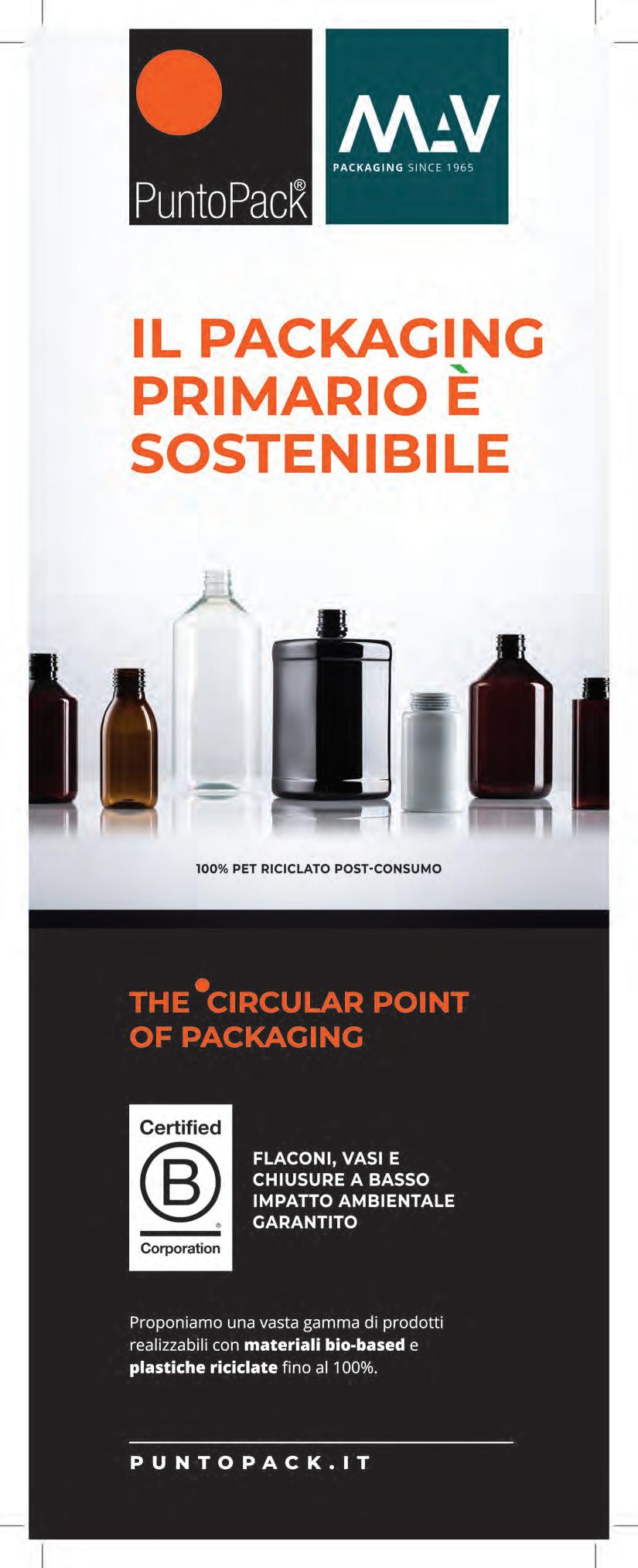
acquisition for Coesia
Coesia, through FlexLink, has completed the acquisition of 100% of the share capital of the American company Automation & Modular Components (AMC), based in Davisburg, in Michigan. The operation reinforces Coesia’s and FlexLink’s presence in the United States market, in particular in the batteries sector and where there is demand for heavy and light material handling applications in combined assembly or manufacturing processes. AMC serves various industrial sectors, thanks to its applications for heavy loads, including the automotive, food packaging, medical devices, metalworking, electronics, glass, pharmaceuticals and alternative energy sectors. AMC is a strategic axis in the Group, particularly for the development of FlexLink, which has extensive experience in robotics and material handling, segments further enhanced by AMC’s heavy-duty conveyor belts. AMC’s entry into Coesia’s portfolio in the United States, moreover, strengthens the organisation’s capabilities and allows the Group to maintain its position as leader in the supply of automation solutions.
A recycling initiative meriting reflection
Siegwerk (producer of inks and coatings for packaging and labels), Greiner and Krones have set up a partnership with the aim of demonstrating the possibility of recycling PP and PS containers printed in colour or with in-mould labels.
The initiative has shown that it is possible to effectively deink and transform rigid containers into high-quality white recycled materials, without altering the formulation of the ink or the print design, also thanks to the technological evolution of recycling plant.
The result has been achieved using hot caustic washing, a standard process adopted for recycling PET bottles and increasingly widespread also in recycling plant that treat flows of rigid materials (polyolefins and PS).
It serves as a call to review and update the deinking of packaging guidelines, therefore, and an invitation to adopt the DIN SPEC 91496 test standards, in line with the position paper published recently by EuPIA on the treatment of plastic packaging waste
- Coesia, attraverso FlexLink, ha concluso l’acquisizione del 100% del capitale sociale dell’azienda americana Automation & Modular Components (AMC) con sede a Davisburg, nel Michigan. L’operazione rafforza la presenza di Coesia e FlexLink sul mercato statunitense, in particolare nel settore delle batterie e laddove siano richieste applicazioni di movimentazione di materiali pesanti e leggeri in processi di assemblaggio o di produzione combinati. Grazie alle applicazioni per carichi pesanti, AMC serve diversi settori industriali, tra cui automotive, food
packaging, apparecchi medicali, lavorazione dei metalli, elettronica, vetro, farmaceutica, energie alternative. AMC rappresenta un asse strategico nel Gruppo, in particolare per lo sviluppo di FlexLink, che vanta grande esperienza nella robotica e nella movimentazione dei materiali, segmenti ulteriormente potenziati dai nastri trasportatori per carichi pesanti di AMC. L’introduzione di AMC nel portfolio di Coesia negli Stati Uniti, inoltre, rafforza le capacità dell’organizzazione e consente al Gruppo di mantenere la propria posizione di leader nella fornitura di soluzioni di automazione.
Siegwerk (produttore di inchiostri e coating per imballaggio ed etichette), Greiner e Krones hanno avviato una collaborazione con l’obiettivo di dimostrare la possibilità di riciclare contenitori di PP e PS stampati a colori o con etichette in-mould. L’iniziativa ha dimostrato come sia possibile disinchiostrare e trasformare in modo efficace i contenitori rigidi in materiali riciclati bianchi di alta qualità, senza alterare la formulazione dell’inchiostro o il design di stampa, anche grazie all’evoluzione tecnologica degli impianti di riciclo. Il risultato è stato ottenuto utilizzando il lavaggio con soda caustica a caldo, un processo standard adottato per riciclare le bottiglie in PET e sempre più diffuso anche tra i riciclatori che trattano flussi di materiali rigidi (poliolefine e PS). Un monito a rivedere e aggiornare le linee guida sulla de-inchiostrazione (deinking) dell’imballaggio, quindi, e un auspicio ad adottare gli standard di prova DIN SPEC 91496, in linea con il position paper pubblicato di recente da EuPIA sul trattamento dei rifiuti da imballaggi di plastica.
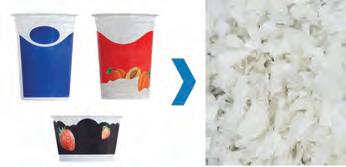

Distributore in esclusiva
Stampa di date di scadenza, date di produzione e numeri di lotto: ti aiutiamo a farlo rapidamente e con un'eccellente leggibilità.
• Nessun fermo macchina
• Soluzioni per produzioni ad alti e bassi volumi
• Stampa su qualsiasi superficie, concava, ruvida, liscia, piatta o in rilievo


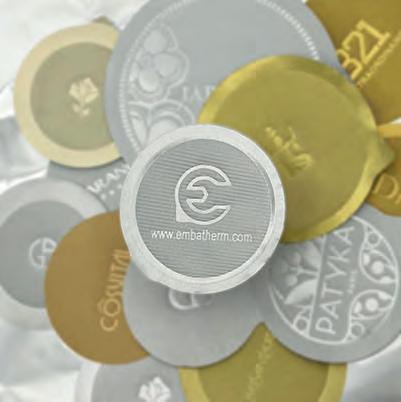
n Sistemi di chiusura facili da implementare ed economici, i lid di alluminio studiati per chiudere le confezioni di prodotti di bellezza garantiscono barriera totale ai gas e alla luce, a tutela della sicurezza.
La francese Embatherm propone un’ampia scelta di chiusure allo stato dell’arte, con goffrature e lavorazioni in grado di dare valore ai brand del cosmetico.
In particolare, la goffratura è una tecnica di decorazione tono su tono, senza aggiunta
di inchiostro, che consiste nell’appiattire il rilievo e la grana di fondo del coperchio, applicabile a tutti i foil a base Alu distribuiti dall’azienda, risaltando in modo particolare su fondi metallizzati, lucidi, di alluminio o dorati.
Tecnicamente possibile su tutti i rilievi, è però su fondi diamantati che si ottengono i risultati più spettacolari: laddove la goffratura opacizza il materiale, le aree appiattite risultano lucide e la grana fine consente disegni dettagliati, eleganti e di altissimo livello. Da sottolineare che la goffratura rotativa “a punta di diamante” è un’esclusiva di Embatherm, che garantisce risultati ottimali anche nel caso di pattern non geometrici. Infine, la goffratura può essere combinata con una “riserva”: questo accade quando attorno al perimetro del coperchio, appena sopra l’area di sigillatura, viene creata un’area liscia, che non presenta alcun segno del pattern; la sigillatura risulta così a tenuta perfetta, riducendo qualsiasi attrito con la saldatura inferiore.
Aluminium lids designed for packaging beauty products guarantee total barrier protection against gases and light, protecting safety.
The French company, Embatherm, offers a wide choice of state-of-the-art closures, with embossing and treatments able to give value to cosmetic brands. Specifically, embossing is a tone-on-tone decoration technique, without the addition of ink, which consists of flattening the embossing and the background grain of the lid, applicable on all the aluminium-based films distributed by the company, and stands out particularly well on metallic, glossy, aluminium or gold backgrounds.
Technically possible on all embossings, it is on diamond-point surfaces that the most spectacular results are obtained: the embossing mattifies the material, the flattened areas come out shiny and the fine grain allows for detailed, elegant, very high-end designs. It is worth noting that “diamond-point” rotary embossing is exclusive to Embatherm, guaranteeing excellent results also in the case of non-geometric patterns.
Finally, embossing can be combined with an embossing “reserve”: a smooth area is created around the entire periphery of the lid, just above the sealing area. A smooth area is created, which has no sign of the pattern. The seal is, as a result, tighter and any friction with the bottom seal is reduced.
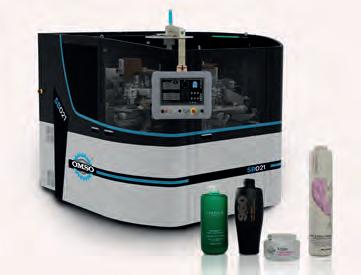
Con la macchina da stampa SB021 di OMSO, sostenibilità e velocità unite in un’unica soluzione. A Cosmopack Hall 19 - E19PK. OMSO, azienda leader nel settore delle macchine per la stampa diretta su packaging primario, si prepara a presentare il ritorno della macchina SB021. Lanciata con grande successo nel 2021, questa soluziowne innovativa per la stampa serigrafica fino a 3 colori, ha rapidamente conquistato il mercato, stabilendo nuovi standard di efficienza e sostenibilità. La versatilità, che consente di stampare sia su prodotti in plastica che vetro e la semplificazione dei processi come il cambio formato, rendono la produzione più efficiente e flessibile, permettendo alle aziende di adattarsi alle esigenze mutevoli del mercato in modo rapido ed efficiente. Il design compatto e le soluzioni tecniche adottate, che riducono in modo drastico i consumi energetici e le emissioni inquinanti, hanno giocato un ruolo fondamentale per far guadagnare a SB021 la fiducia di numerose aziende cosmetiche di primo piano.
Il Gruppo IMA porta a Cosmopack 2024 (Hall 19 PK - Stand A/10 - B/9PK) la nuova intubettatrice IMA Comadis C1060. Nata per replicare il successo della straordinaria serie C960/C970, la nuova famiglia di intubettatrici C1060 arriva sul mercato forte di una notevole ed invidiabile esperienza, con l’obiettivo di mantenere il primato raggiunto nell’ambito della media velocità.
L’approccio allo sviluppo di questo modello si è basato sul perfezionamento di tutte le funzioni, con l’introduzione di sostanziali aggiornamenti che non ne hanno tuttavia alterato l’originale semplicità e flessibilità progettuale, adatta a svariate applicazioni. Così, anche la nuova serie C1060 rivendica il ruolo di “quintessenza” dell’affidabilità, dell’ergonomia e della facilità d’uso: una formula di successo che resta sempre valida, così come il concetto di “prestazione di prima classe in dimensioni compatte”.
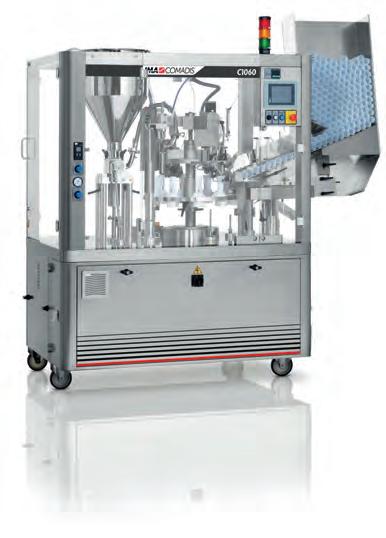
Sustainability and speed combined in a single solution with OMSO’s SB021 printing machine. At Cosmopack hall19 - E19PK
OMSO, the leading company in the sector of machines for direct printing on primary packaging, is preparing to present the return of the SB021 machine. Launched with great success in 2021, this innovative solution for screen printing with up to 3 colours rapidly conquered the market, establishing new standards of efficiency and sustainability. Its versatility, which makes it possible to print both on plastic and glass products, and the simplification of processes such as format change, make production more efficient and flexible, allowing businesses to rapidly and efficiently adapt to the changing demands of the market. The compact design and the technical solutions adopted, which drastically reduce energy consumption and polluting emissions, have played a fundamental role in earning SB021 the trust of numerous top cosmetics companies.
The IMA Group taking to Cosmopack 2024 (Hall 19 PK - Stand A/10 - B/9PK) the new IMA Comadis C1060 tube filling machine.
Developed to replicate the success of the extraordinary C960/C970 series, the new family of C1060 tube filling machines arrives on the market on the back of considerable and enviable experience, with the aim of maintaining the leadership achieved in the medium speed sector.
The development approach taken with this model has been based on the perfectioning of all its functions, with the introduction of substantial upgrades that do not, however, alter the original design simplicity and flexibility, suitable for a variety of applications. In this way, the new C1060 series also claims to represent the “quintessential” of reliability, ergonomics and ease of use: a successful formula that still remains valid, as does the concept of “first-class performance in compact dimensions”.
Having reached the milestone of 50 years of activity, the Marchesini Group is not giving up its artisanal passion for excellence and continues to plan ahead, reflecting on the future of innovation as an “opportunity for human, cultural, professional and social growth even before a productive and economical one”.
This is why the cutting-edge and technology will be the key themes guiding Marchesini Group Beauty’s experience at the Cosmopack trade fair (Hall 19PK - A9PK), where it will display machines and lines for the packaging of latestgeneration cosmetic products: flexible stand-alone solutions to meet the demands of the market, but also customizable lines, as well as technologies able to intercept emerging trends.
The solutions on show
• Among the most eagerly awaited new developments, is the machine for packaging lipsticks, which has been combined with SEA Vision’s “a-eye lipstick”. Recently awarded in the Cosmoprof Asia Awards, it’s the first inspection system in the world for the automatic control of lipsticks in production based on AI techniques, automating the quality inspection process so far largely assigned to manual human control.
• Besides the most recent technologies developed in the headquarters in Pianoro, the stand will host, as always, the solutions of specialized companies acquired in recent years and which today form the Group’s Beauty Division: V2 engineering and Dumek based in Emilia, Axomatic, Cosmatic and Rejves Machinery based in Lombardy and Vibrotech based in Tuscany.
Specifically, the stand will house 20 machines: undervacuum homogenizers of different sizes and capacities (developed by Dumek and Axomatic); a complete line for the filling and capping of tubes; a liquids and creams filling line, able to manage different types of bottles, created out of the close collaboration between the Axomatic and Vibrotech brands; a machine for lipsticks with soft mould technology developed by Cosmatic; a flagship perfume packaging machine of the V2 engineering brand; a rotary monobloc for weight-based filling of bottles developed by Rejves Machinery and, finally, a space entirely dedicated to laboratory machinery.

Raggiunto il traguardo dei 50 anni, il Gruppo Marchesini non rinuncia alla passione artigianale per l’eccellenza e si proietta ancora in avanti, riflettendo sul futuro dell’innovazione come “un’opportunità di crescita umana, culturale, professionale e sociale prima ancora che produttiva ed economica”.
Ecco perché avanguardia e tecnologia saranno i temi chiave che guideranno l’esperienza di Marchesini Group Beauty alla fiera Cosmopack (Hall 19PK - A9PK), dove metterà in mostra macchine e linee per il confezionamento di prodotti cosmetici di ultima generazione: soluzioni stand-alone flessibili per assecondare le richieste del mercato, ma anche linee personalizzabili nonché nuove tecnologie in grado di intercettare le tendenze emergenti.
Le soluzioni in mostra
• Tra le novità più attese, la macchina per il confezionamento di rossetti, a cui è stato abbinato “a-eye lipstick” di SEA Vision. Insignito di recente di un Cosmoprof Asia Awards, si tratta del primo sistema di ispezione al mondo per il controllo automatico dei rossetti in produzione basato su tecniche di AI, che automatizza il processo di ispezione qualitativa finora in larga parte affidato al controllo manuale umano.
• Oltre alle più recenti tecnologie sviluppate nella sede centrale di Pianoro, lo stand ospiterà come sempre le soluzioni delle aziende specializzate e acquisite negli ultimi anni che ad oggi formano la Beauty Division del Gruppo: le emiliane V2 engineering e Dumek, le lombarde Axomatic, Cosmatic e Rejves Machinery e la toscana Vibrotech.

In particolare lo stand accoglierà 20 macchine: turboemulsionatori di diverse dimensioni e capacità (sviluppati da Dumek e Axomatic); una linea completa per il riempimento e confezionamento di tubetti; una linea di riempimento liquidi e creme, in grado di gestire diverse tipologie di flaconi, nata dalla stretta collaborazione tra i marchi Axomatic e Vibrotech; una macchina per rossetti con tecnologia soft mould realizzata da Cosmatic; un’astucciatrice per profumi fiore all’occhiello del marchio V2 engineering; una monoblocco rotativa per riempimento a peso per flaconi targata Rejves Machinery e infine uno spazio dedicato interamente alle macchine da laboratorio.


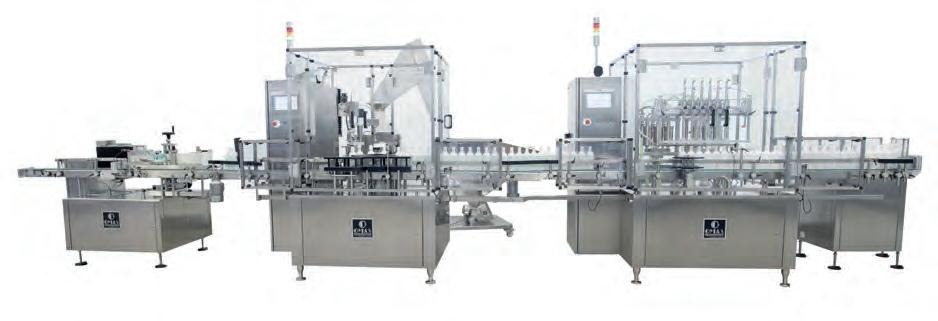
[FOCUS SU RIEMPITRICE
E MONOBLOCCO DI TAPPATURA
Società affermata nella progettazione e costruzione di macchinari di riempimento e tappatura, Omas Tecnosistemi ha rafforzato la propria posizione nell’ambito del confezionamento cosmetico con la proposta di soffiatori flaconi, mixer, fusori, turboemulsori, tunnel di raffreddamento, etichettatrici, tavoli rotanti, alimentatori e orientatori sia per flaconi che per tappi. Nell’offerta non mancano le soluzioni complete studiate per i prodotti make-up e beauty-care.
A Cosmopack (Hall 19K - Stand A14), oltre all’intubettatrice GMT-R70 e a due turboe-
mulsori (rispettivamente da 10 litri e da 50 litri), presenta una linea completa composta da riempitrice e monoblocco di tappatura, idonea per flaconi e vasi.
Costruita con elevati standard qualitativi, con design macchina di facile pulizia e manutenzione, garantisce estrema flessibilità adattandosi a ogni esigenza per il dosaggio di prodotti sia liquidi che cremosi (anche a caldo), o polveri. Tutte le parti a contatto con il prodotto sono realizzate in acciaio inox 316L o materiali approvati FDA. La linea può essere corredata da tavoli rotanti d’ingresso e accumulo flaconi, etichettatrice, stampa laser o inkjet.
A well-established company in the design and construction of filling and capping machines, Omas Tecnosistemi has strengthened its position in the field of cosmetics packaging with its offer of bottle blowers, mixers, melters, turbo-emulsifiers, cooling tunnels, labelling machines, rotating tables, feeders and orienters for both bottles and caps. The offer also includes complete solutions designed for make-up and beauty-care products.
At Cosmopack (Hall 19K - Stand A14), besides the GMT-R70 tube filling machine and two turbo-emulsifiers (respectively 10-litre and 50-litre), it is presenting a complete line composed of a filling machine and capping monobloc, suitable for bottles and vases.
Constructed with high quality standards, with an easy cleaning and maintenance machine design, it guarantees extreme flexibility, adapting to every need for the dosing of both liquid and creamy products (also hot), or powders. All the parts in contact with the product are made in 316L stainless steel or FDA-approved materials. The line can be equipped with rotating tables for the entry and accumulation of bottles, labelling machine, laser or inkjet printing.


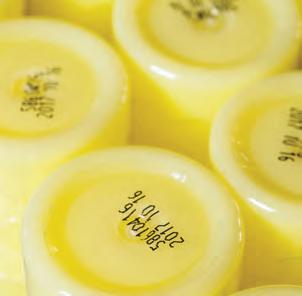
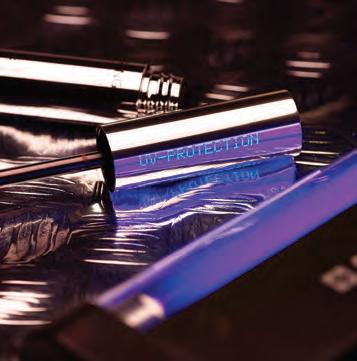
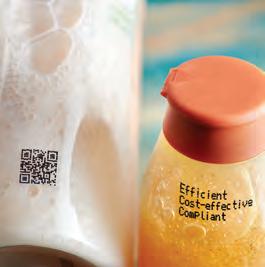
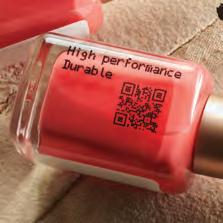
RIEMPIMENTO A PESO NETTO:
I VANTAGGI
Rejves Machinery sviluppa e produce alcune delle riempitrici e dei monoblocchi a peso netto più performanti del mercato. In visione a Cosmopack (Hall 19PK - A9). Tra i benefici del riempimento a peso netto rientra il fatto che, nonostante il volume del prodotto dosato cambi in base a variabili come la temperatura e la pressione, il peso rimane sempre costante.
Le riempitrici a peso netto Rejves sono dunque la soluzione perfetta per limitare il cosiddetto “give away” e i costi relativi, dato che raggiungono una precisione fino a ±1 g su 1.000 g tramite il controllo continuo della dosata e alla sua correzione dinamica.
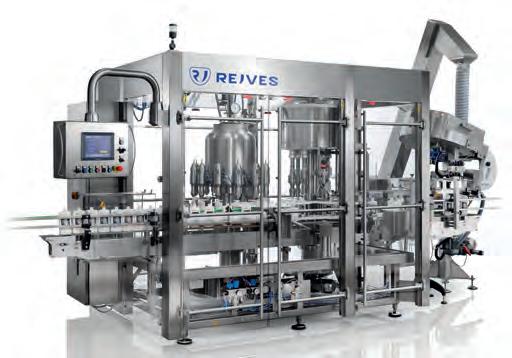
Questa tecnologia permette inoltre di limitare la possibilità che avvenga una contaminazione del prodotto, grazie alla mancanza di contatto tra il contenitore e il relativo ugello: una caratteristica, questa, che la rende particolarmente indicata all’industria cosmetica e alimentare.
Un ulteriore vantaggio garantito dalle riempitrici a peso netto sta nel fatto che la valvola di riempimento non rilascerà mai alcun prodotto, qualora una stazione rilevasse la mancanza del contenitore. Inoltre, con l’ausilio di una coclea di alimentazione servoassistita, la produ-
AXOFILL 40 CON AXOCAP 40
zione potrà proseguire senza interruzioni, nel caso in cui una cella di carico vada in errore. Il PLC sarà infatti in grado di instradare le bottiglie evitando l’ugello o la cella di carico difettosi, dando quindi la possibilità di posticipare l’intervento tecnico al termine del lotto di produzione.
Tutte le soluzioni per il packaging di Rejves Machinery sono fornite di parti a formato a cambio rapido, codificate con colori e numeri, la cui rimozione è possibile senza l’ausilio di attrezzi. Sul sito www.rejves.it è possibile visionare la gamma completa di soluzioni studiate per il packaging primario.
A Cosmopack (Hall 19Pk - A9) Axomatic presenta una soluzione semplice e compatta per il riempimento e la tappatura lineare di flaconi stabili di diverso diametro (da 30 mm a max 100 mm), fino a una velocità massima di 40 pezzi/min. Per mezzo di un nastro, la riempitrice Axofill 40 permette l’ingresso dei flaconi selezionati grazie a due cancelletti pneumatici; quattro dosatori azionati da servo motori garantiscono il dosaggio accurato di prodotti cosmetici liquidi e densi con un range da 30 ml a 500 ml ciascuno. Quattro ugelli discendenti, la cui velocità di discesa e salita è controllata anche in questo caso da servo motori, depositano il prodotto
advantages
Rejves Machinery develops and produces some of the best-performing filling machines and net weight monoblocs on the market. On show at Cosmopack (Hall 19PK - A9).
The benefits of net weight filling include the fact that, although the volume of the dosed product changes according to variables such as temperature and pressure, the weight always remains constant.
Rejves’ net weight fillers are, therefore, the perfect solution for limiting the so-called “give away” and relative costs, given that they achieve a precision of up to ±1 g in 1000 g through the continuous control of the dosage and its dynamic correction. This technology makes it possible, moreover, to limit the possibility of product
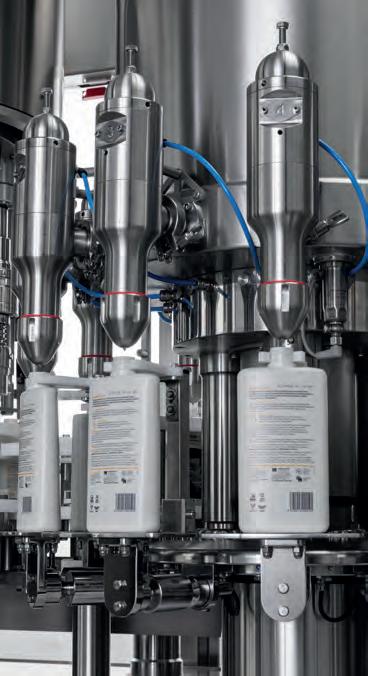
all’interno dei flaconi dal basso verso l’alto. Tutte le parti a contatto con il prodotto sono realizzate in acciaio inossidabile AISI 316L, facili da smontare e da igienizzare. La macchina memorizza fino a 50 diverse ricette.
Dopo la riempitrice il nastro trasporta i flaconi in un’area sicura, dove l’operatore può posizionare i tappi manualmente e la Axocap 40 provvede ad avvitarli correttamente. Anche la colonna di avvitatura è azionata da due servo motori, che ne controllano il movimento verticale, il numero di giri e la coppia di serraggio.Un pannello comandi, dotato di collegamento ethernet, verifica l’intero processo, recupera dati e consente di effettuare tele assistenza.
contamination, thanks to the lack of contact between the container and the relative nozzle: a feature that makes it particularly suitable for the cosmetics and food industries. A further advantage guaranteed by the net weight fillers lies in the fact that the filling valve will never release any product if a station detects the container is missing. In addition, with the use of a servo-assisted feeding screw, production can continue without interruptions in the event a load cell fails.
The PLC will, in fact, be able to reroute the bottles to avoid the faulty nozzle or load cell, thereby making it possible to postpone technical intervention to the end of the production batch.
All Rejves Machinery’s packaging solutions are supplied with quickchange format parts, codified with
colours and numbers, the removal of which is possible without having to use tools.
It’s possible to see the complete range of solutions developed for primary packaging on the www.rejves.it website.
Axofill 40 con Axocap 40
At Cosmopack (Hall 19PK - A9)
Axomatic presents a simple and compact solution for the linear filling and capping of stable bottles of different diameters (from 30 mm to max 100 mm), at up to a maximum speed of 40 pieces/min.
The Axofill 40 filling machine allows for the entry of selected bottles on a conveyor belt thanks to two pneumatic gates; four dosers driven by servo motors guarantee accurate dosing of liquid and thick cosmetic products with a range
from 30ml to 500ml each. Four diving nozzles, whose descent and ascent speed are also controlled in this case by servo motors, deposit the product inside the bottles from bottom to top.
All the parts in contact with the product are made in AISI 316L stainless steel and are easy to dismantle and sanitise. The machine memorises up to 50 different recipes.
After the filler, the conveyor belt takes the bottles to a safe area where the operator can position the caps manually and the Axocap 40 ensures correct screwing. The screwing column is also driven by two servo motors, which control the vertical motion, the number of turns and the tightening torque. A control panel, furnished with an ethernet connection, verifies the entire process, recuperates data and makes it possible to carry out remote assistance.

Innovazione, sostenibilità e qualità sono tre ele menti chiave che guidano le attività quotidiane di Arca Etichette Spa (Hall 20 - B37). In mostra a Cosmopack le etichette ultra-trasparenti No Label Look, etichette realizzate con materia li metallizzati abbinate a tecniche da stampa dall’effetto wow, wrap-label avvolgenti ma anche soluzioni adesive a più pagine multistrato (fino a sei strati) e multipagina (sia booklet, che piegate a fisarmonica) con la possibilità di combinare vari materiali per le diverse pagine. Tutte realiz zabili anche con materiali eco-friendly: in Stone Paper per effetto soft-touch, varie proposte di materiali riciclati, da fonti naturali (FSC, biode gradabili e compostabili) e con spessori ridotti allo scopo di utilizzare solo ciò che è realmente necessario per il proprio packaging.
Focus particolare sulle soluzioni anticontraffa zione, tamper-evident, track&trace, serializzate e personalizzate con inchiostri speciali, a tutela dell’originalità del prodotto. In questo contesto,
Arca presenterà anche un innovativo sistema di serializzazione invisibile, per consentire ai clienti
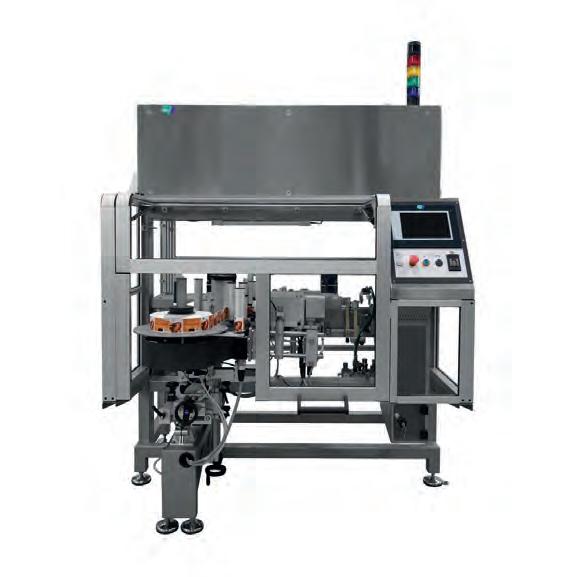
Innovation, sustainability and quality are three key elements that guide the daily activities of Arca Etichette Spa (Hall 20 - B37) . The ultra-transparent No Label Look labels on show at Cosmopack, labels made with metallised materials combined with wow-effect printing techniques and enveloping wrap-labels, but also multi-layer (up to six layers) and multi-page (both booklets, and concertina folding) adhesive solutions with the possibility of combining various materials for the different pages. All can be made with eco-friendly materials: in Stone Paper for a soft-touch effect, various recycled materials proposals from natural sources (FSC, biodegradable and compostable) with reduced thicknesses with the aim of using only what is actually necessary for correct packaging. A particular focus on anti-counterfeiting, tamper-evident, track&trace, serialized and customized with special inks, to safeguard the originality of the product. In this context, Arca will also be presenting an innovative invisible serialization system, to allow customers to track the product’s distribution and fight counterfeiting and the parallel market.
Certificazione M.O.C.A. per materiali ed oggetti a contatto con alimenti
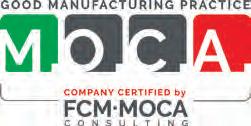
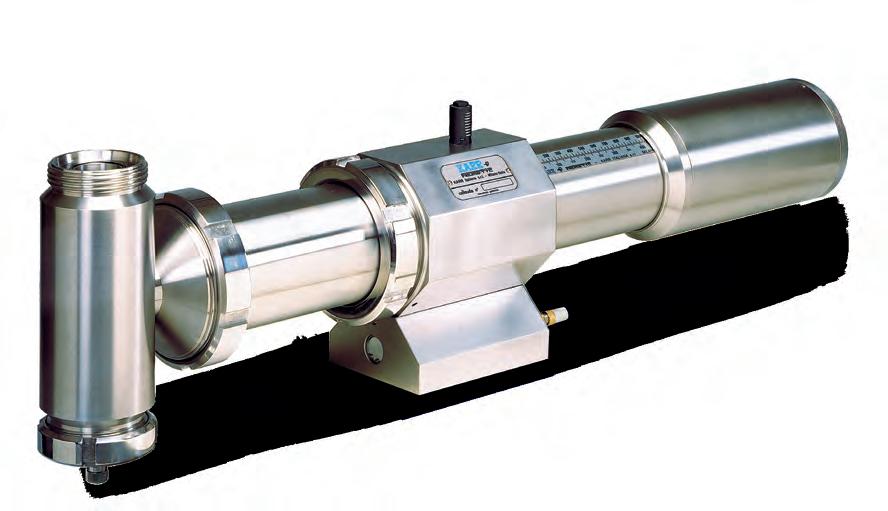

Tel. +39 02 45712849
Fax +39 02 45707603
karrit@tin.it info@karr-italiana.it www.karr-italiana.it
Markem-Imaje, fornitore globale di soluzioni end-to-end per la supply chain e sistemi di marcatura e codifica industriale, a Cosmopack (Hall 20, stand A6) presenta soluzioni avanzate per la catena di fornitura cosmetica.
Markem-Imaje vanta decenni di esperienza nello sviluppo di hardware in grado di produrre codici di qualità eccezionalmente elevata sui vari imballaggi utilizzati nel segmento dei cosmetici, e di software* che soddisfano le esigenze di tracciabilità e protezione del marchio.
«I produttori di cosmetici devono essere in grado di tracciare i prodotti lungo tutta la catena di fornitura, per ridurre al minimo le conseguenze negative di un eventuale ritiro del prodotto e per garantirne l’autenticità» afferma Massimo Cavazzini, Direttore Vendite di MarkemImaje Italia: «Oggi più che mai è fondamentale che le confezioni dei cosmetici
* Il software Markem-Imaje CoLOS©, compatibile con tutto il suo hardware e con tutti i principali sistemi di produzione ed ERP, aiuta a ottimizzare la produzione per massimizzare i tempi di attività e garantire che le soluzioni di imballaggio e codifica siano accurate e tracciabili, a protezione dei marchi di cosmetici.
* Markem-Imaje’s CoLOS© software, compatible with all its hardware and with all major production and ERP systems, helps to optimise production to maximise uptime and ensure that packaging and coding solutions are precise and traceable, safeguarding cosmetics brands.
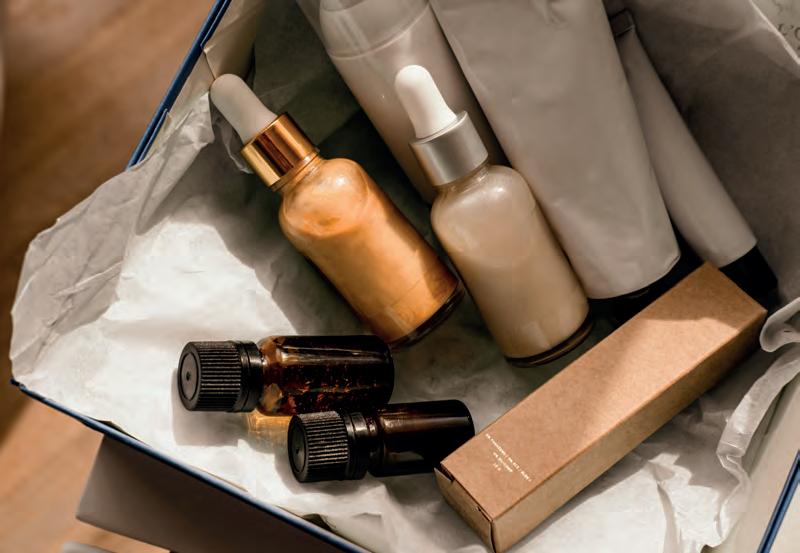
siano codificate ed etichettate correttamente, con tecnologie che garantiscano la durata della stampa».
I sistemi in mostra
Ideali per soddisfare la domanda odierna di codici 1D e 2D, l’azienda presenta dunque una gamma di soluzioni dedicate, che si basano su diverse tecnologie di stampa, dal laser al getto d’inchiostro continuo, dalla stampa e applica al trasferimento termico.
• È il caso del recente applicatore eTouchS© per il sistema Print and Apply serie 2200, che soddisfa la necessità di ridurre l’impatto ambientale e, al contempo, aumentare il grado di sicurezza. Grazie all’intelligenza artificiale integrata, che garantisce precisione alle massime ve-
Markem-Imaje, global supplier of end-to-end solutions for the supply chain and industrial marking and coding systems, presents advanced solutions for the cosmetics supply chain at Cosmopack (Hall 20, stand A6).
Markem-Imaje has decades of experience in the development of hardware able to produce exceptionally high-level quality codes on various types of packaging used in the cosmetics sector and of software* that meets traceability and brand protection needs.
«Cosmetics producers have to be able
to track products throughout the supply chain to reduce the negative consequences of a possible product withdrawal to a minimum, as well as to guarantee authenticity» affirms Massimo Cavazzini, Sales Director of Markem-Imaje Italia: «Today, more than ever, it’s essential that cosmetic packaging is coded and labelled
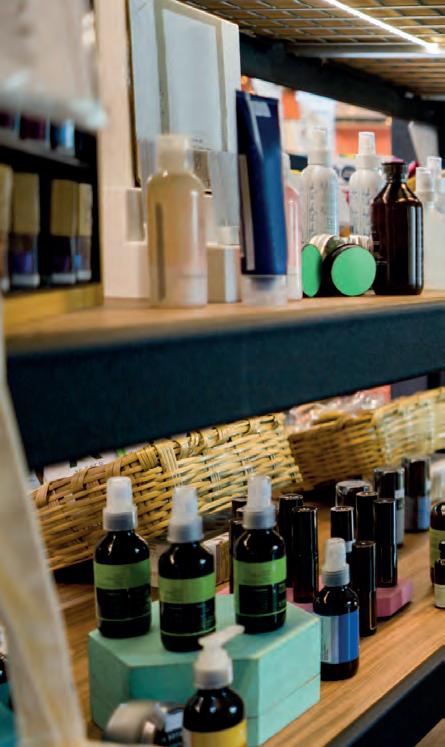
locità di produzione, eTouch-S© è stato già premiato per il grado di innovazione. In generale, la serie 2200 soddisfa complessi requisiti di etichettatura di alta qualità e a velocità di oltre 150 prodotti al minuto.
• In mostra anche l’ultima stampante a getto d’inchiostro continuo (CIJ), la 9750, che inaugura la prossima generazione di macchine in grado di eseguire potenti codifiche di tracciabilità, inclusi messaggi di testo fino a cinque righe, loghi e codici 1D e 2D ad alta risoluzione su tutti tipi di imballaggio. La 9750 è compatibile con un’ampia gamma di inchiostri,
correctly with technologies that guarantee the durability of the print ».
The systems on display
Ideal for meeting meet today’s demand for 1D and 2D codes, the company, therefore, offers a range of dedicated solutions, which are based on different printing technologies, from laser to continuous ink-jet, from print and apply to thermal transfer.
• This is the case of the recent eTouch-S© applicator for the series 2200 Print and Apply system, which meets the need to reduce environmental impact and, at the same time, increase safety levels. Thanks to the integrated artificial intelligence, which guarantees
precision at maximum production speed, eTouch-S© has already been awarded for its level of innovation. In general, the 2200 series meets the complex requirements of high-quality labelling at a speed of over 150 products per minute.
• Also on display was the latest continuous ink-jet (CIJ) printer, the 9750, launching the next generation of machines capable of achieving high traceability, including text messages of up to five lines, logos and high resolution 1D and 2D codes on all types of packaging. The 9750 is compatible with a wide range of inks, formulated and developed according to rigorous technologies, including a portfolio of MEK-free inks, which make

formulati e sviluppati secondo rigorose metodologie, incluso il portafoglio di inchiostri privi di MEK, che consente di ridurre sia la quantità dei materiali di consumo sia le emissioni di composti organici volatili (COV) fino al 50%.
• Altro punto forte dell’offerta sarà la stampante a trasferimento termico (TTO) SmartDate® X65, espressione di una tecnologia progettata appositamente per la codifica di film flessibili. La serie SmartDate ® fornisce i codici più affidabili e di alta qualità su confezionatrici flow-pack, sacchetti, termosaldatrici, buste, buste, confezioni sottovuoto o
etichette. Markem-Imaje ha di recente rilasciato un nuovo tipo di nastro a trasferimento termico in resina per SmartDate®, da utilizzare sui substrati a base carta riciclabile e imballaggi in pellicola flessibile.
• Infine, nell’area in rapido sviluppo della stampa laser, adatta a molteplici materiali di imballaggio, plastica e vetro inclusi, Markem-Imaje punta l’attenzione sul laser CO2 SmartLase C350, che produce codici di alta qualità anche in 2D alla velocità massima di 150.000 pezzi/ora (30% più velocemente rispetto ad altri laser).
Makro Labelling si impegna nella progettazione di etichettatrici all’avanguardia, puntando su modularità e flessibilità per rispondere alle esigenze produttive in continua evoluzione. Forte di tre decenni di esperienza, offre una rete commerciale globale e un servizio di assistenza e ricambi di primo livello, assicurando soluzioni per ogni necessità, da piccole a grandi produzioni, con capacità da 1.500 a 50.000 bottiglie/ora e fino a cinque applicazioni per bottiglia.
La produzione, interamente Made in Italy, unisce innovazione tecnologica e rispetto ambientale, mirando al risparmio energetico e a un modello di sviluppo sostenibile. La mission dichiarata dall’azienda è fornire non solo macchinari affidabili e di qualità ma anche un supporto costante, garantendo assistenza rapida per l’intero ciclo di vita delle macchine. (A Cosmopack, Hall 19 - C1)

it possible to reduce both the quantity of consumables and the emission of volatile organic compounds (VOCs) by up to 50%.
• Another point of strength of the offer will be the SmartDate ® X65 thermal transfer (TT) printer, an expression of technology specially designed for flexible film packaging. The SmartDate ® series provides more reliable and high-quality codes on packaging machine flow-packs, bags, heat-sealers, cases, vacuum packs or labels. Markem-Imaje has recently issued a new type of resin thermal transfer ribbon for SmartDate®, to be used on recyclable paper-based
substrates and flexible film packaging.
• Finally, in the rapidly developing laser printing area, suitable for numerous packaging materials, including plastic and glass,
focusing its efforts on the SmartLase C350 CO2 laser which produces high quality codes also in 2D at a maximum speed of 150,000 pieces/hour (30% faster than other lasers).
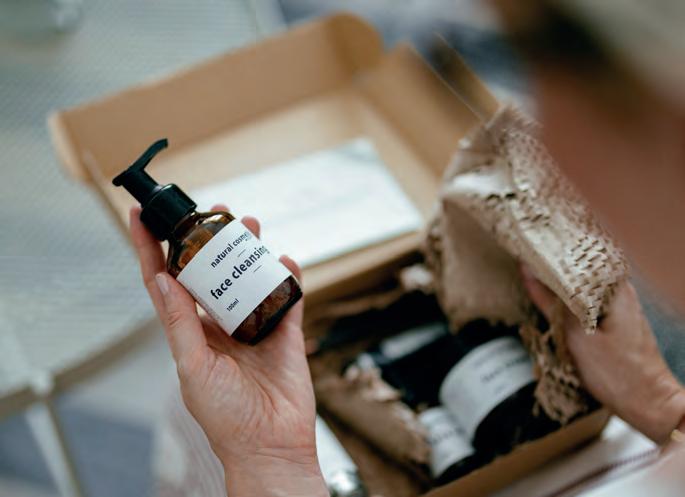
Makro Labelling is committed to the design of cutting-edge labelling machines, focusing on modularity and flexibility to meet continuously evolving production needs.
On the back of decades of experience, it has a global commercial network and a top-rate assistance and spare parts service, offering solutions for every need, from small to large-scale productions, with capacities from 1,500 to 50,000 bottles/hour and up to five applications per bottle.
The entirely Made-in-Italy production combines technical innovation and environmental respect, aiming at energy saving and a sustainable development model. The company’s declared mission is to provide not only reliable and quality machines, but also constant support, guaranteeing rapid assistance for the entire life-cycle of the machines. ß
(At Cosmopack, Hall 19 - C1)
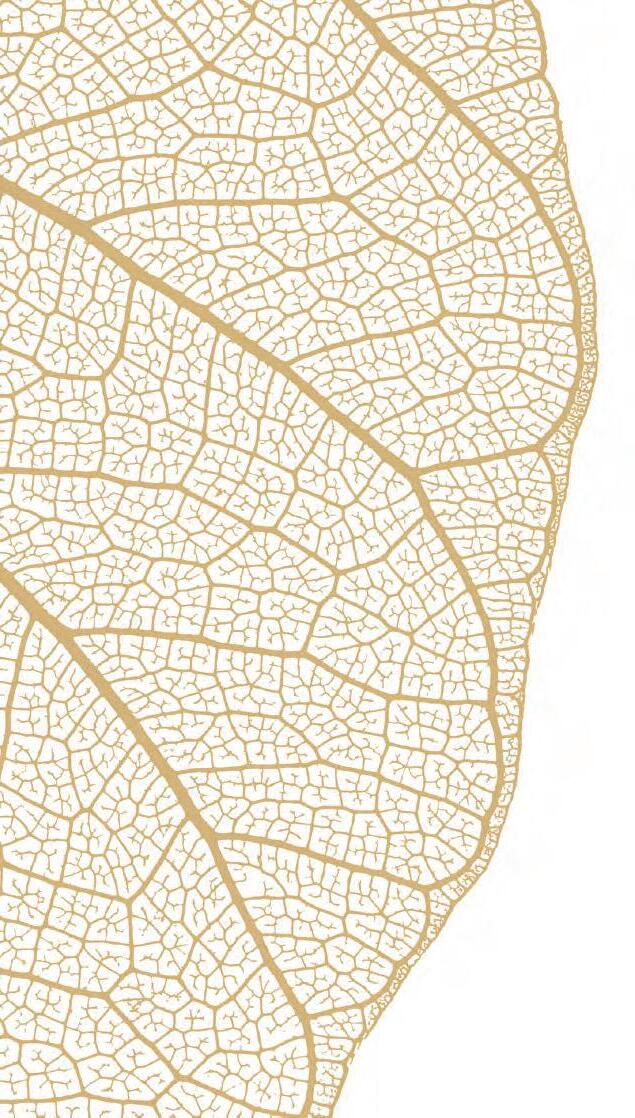
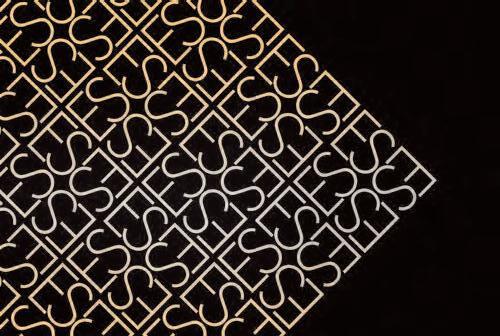
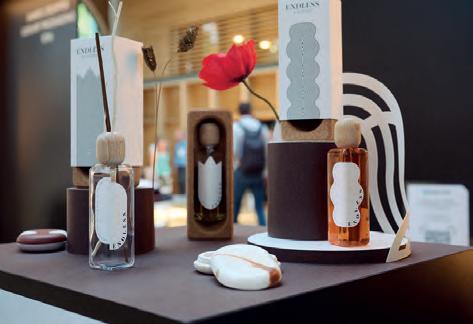
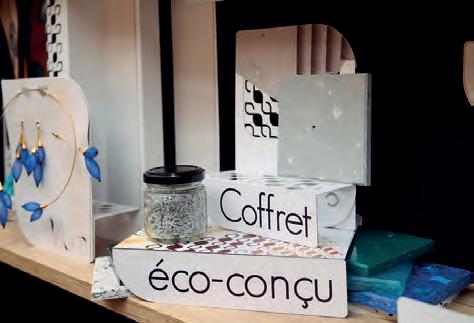

Scoprire l’evoluzione tecnologica nel packaging insieme ad Holonix: partner del progetto europeo Horizon 2020
KITT4SME, mette a disposizione nel progetto il back-end del software in cloud (già disponibile sul mercato)
“i-Live Machines” per la raccolta e la gestione automatizzata dei dati delle macchine automatiche.

Uno degli obiettivi principali delle PMI in ambito manifatturiero è migliorare e rendere sempre più efficiente il proprio processo produttivo, andando a riqualificare quello che, a oggi, risulta essere un modello di business poco dinamico e ormai sorpassato.
L’introduzione delle nuove tecnologie - IoT, Big Data e AI - non è solo il punto di partenza per raggiungere il cambiamento ma è anche il punto di arrivo: non si possono sfruttare le funzionalità di tali strumenti senza aver prima costruito una base di conoscenza fattuale di ciò che succede all’interno del proprio parco macchine.
Il modo migliore per raccogliere le informazioni necessarie, soprattutto quando si tratta di un settore con alta propensione all’export come quello delle macchine automatiche per il confezionamento e l’imballaggio, è monitorare, analizzare e storicizzare i dati provenienti dai macchinari da remoto, per tracciarne il ciclo di vita e capire in che modo si comportano, instante per istante, anche quando sono lontane dalla casa madre.
Non solo: la conoscenza deve essere patrimonio dell’azienda, che deve abbracciare completamente la visione “data-driven”, innovativa e strategica, per poter attuare un connubio perfettamente bilanciato tra uomo-macchina, supportandolo dove necessario, con il risultato di arricchire le capacità umane e raggiungere risultati migliori.
Il software di Holonix organizza le conoscenze. Per avvicinare alle tecnologie industriali le PMI che ancora non hanno approfondito tale tematica, il progetto europeo di Horizon 2020 KITT4SME (G.A. 952119) ha realizzato una piattaforma al cui interno è possibile trovare gli strumenti e i servizi di cui le aziende possono aver bisogno per attuare la propria trasformazione digitale e introdurre l’Intelligenza
Holonix in breve
Dal 2010, anno della sua fondazione, Holonix srl combina in un’unica realtà le attività di ricerca applicativa, un solido know-how e la creazione di strumenti e soluzioni che sostengono la trasformazione digitale del business.
Progetta prodotti software con tecnologie IoT e Augmented Intelligence, offrendo un supporto operativo alle piccole e medie eccellenze industriali italiane del settore del manifatturiero, che vogliono crescere in efficienza, competenza e competitività.
Artificiale nei propri processi produttivi.
Tra i partner di progetto, Holonix Srl, da più di 10 anni nel campo dell’IoT e dei SaaS, ha portato, in qualità di solution architect, una base tecnologica per rendere disponibili i dati provenienti dal campo e necessari per poter abilitare il successivo addestramento di altre tecnologie come l’AI.
Tale soluzione non è altro che il back-end del software in cloud i-Live Machines, già disponibile sul mercato per la raccolta e la gestione automatizzata dei dati delle Macchine Industriali. Basandosi sul reale utilizzo, il software costruisce e organizza la conoscenza dello stato passato, presente e “futuro” delle macchine installate nel mondo, ren-

dendo quindi possibile monitorare l’intero ciclo di vita del macchinario, prevedere possibili anomalie e gestire in anticipo le criticità; grazie alla storicizzazione e all’ analisi conseguente, abilita il primo step per compiere una digitalizzazione completa della fabbrica.
Discover the technological evolution in packaging together with Holonix: a partner in the Horizon 2020 KITT4SME European project, it provides the project with the “i-Live Machines” cloud-based back-end software (already available on the market) for the collection and automated management of data from automatic machines.
One of the main objectives of PMIs in the manufacturing sector is to improve their production process and make it more efficient, upgrading what is today an insufficiently dynamic and by now outdated business model.
The introduction of new technologies - IoT, Big Data and AI - is not only a starting point for achieving change, but is also a point of arrival: it’s not possible to exploit the advantages of these tools without having first built a base of factual knowledge of what happens within the fleet of machines. The best way to obtain the necessary information, especially when dealing with a sector with a high propensity for exports like that of automatic packaging machines, is to monitor, analyse and memorise the data coming from the machines by remote, in order to track the life-cycle and
understand how they behave, moment by moment, also when they are far away from the parent company.
That’s not all: know-how has to be an asset of the company, which has to completely embrace a “data-driven”, innovative and strategic vision, in order to be able to implement a perfectly balanced union between man and machine, supporting it, where necessary, with the goal of enriching human capabilities and achieving better results.
Holonix’s software organises knowledge. To introduce industrial technologies to SMEs that have not yet explored this topic in depth, the Horizon 2020 KITT4SME (G.A. 952119) European project has set up a platform inside of which it’s possible to find the tools and services that
L’introduzione delle nuove tecnologie nel processo manifatturiero non è banale ma perfettamente attuabile, se si costruisce una base di conoscenza partendo dalla raccolta dei dati sul campo e, soprattutto, da una visione strategia data-driven.
Since 2010, the year it was founded, Holonix srl has been combining, in a single enterprise, application research activities, solid know-how and the creation of tools and solutions that support the digital transformation of businesses.
It designs software products with IoT technologies and Augmented Intelligence, offering an operating support to Italian small and medium industrial excellences in the manufacturing sector, which want to grow in efficiency, know-how and competitiveness.
companies may need in order to carry out their digital transformation and bring Artificial Intelligence into their production processes.
As one of the project partners, Holonix Srl, operating in the IoT and Saas fields for more than 10 years, has provided, as solutions architect, a technological tool for making necessary data from the field available in order to enable the subsequent training of other technologies such as AI. This solution is, precisely the i-Live Machines cloud-based back-end software, already available on the market for the collection and automated management of data from automatic machines. Based on actual usage, the software
constructs and organises knowledge of the past, present and “future” of machines installed throughout the world, making it, therefore, possible to monitor the entire life cycle of the machinery, predict possible anomalies and manage problems in advance; thanks to the historical data handling and subsequent analysis, it enables the achievement of the first step to carry out a complete digitalisation of the factory.
The introduction of new technologies in the manufacturing process is not simple but is perfectly feasible if a knowledge base is built, starting from the collection of data in the field and, most of all, applied with a strategic data-driven approach.

n Da 40 anni SIPRO Srl produce controlli numerici e soluzioni per il motion control. Oltre ai controlli/PLC e a una gamma completa di hardware e software per l’automazione dei macchinari, la società propone al mercato una linea innovativa di robot a geometria Delta. Complemento ideale in tutti i settori del packaging per pick & place, assemblaggio e handling, i Delta Robot SIPRO si differenziano principalmente in base ai diametri dell’area di lavoro: sono infatti disponibili le versioni da 500 mm, 700 mm, 1200 mm e 1600 mm.
I Delta possono essere configurati con 3, 4 o 5 assi ed è possibile integrarli in modo rapido ed efficace con i sistemi di visione, sempre offerti da SIPRO. Ulteriori vantaggi sono la possibilità di customizzare le mani di presa e l’integrazione di numerose funzioni avanzate come l’interpolazione, l’inseguimento del nastro in presa e deposito, la gestione e distribuzione dei prodotti in arrivo su più robot in linea, i raccordi di traiettoria 3D e l’esecuzione dell’interfaccia grafica su sistemi mobile Android.
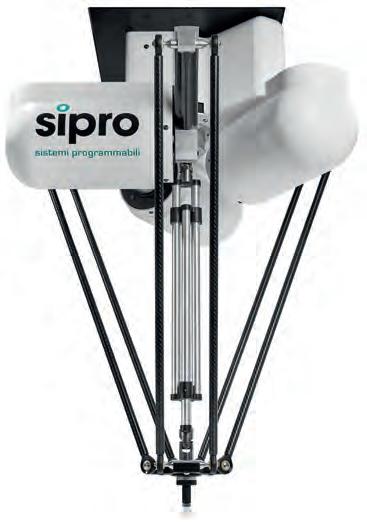
Il nuovo modello SIAX D4 700 HS-C, in particolare, è progettato per il mondo del food e del packaging, con cover di protezione IP65 e con la gestione del quarto asse di rotazione a cardano per tutte le applicazioni che richiedono la rotazione veloce del pezzo.
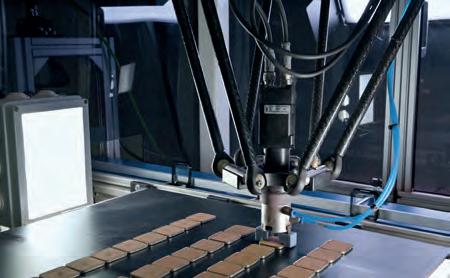
I robot Delta SIPRO vengono abitualmente impiegati nel settore cosmetico; le applicazioni finora affrontate in questo ambito sono l’inserimento di flaconi nelle scatole, il raddrizzamento dei contenitori in arrivo in modo casuale su un nastro e posizionamento su un altro nastro con o senza puk, l’inserimento della cialda all’interno delle palette, l’assemblaggio delle trousse cosmetiche… SIPRO’s Delta
n A Parma, dal 28 al 30 maggio 2024, appuntamento con la dodicesima edizione di SPS Italia, la fiera dell’automazione e del digitale per l’industria intelligente e sostenibile. Nel quartiere espositivo sono sei i padiglioni dedicati alle soluzioni più all’avanguardia per il comparto manifatturiero. A guidare il visitatore nel panorama delle nuove tecnologie c’è District 4.0, il percorso con demo funzionanti di robotica e meccatronica, Industrial IT & AI, Additive Manufacturing. Sustainable Innovation, all’ingresso del padiglione 4, apre l’itinerario con un’area dedicata alla transizione green e l’energy efficiency. Sarà adiacente alla stampa 3D industriale, due ambiti con ampie potenzialità nella riduzione degli sprechi e la salvaguardia del pianeta. Al centro degli eventi, nelle arene Industry, Tech e Next, i principali trend del sistema industriale: intelligenza artificiale, Industry 5.0, sostenibilità, per citarne alcuni. Tra le altre novità 2024 c’è la pubblicazione della seconda edizione del Position Paper, documento a cui lavora il Comitato Scientifico della manifestazione composto da oltre 150 realtà produttive italiane, per offrire linee guida utili alla comprensione dell’evoluzione tecnologica e digitale.
Prosegue infine l’impegno di SPS Italia nell’accorciare le distanze tra scuola e industria con l’iniziativa “Lezioni in fiera” e una nuova area nel padiglione 8, palcoscenico di incontri e laboratori organizzati da espositori e partner, rivolti agli studenti di università e istituti tecnici. L’ingresso è gratuito. Per ulteriori informazioni, rimandiamo a spsitalia.it
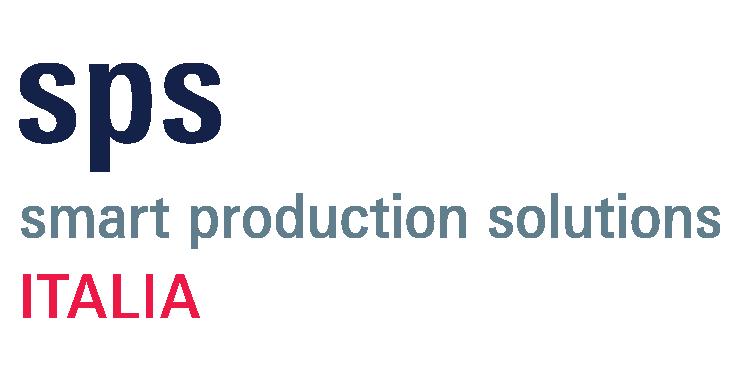
Delta Robot for the cosmetics market
SIPRO Srl has been producing numerical controls and motion control solutions for 40 years. Besides controllers/PLCs and a complete range of hardware and software for machinery automation, the company offers the market an innovative line of Delta robots.
Ideal complements in all packaging sectors for pick & place, assembly and handling, the SIPRO Delta Robots differ mainly according to the diameters of the work area: they are, in fact, available in 500 mm, 700 mm, 1200 mm and 1600 mm versions.
The Delta Robots can be configured with 3, 4 or 5 axes and it’s possible to integrate them rapidly and effectively with the vision systems offered by SIPRO. Further advantages include the possibility of customising the grip hands and the integration of numerous advanced functions such as interpolation, tracking of the conveyor in picking and depositing phases, the management and distribution of incoming products on multiple robots, 3D trajectory connections and running the graphical interface on Android mobile systems.
The new SIAX D4 700 HS-C model, in particular, is designed for the food and packaging world, with IP65 protection cover and with the management of the fourth shaft rotation axis for all applications that require fast rotation of the piece.
The twelfth edition of SPS Italia, the automation and digital trade fair for intelligent, and sustainable industry, will be held in Parma from 28 to 30 May 2024. Six pavilions in the trade fair district will be dedicated to cutting-edge solutions for the manufacturing sector.
Guiding the visitor in an overview of new technologies will be District 4.0, the programme with functioning robotics and mechatronics, Industrial IT & AI and Additive Manufacturing demos. Sustainable Innovation, in the entry to pavilion 4, opens the itinerary with an area dedicated to the green transition and energy efficiency. It will be adjacent to industrial 3D printing, two fields with great potential for the reduction of waste and the safeguarding of the planet.
In the Industry, Tech and Next arenas, the focus will be on the main trends of the industrial system: artificial intelligence, Industry 5.0 and sustainability, to mention just a few.
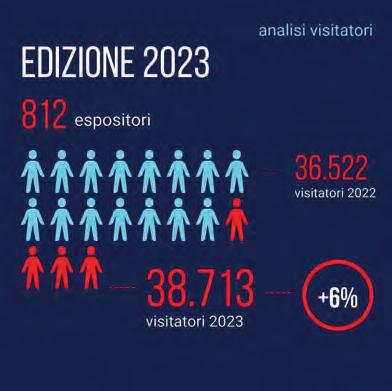
New developments for 2024 include the publication of the second edition of the Position Paper, the document that the Scientific Committee of the event, composed of over 150 Italian producer companies, has worked on to offer useful guidelines for understanding the technological and digital evolution.
SPS Italia’s commitment to reducing the distance between school and industry continues, finally, with the “Lessons at the Fair” initiative and a new area in pavilion 8, the stage for meetings and laboratories organized by exhibitors and partners, aimed at university and technical institute students. Entry is free. For further information, reference can be made to spsitalia.it/en/







Brani tratti dal regolamento (UE) 2019/881 relativo all’ENISA, l’Agenzia dell’Unione europea per la cybersicurezza e alla certificazione della cybersicurezza per le tecnologie dell’informazione e della comunicazione.
…Le reti e i sistemi informativi e le reti e i servizi di comunicazione elettronica svolgono un ruolo essenziale nella società e sono diventati i pilastri della crescita economica. Le tecnologie dell’informazione e della comunicazione (TIC) sono alla base dei sistemi complessi su cui poggiano le attività quotidiane della società, fanno funzionare le nostre economie in settori essenziali quali la sanità, l’energia, la finanza e i trasporti e, in particolare, contribuiscono al funzionamento del mercato interno.
L’uso delle reti e dei sistemi informativi da parte di cittadini, organizzazioni e imprese di tutta l’Unione è attualmente molto diffuso. La digitalizzazione e la connettività stanno diventando caratteristiche fondamentali di un numero di prodotti e servizi in costante aumento, e con l’avvento dell’Internet degli oggetti (Internet of Things - IoT) nel prossimo decennio dovrebbero essere disponibile in tutta l’Unione un numero estremamente elevato di dispositivi digitali connessi. Sebbene un numero crescente di dispositivi sia connesso a Internet, la sicurezza e la resilienza non sono sufficientemente integrate nella progettazione, il che rende inadeguata la cybersicurezza …]
Macchine e processi industriali: interviene una Direttiva UE IoT e Industry 4.0 hanno dato una spinta decisiva ai fini della connessione delle macchine ad Internet. Ma le macchine erano pronte ad essere connesse
alla rete? I sistemi e i software di assistenza remota in uso sono idonei? Le domande aprono ad un nuovo scenario sul delicato tema della cybersicurezza. La sicurezza informatica è sempre stata gestita a livello IT, quindi con server, gestionali firewall, VPN, password complesse e doppia autentificazione: termini e procedure diventati di uso comune negli uffici, nella sfera infrastrutturale e finanziaria.
Per quanto riguarda le macchine e i processi industriali, invece, siamo già in ritardo. Solo ora la Direttiva (UE) 2022/255 (la NIS2), prevista in vigore entro il 17 Ottobre 2024 e orientata a implementare il livello di cybersicurezza nell’Unione, ha allagato il campo di applicazione ai fabbricanti di macchinari e inserisce il nuovo requisito di multirischio che coinvolge anche i fornitori di servizi collegati ai costruttori.
Si tratta quindi di individuare quali caratteristiche devono rispettare gli impianti e le macchine industriali per garantire un livello adeguato di cybersicurezza e qual è il grado di obbligatorietà.
Gestire le autorizzazioni in modo sicuro
La cybersicurezza o “ICT security” (Information and Communication Technology) non è un aspetto trattato dalla Direttiva Macchine 2006/42/CE in quanto principio di “security” e non di Safety. Tuttavia, ci sono delle commistioni come nelle norme ISO 13849-1, EN 415-10, ISO 61511, ISO10218-1, che

riportano di fatto due principi cardine:
1) la connessione da remoto deve essere autorizzata da locale (con un selettore a chiave, una password, un codice o altro sistema di identificazione e autorizzazione);
2) non deve essere possibile modificare da remoto i parametri di safety senza che questi siano validati in locale.
Se ne deduce che i nostri impianti sono più sicuri e, di conseguenza, è necessario iniziare ad agire in un’ottica di safety e security per proteggere le nostre macchine da possibili minacce esterne.
Quando una macchina è collegata in rete è opportuno chiedersi: “Chi può accedere alla mia rete? È autorizzato oppure no? Quando e come accede alla mia rete? E a quali risorse?”
Da questi assunti risulta evidente la necessità di governare alcuni servizi importanti come la teleassistenza e la connessione remota delle macchine, che rappresentano delle vere e proprie autostrade di accesso alle reti aziendali.
Le macchine sono di norma collegate alla rete aziendale attraverso router o switch non gestiti, senza regole o filtri, o con software di teleassistenza che permettono al fornitore della macchina di collegarsi, in mancanza di regole definite, ogni qualvolta serva. Di fatto, così facendo, si permette anche l’ingresso, se non adeguatamente limitato o circoscritto, anche a hacker poco esperti che possono così accedere ai dati sensibili delle linee di produzione.
Il fiorente mercato del cybercrimine Rispetto al classico ransomware, i cybercrimini aziendali hanno lo scopo specifico di crittografare i dati per poi chiederne il riscatto. Si pensi ai vari furti dei programmi PLC e CNC, delle “ricette” in macchina o, ancor peggio, al sabotaggio della produzione stessa.
Come riportato da una ricerca effettuata nel 2022 dall’Agenzia dell’Unione Europea per la cybersicurezza (ENISA), tra le prime dieci minacce si classificano gli attacchi alla catena di approvvigionamento che prendono di mira la relazione tra aziende e fornitori. Le organizzazioni, infatti, stanno diventando più vulnerabili a causa di sistemi sempre più complessi e di una catena di fornitori piuttosto difficile da controllare. È ormai palese che ci si trova di fronte a nuove forme di attacco alle aziende, tuttavia, dobbiamo interpretare questo incremento esponenziale degli attacchi informatici anche sotto un’altra prospettiva: quella industriale, che coinvolge non solo il settore IT, ma anche quello OT.
Gli operatori e i tecnici IT e OT devono collaborare
Il 94% degli attacchi a sistemi IT (mondo office) ha causato anche blocchi nei sistemi OT (mondo industriale), provocando interruzioni di produzione e di conseguenza l’arresto di intere linee. Un accesso non autorizzato dalla rete OT delle macchine, ormai tutte interconnesse, può infatti portare a un’invasione del mondo IT. Il tema è oggetto di ampie discussioni, in particolare con i nuovi requisiti del Regolamento Macchine (UE) 2023/1230 (Direttiva NIS2), all’interno nelle norme della famiglia IEC 62443.
Gli strumenti a difesa dei dati
Per difendere i propri dati, le imprese hanno dunque bisogno di strumenti di analisi, di controllo e di soluzioni tecniche per regolamentare gli accessi e mantenere appieno tutti i benefici dell’Industry 4.0. Un’importante linea guida per la protezione delle macchine è contenuta nella norma IEC TS 63074 Safety of machinery - Security aspects related to functional safety of safety related control systems, che introduce il concetto di Securty Analisi Dei Rischi e cita come riferimento le norme della famiglia IEC 62443, in particolare la IEC 62443-2-1 e la IEC 62443-3-2.
Il palinsesto normativo è ormai pronto e precursore del Regolamento Macchine (UE) 2023/1230 in vigore a partire dal 1° gennaio 2027 che, con il nuovo RES 1.1.9 “Protezione dall’alterazione”, introduce il requisito essenziale per la cybersicurezza e un nuovo principio di intervento legittimo o illegittimo sulla macchina.

Negli USA con il NEC 2023 inerente alle macchine industriali, entrato in vigore lo scorso gennaio, il requisito è di fatto già mandatorio in 12 stati. Si tratta di una realtà concreta che ha anticipato i tempi. Anche l’Europa, infatti, vedrà concretizzato questo regolamento con la NIS 2 nel 2024 e nel 2027 con il regolamento macchine (EU) 2023/1230, rendendo necessarie delle attività specifiche sulle macchine, impianti e fornitori di servizi, in termini di cybersicurezza, già dai prossimi mesi.
Si riporta di seguito un estratto del documento NEC 2023, dove il requisito fondamentale è la conformità alle famiglie delle norme ANSI/ ISA 62443.
(8) Cybersecurity for network-connected life safety equipment to address its ability to withstand unauthorized updates and malicious attacks while continuing to perform its intended safety functionality Informational Note No. 3: See the ANSI/ISA 62443 series of standards for industrial automation and control systems, the UL 2900 series of standards for software cybersecurity for network-connectable products, and UL 5500, Standard for Remote Software Updates, which are standards that provide frameworks to mitigate current and future security cybersecurity vulnerabilities and address software integrity in systems of electrical equipment.
…. Network and information systems and electronic communications networks and services play a vital role in society and have become the backbone of economic growth. Information and communications technology (ICT) underpins the complex systems which support everyday societal activities, keep our economies running in key sectors such as health, energy, finance and transport, and, in particular, support the functioning of the internal market.
The use of network and information systems by citizens, organisations and businesses across the Union is now pervasive. Digitisation and connectivity are becoming core features in an ever growing number of products and services and with the advent of the Internet of Things (IoT) an extremely high number of connected digital devices are expected to be deployed across the Union during the next decade. While an increasing number of devices is connected to the internet, security and resilience are not sufficiently built in by design, leading to insufficient cybersecurity. (1)
The advent of IoT and Industry 4.0 has significantly enhanced the level of machine connectivity to the internet. But were these machines ready to be connected? Are the existing remote assistance systems and software suitable? These questions open up new scenarios regarding the critical issue of cybersecurity.
Information security has traditionally been managed at an IT level, involving servers, firewalls, VPNs, complex passwords and two-step authentication: terminologies and procedures that have become commonplace in offices and in the worlds of infrastructure and finance. However, machinery and industrial processes are already lagging behind.
It is only now that Directive (EU) 2022/255 (NIS2), due to come into force by 17 October 2024 and aimed at increasing the level of cybersecurity within the Union, has broadened its scope to machinery manufacturers while introducing the new multi-risk requirement that extends to the service providers connected to the manufacturers’ networks.
It is therefore crucial to identify the characteristics that industrial plant and machinery must adhere to in order to ensure an adequate level of cybersecurity and ascertain the degree of mandatory compliance.
Cybersecurity or ICT (Information and Communications Technology) security is not explicitly addressed by the Machinery Directive 2006/42/EC as it involves the issue of “security” rather than that of “safety”. Nonetheless, there is a degree of overlap, as in the standards ISO 13849-1, EN 415-10, ISO 61511 and ISO 10218-1, which essentially emphasise two key principles:
1) the remote connection must be authorised locally (using a key selector, password, code or some other identification and authorisation system);
2) it must not be possible to modify safety parameters remotely without local authorisation.
So to protect our machinery from potential external threats, we must take action regarding both safety and security.
When a machine is connected to the corporate network, it is essential to ask the following questions: Who is able to access my network? Are they authorised or not? When and how do they access my network? And what resources do they have access to? These considerations highlight the need to control crucial services like teleassistance and remote machine connections as they can provide
gateways to corporate networks. Machines are normally connected to the corporate network via unmanaged routers or switches, without rules or filters, or via remote assistance software, which in the absence of clearly defined rules allows machine suppliers to connect whenever necessary. If access is not adequately restricted or protected, this inadvertently allows entry to even relatively inexperienced hackers, granting access to sensitive data on production lines.
The flourishing cybercrime market
Unlike traditional ransomware, corporate cybercrimes specifically involve encrypting data and then demanding a ransom. This may include theft of PLC or CNC programs, machine “recipes”, or even worse, sabotage of the production process.
According to a 2022 study by the European Union Agency for Cybersecurity (ENISA), one of the top ten threats consists of supply chain attacks targeting the relationship between companies and suppliers. Organisations are becoming more vulnerable due to the adoption of increasingly complex systems and a supply chain that is difficult to control. So while we are clearly facing new forms of corporate cybercrime, this exponential increase in cyber-attacks must also be tackled from an industrial perspective, focusing not just on IT but also on the OT (operational technology) sector.
IT and OT operators and technicians must collaborate
Some 94% of attacks on IT systems (the office world) have also caused disruptions in OT systems (the industrial world), leading to production stoppages and consequently halting entire production lines. Unauthorised access from the OT network to which all machines are now interconnected may result in infiltration of the IT network. This issue is a subject of extensive discussion, particularly concerning the new requirements of the Machinery Regulation (EU) 2023/1230 (Directive NIS2), within the IEC 62443 family of standards.
Data protection tools
To protect their data, companies require analysis and control tools and technical solutions to regulate access and fully reap the benefits of Industry 4.0. An important guideline for machine protection is contained in the standard IEC TS 63074 Safety of machinery - Security aspects related to functional safety of safety-related control systems, which introduces the concept of Risk Security Analysis and cites the IEC 62443 family of standards, especially IEC 62443-2-1 and IEC 62443-3-2.
The regulatory framework is now ready in preparation for the Machinery Regulation (EU) 2023/1230, due to come into effect on 1 January 2027, which with the new RES 1.1.9 “Protection against corruption”, introduces the essential requirement for cybersecurity and a new principle of legitimate or illegitimate intervention on the machine.
In the United States, with the NEC 2023 for industrial machinery which came into effect last January, the requirement is already mandatory in 12 states, setting a concrete precedent. Likewise, Europe is poised to implement this requirement by way of NIS 2 in 2024 and the Machinery Regulation (EU) 2023/1230 in 2027, requiring specific cybersecurity action on machines, plants and service providers as early as the coming months.
Below is an excerpt from the NEC 2023 document, where the fundamental requirement is compliance with the ANSI/ISA 62443 family of standards.
(8) Cybersecurity for networkconnected life safety equipment to address its ability to withstand unauthorized updates and malicious attacks while continuing to perform its intended safety functionality
Informational Note No. 3: See the ANSI/ISA 62443 series of standards for industrial automation and control systems, the UL 2900 series of standards for software cybersecurity for network-connectable products, and UL 5500, Standard for Remote Software Updates, which are standards that provide frameworks to mitigate current and future security cybersecurity vulnerabilities and address software integrity in systems of electrical equipment.



I nuovi Mini Driver Serie AZ Orientalmotor sono concepiti per lavorare con una vasta gamma di prodotti della serie AlphaStep AZ, grandi prestazioni, velocità e massimo controllo concentrati in dimensioni ridotte.
• Dimensione compatte, peso ridotto e risparmio energetico
• Comunicazione EtherCAT, Profinet, EtherNet/IP e Modbus RTU
• Alimentazione DC a 24 o 48 V (Anche da batteria convenzionale)
• Alimentazione della logica e della potenza separate
• Ideali per applicazioni con spazio di montaggio ridotto